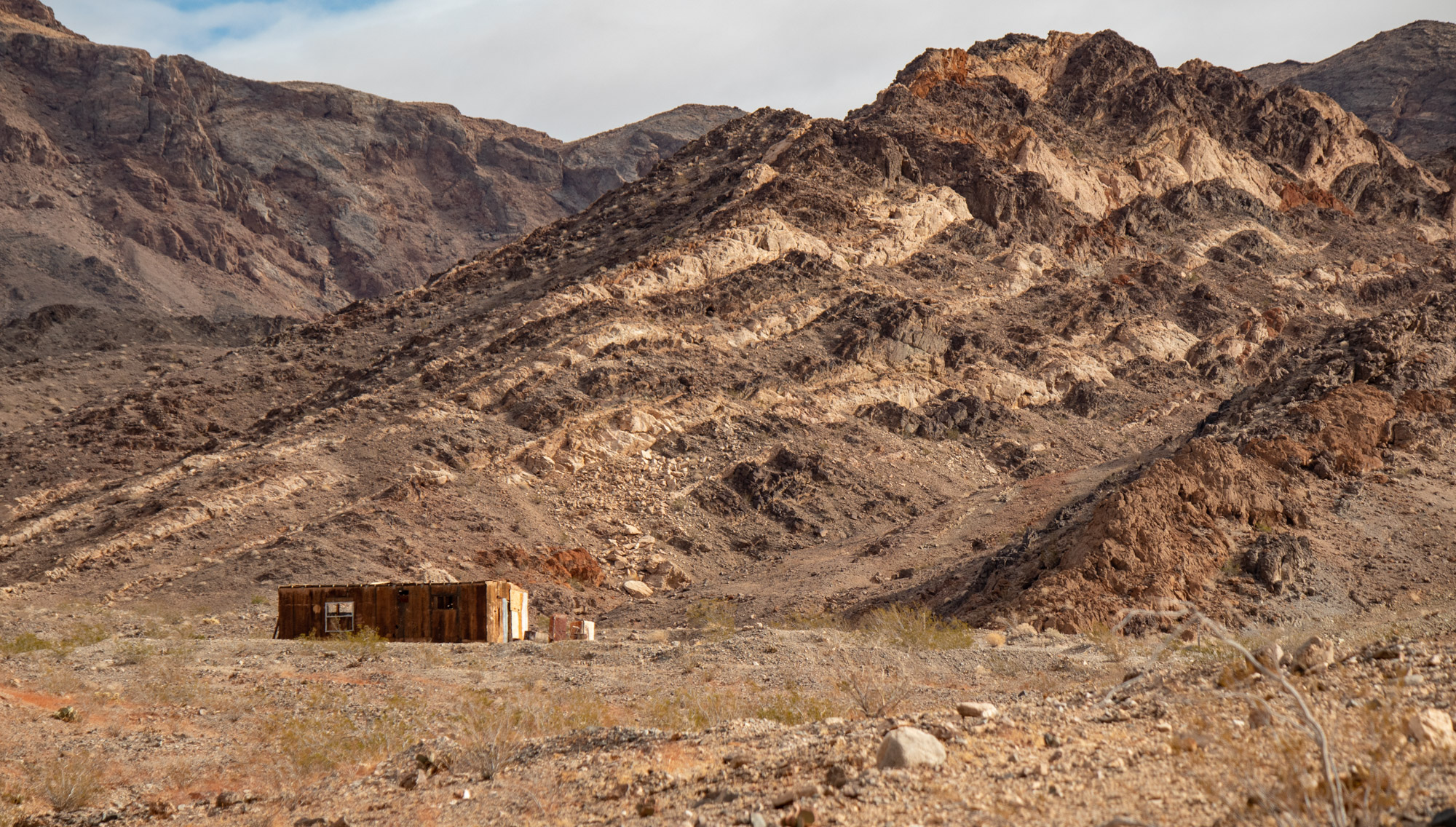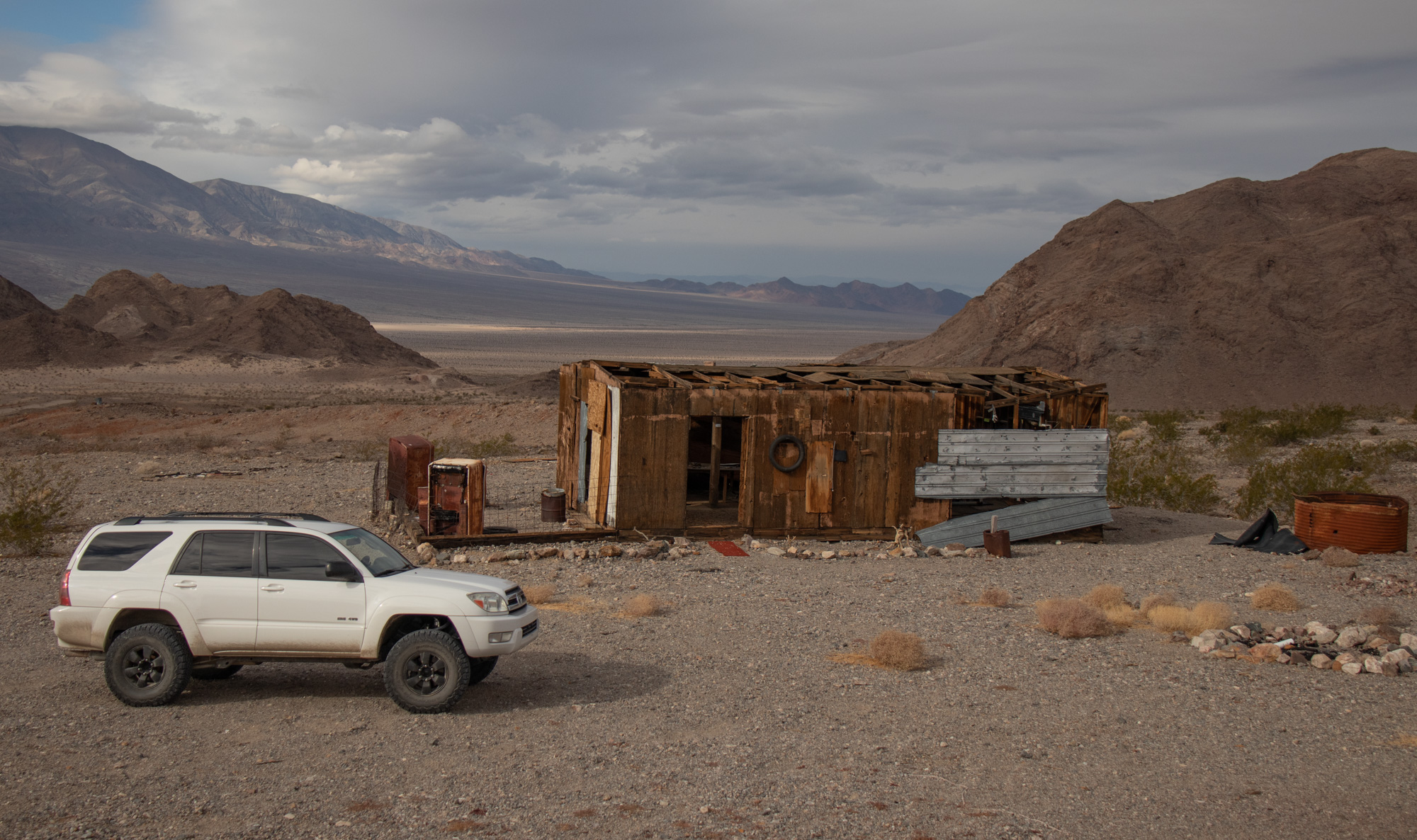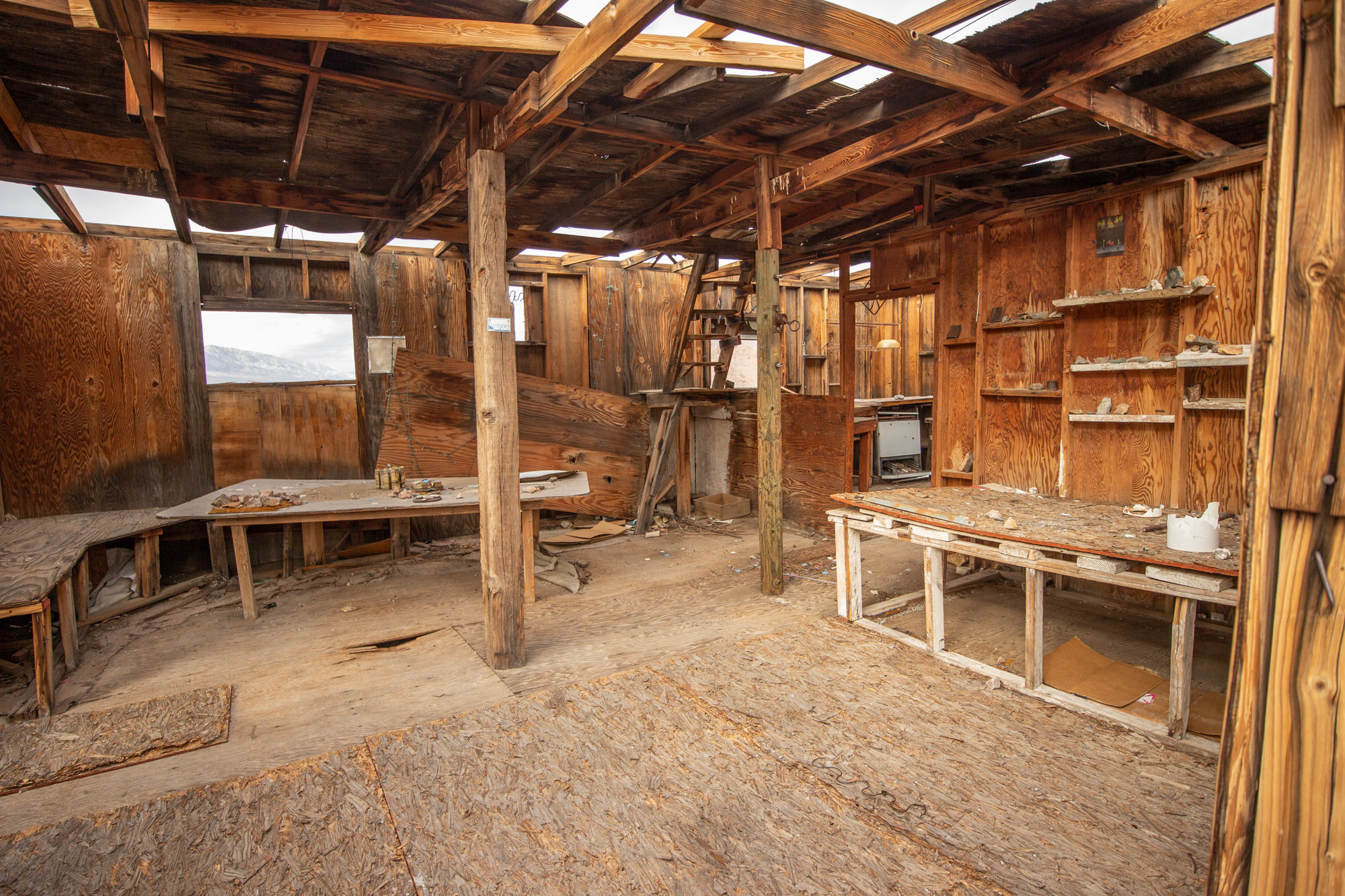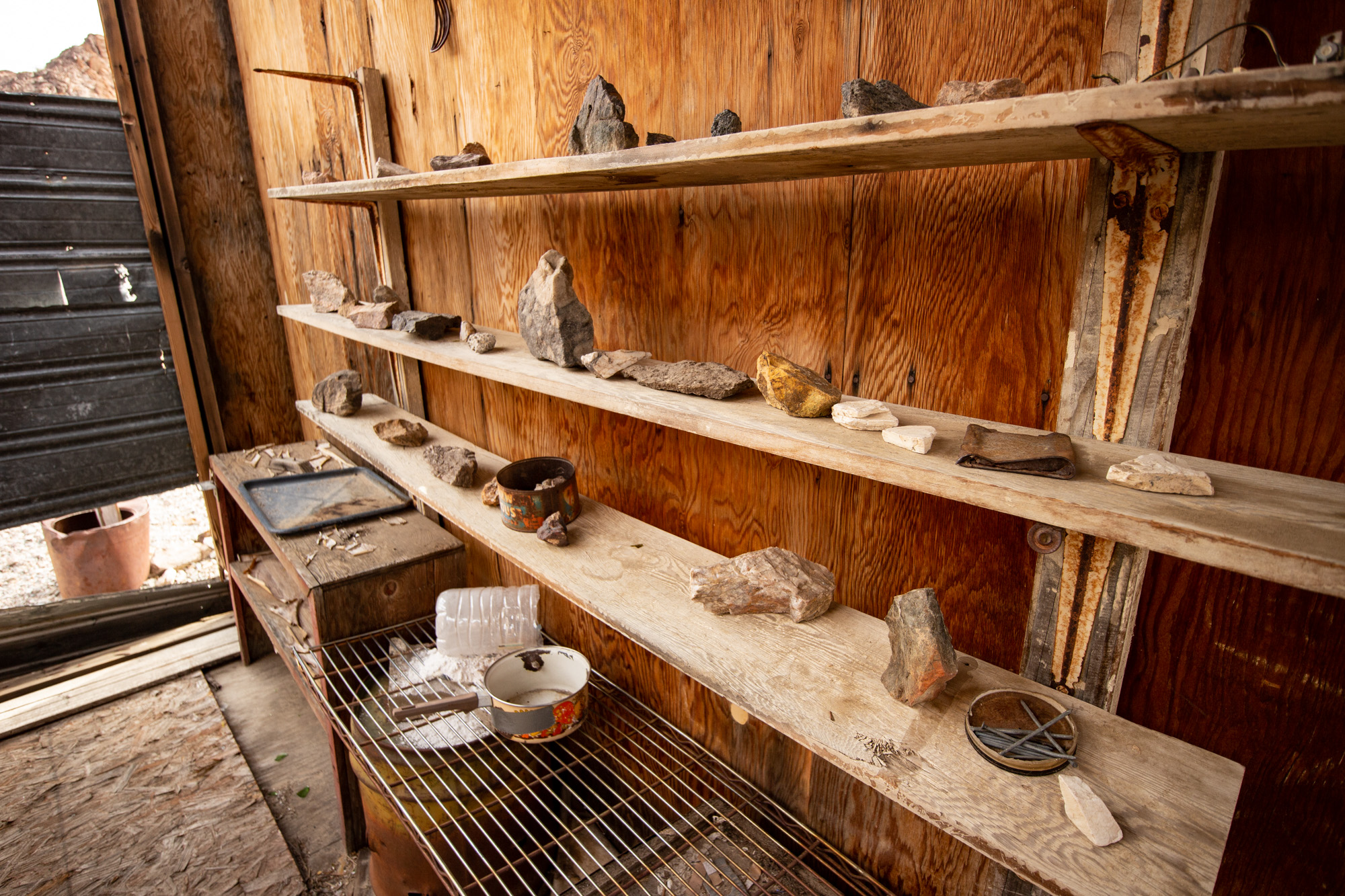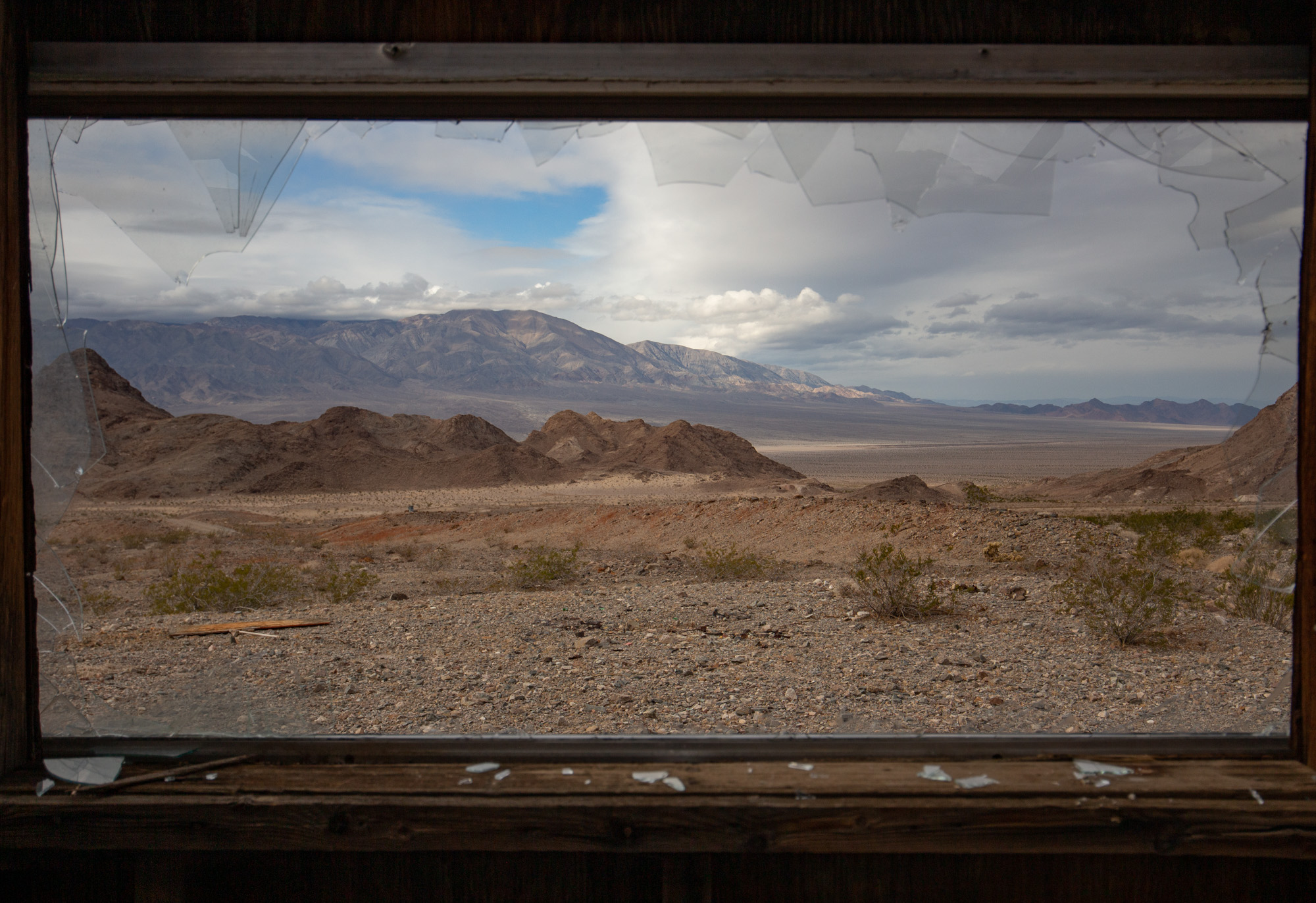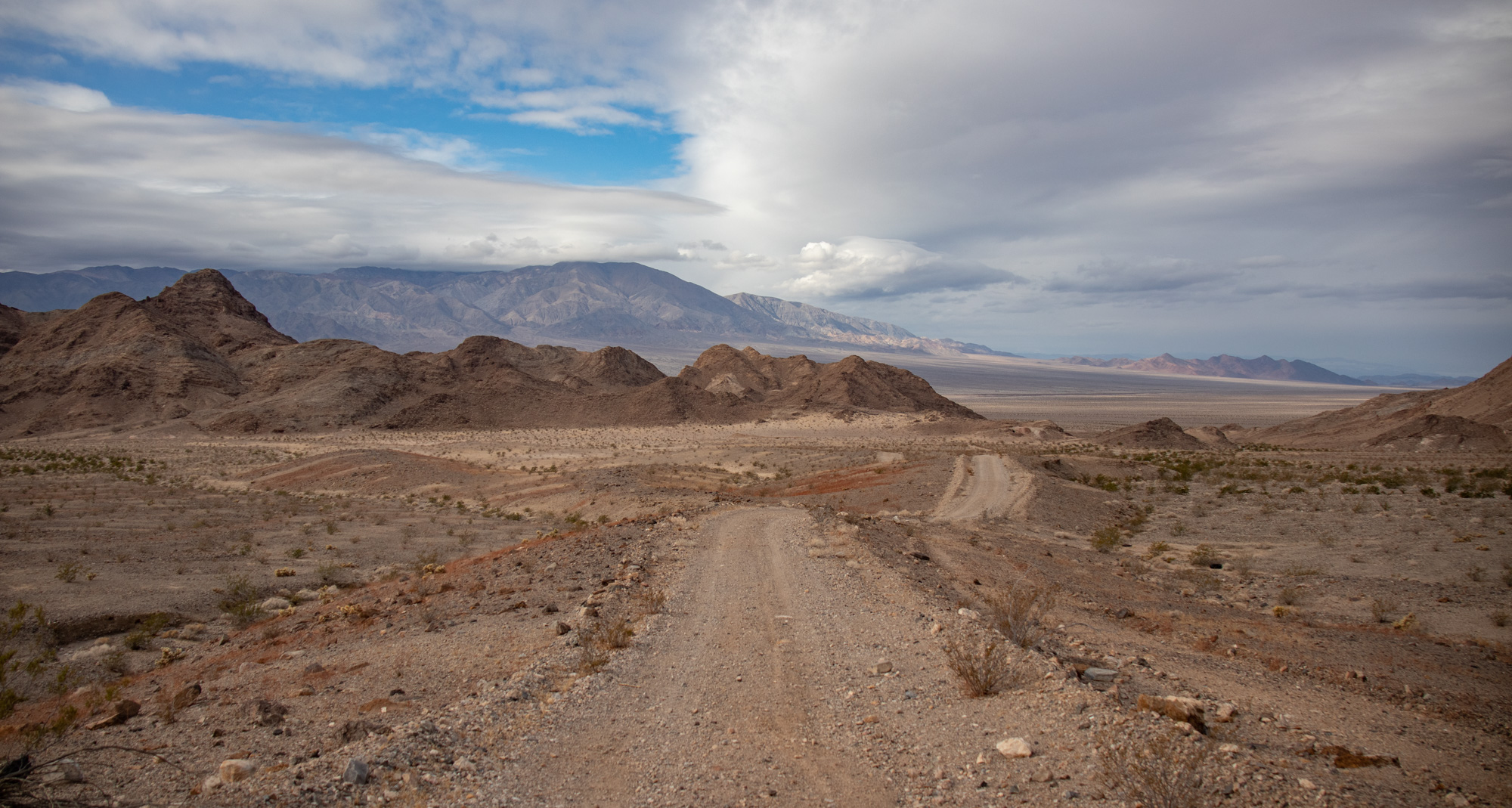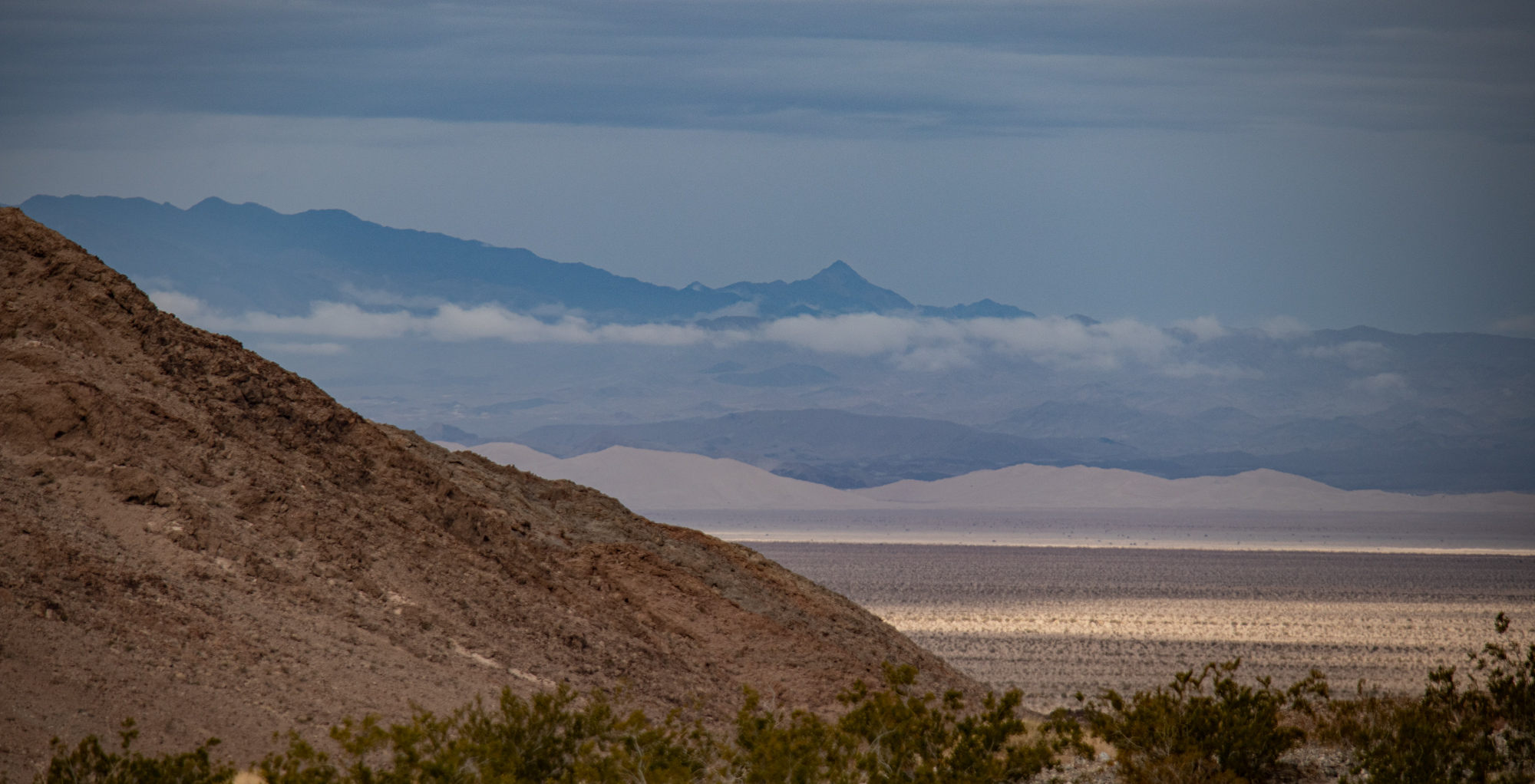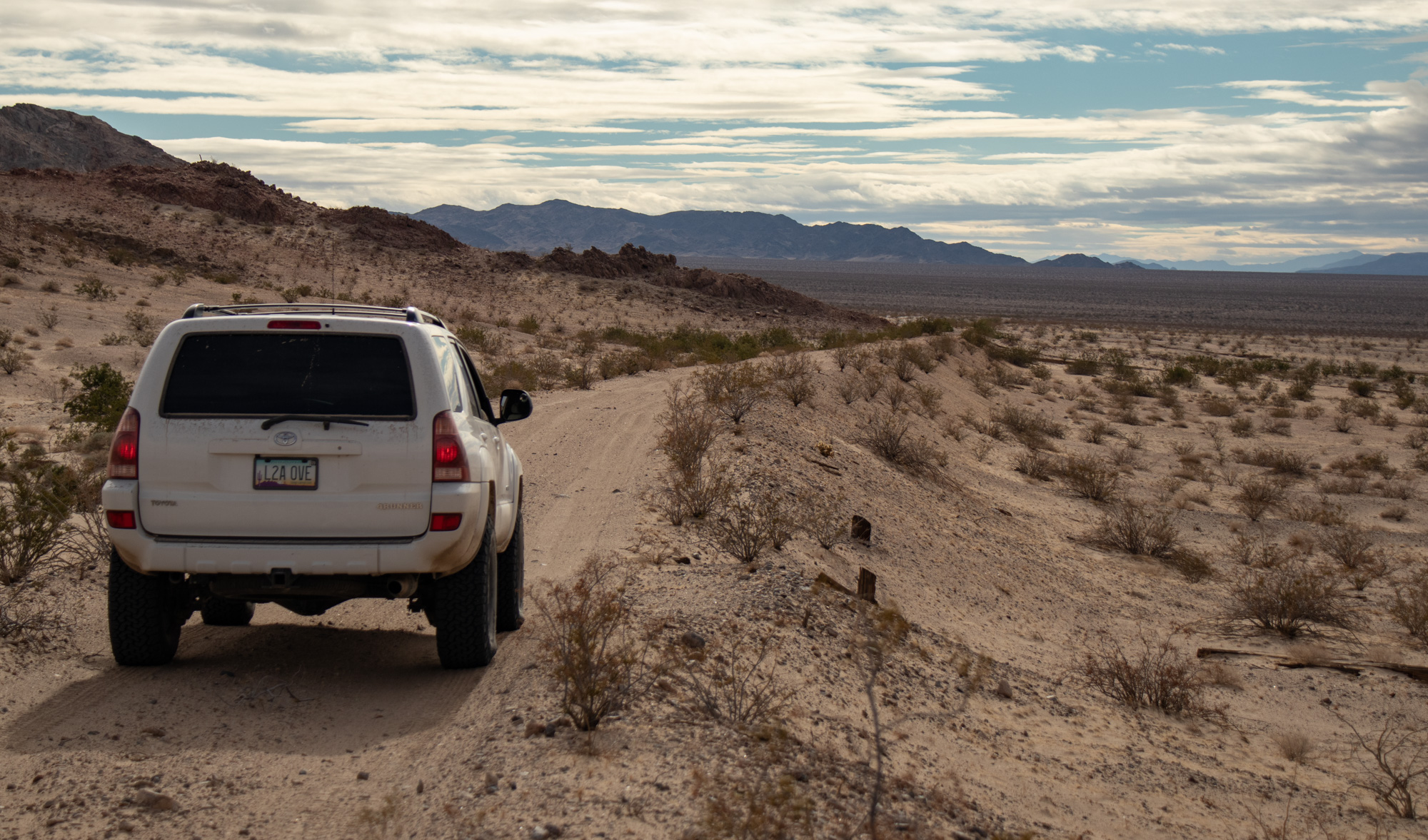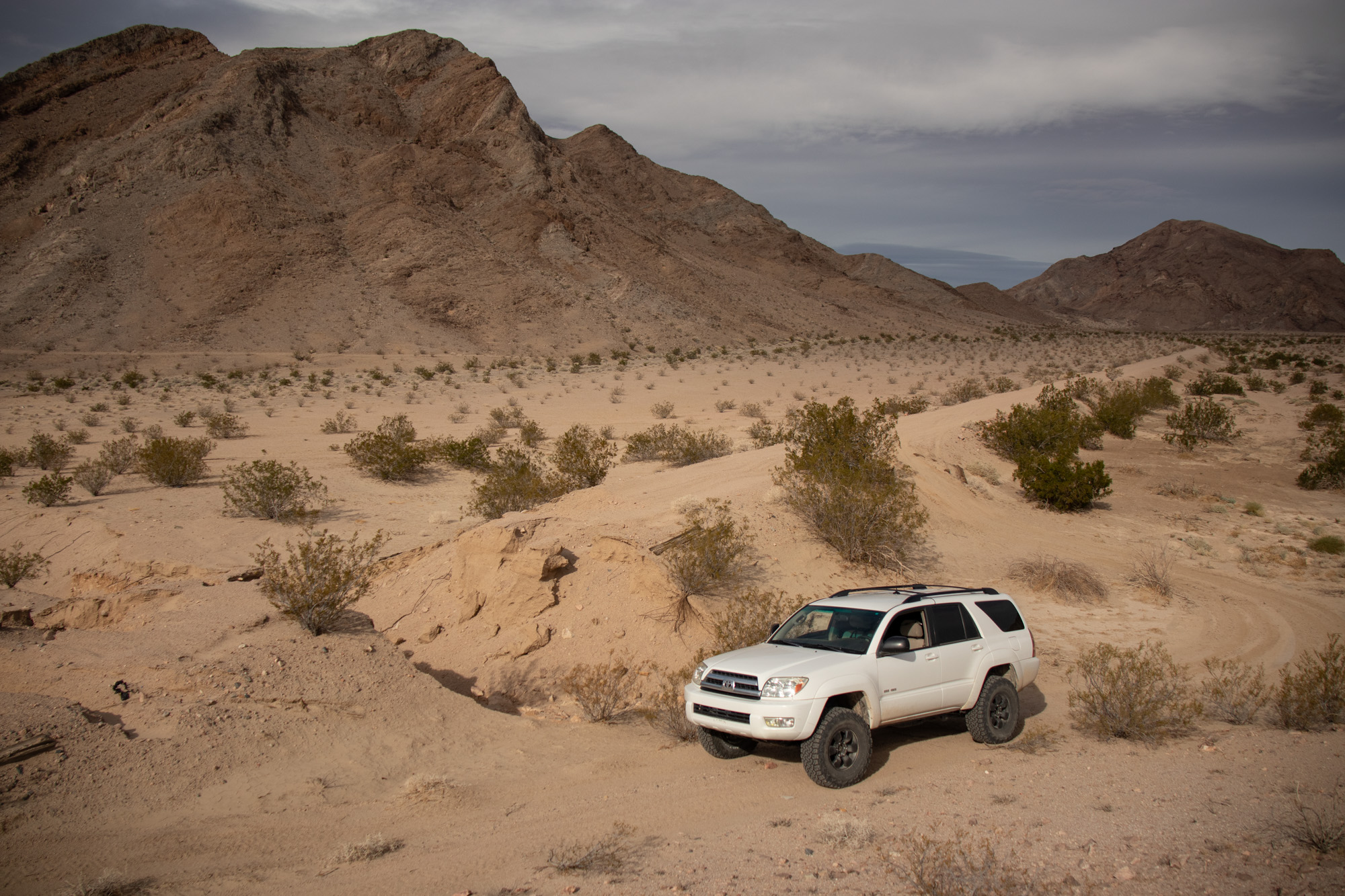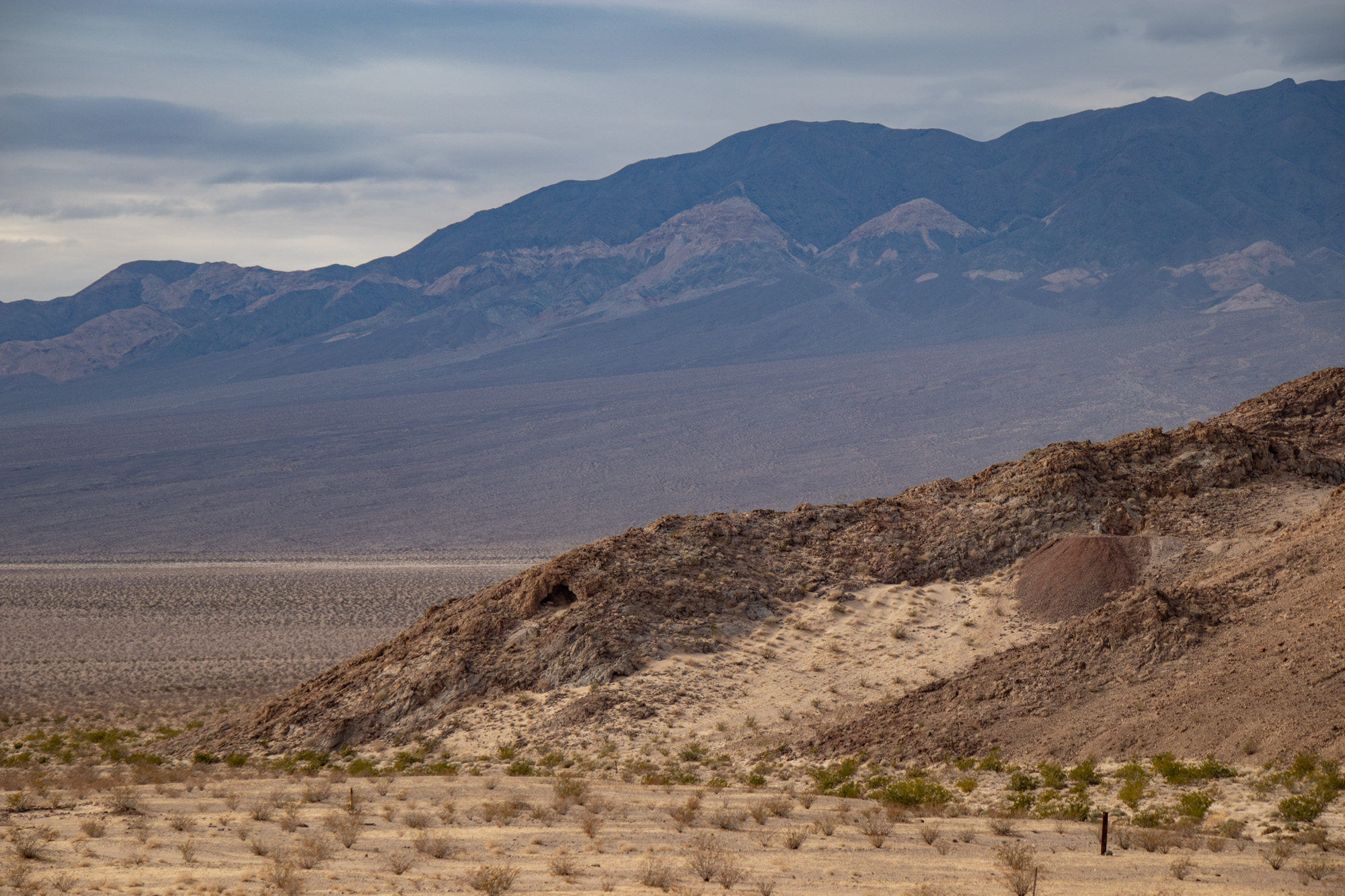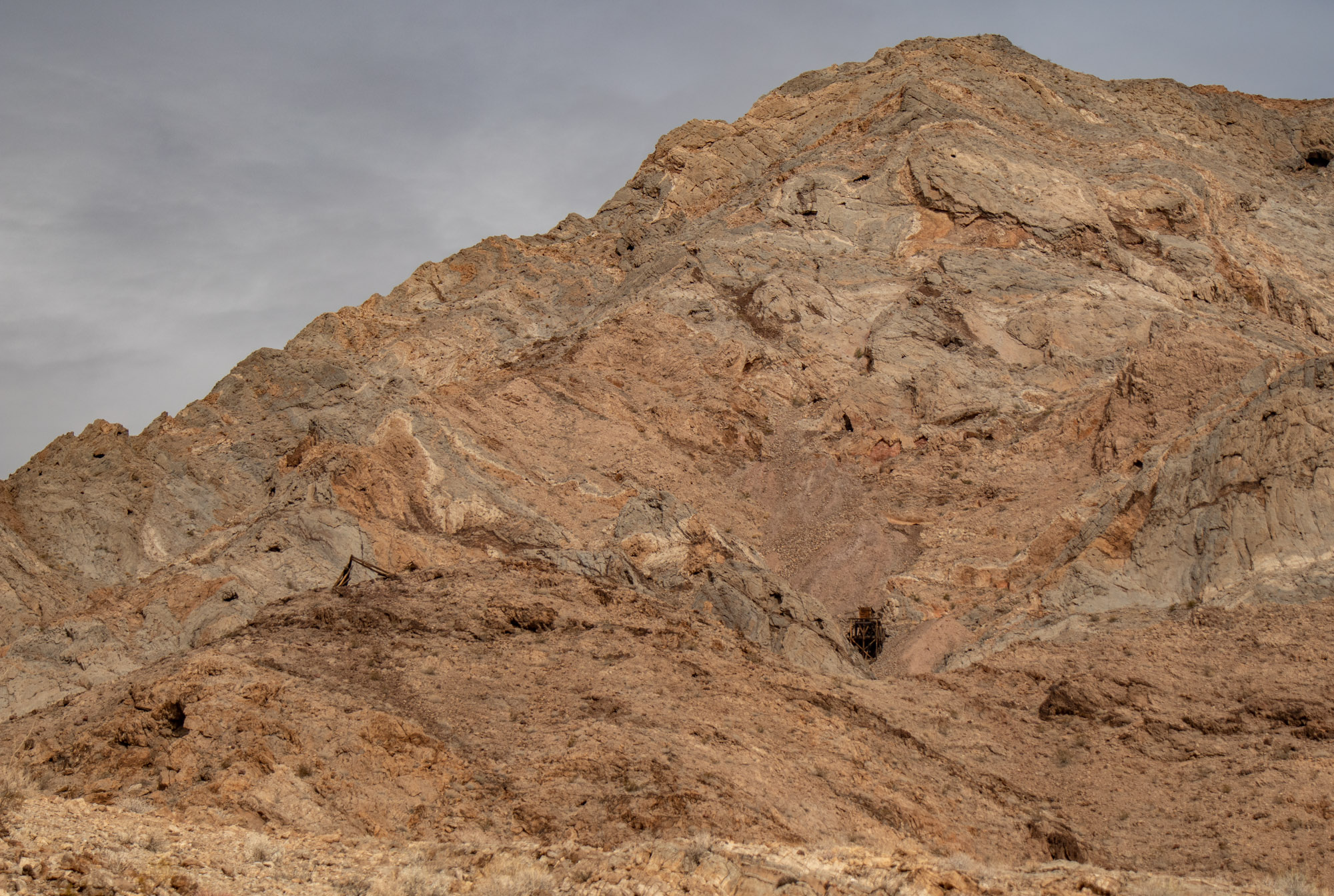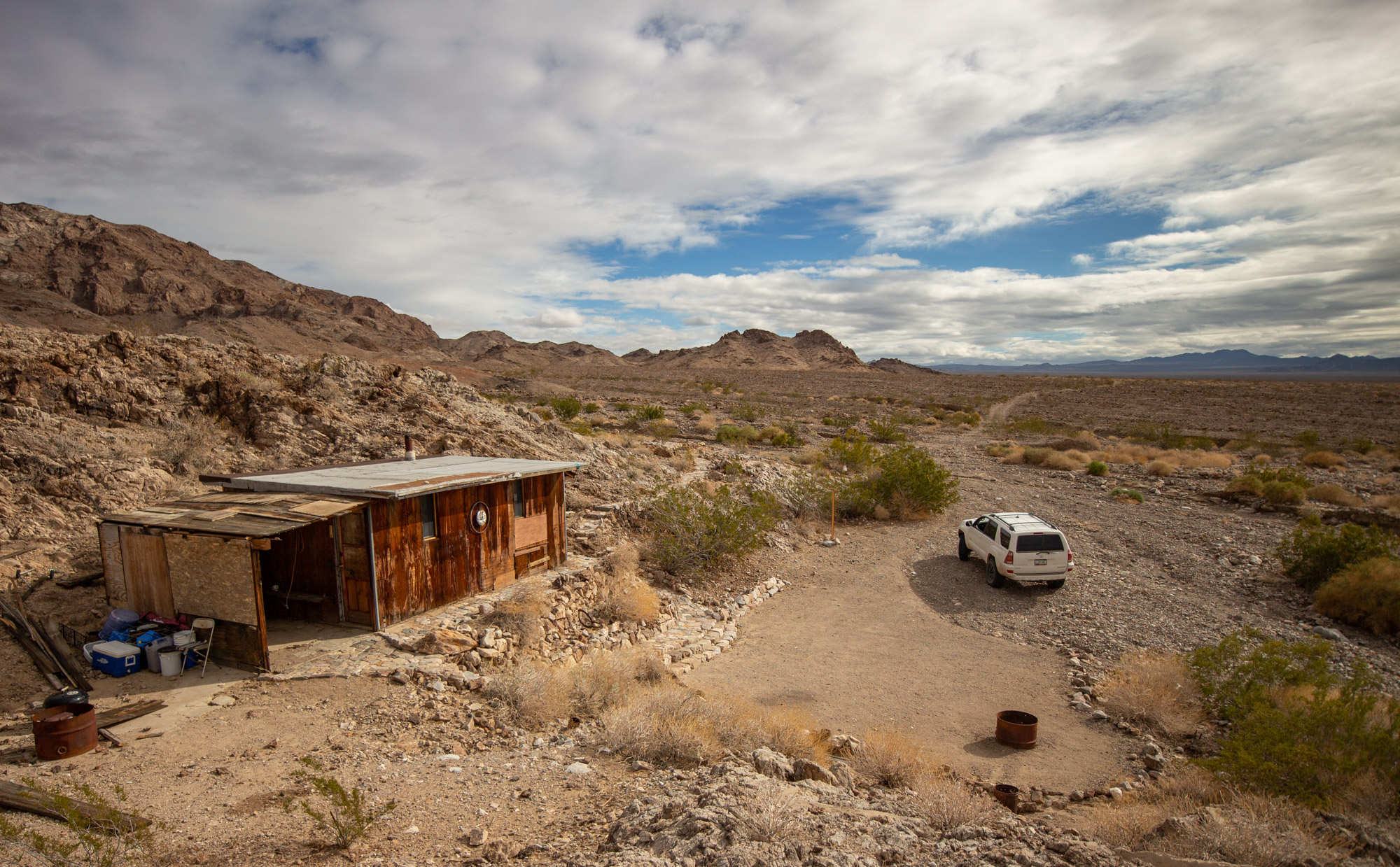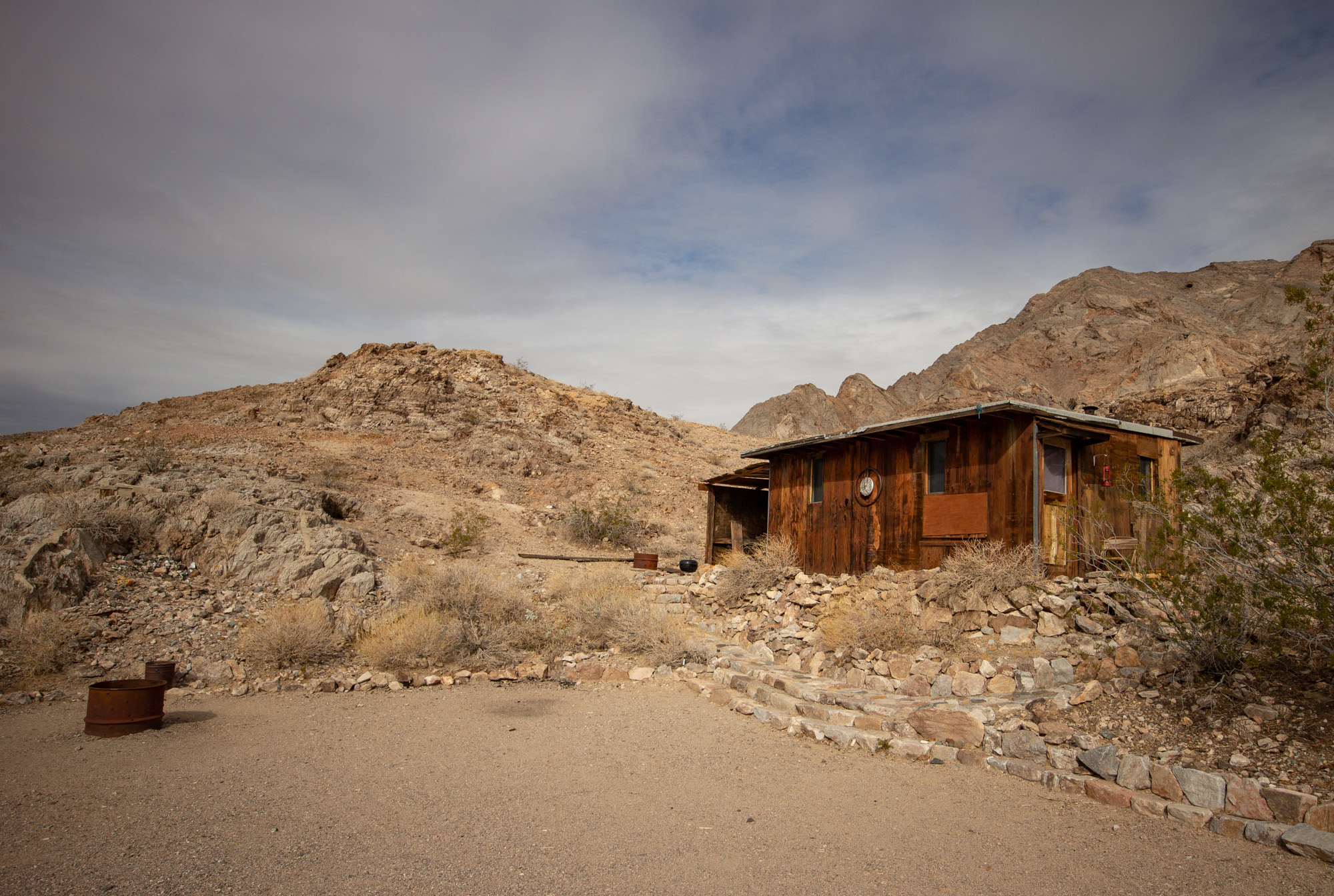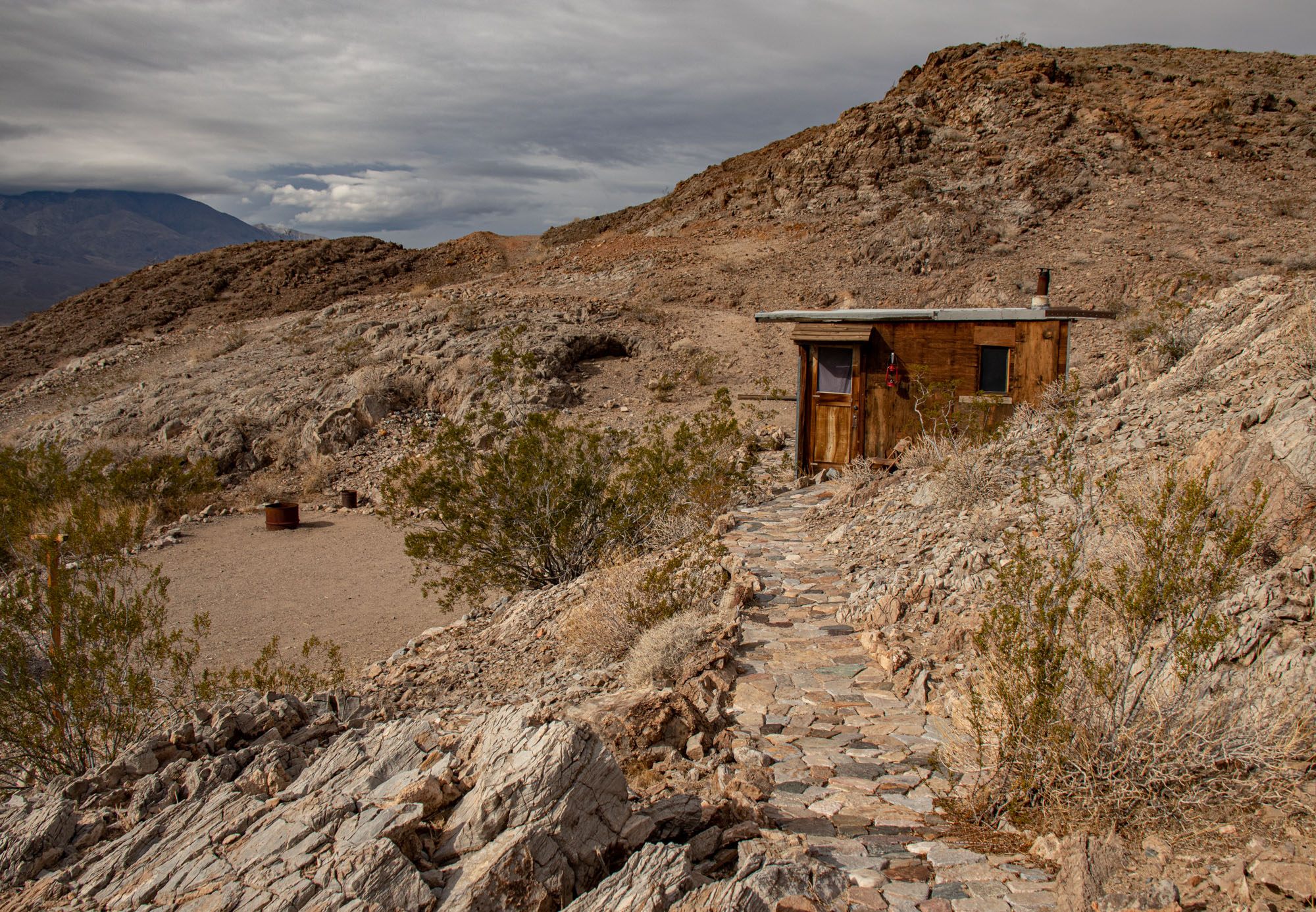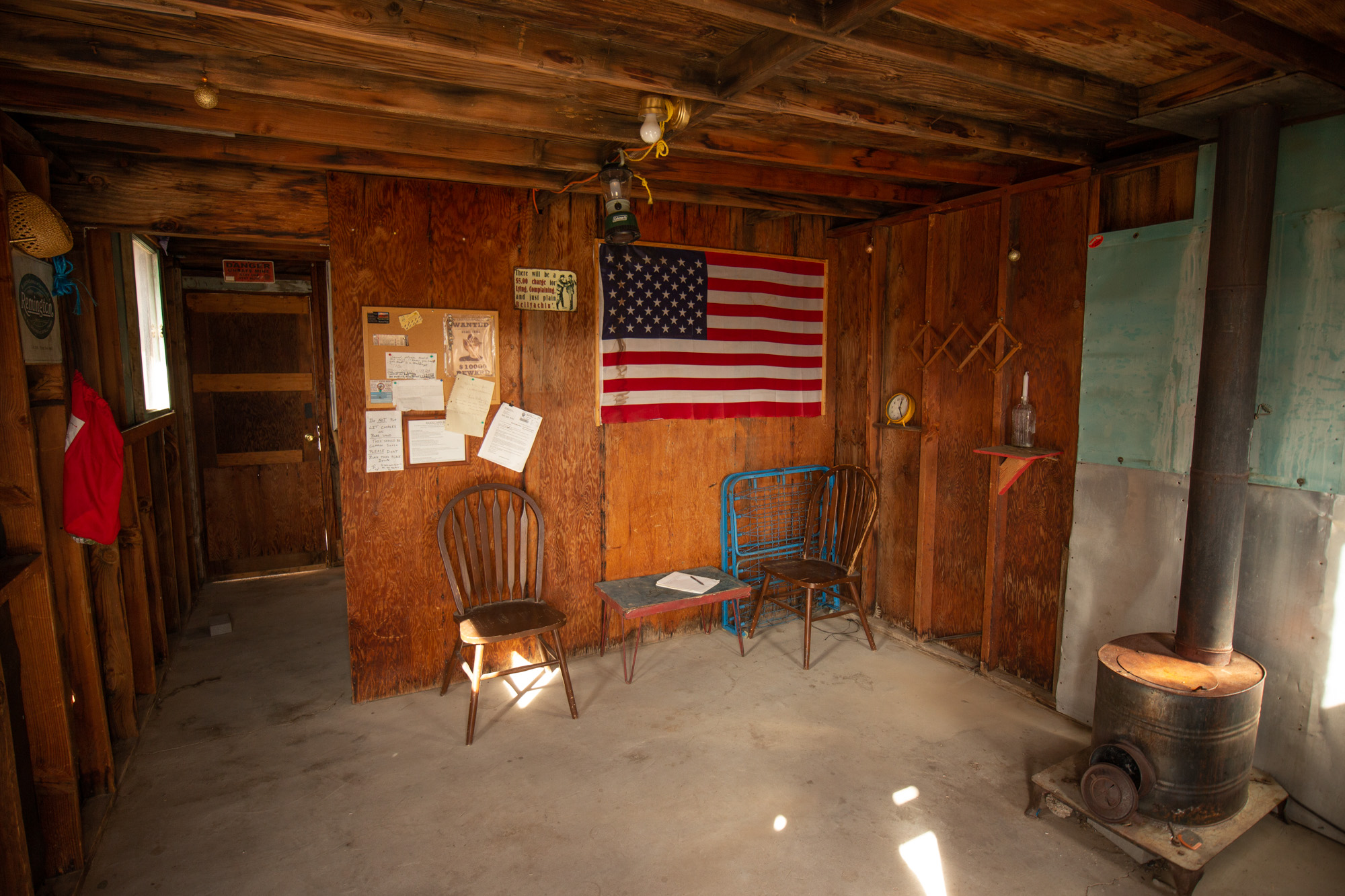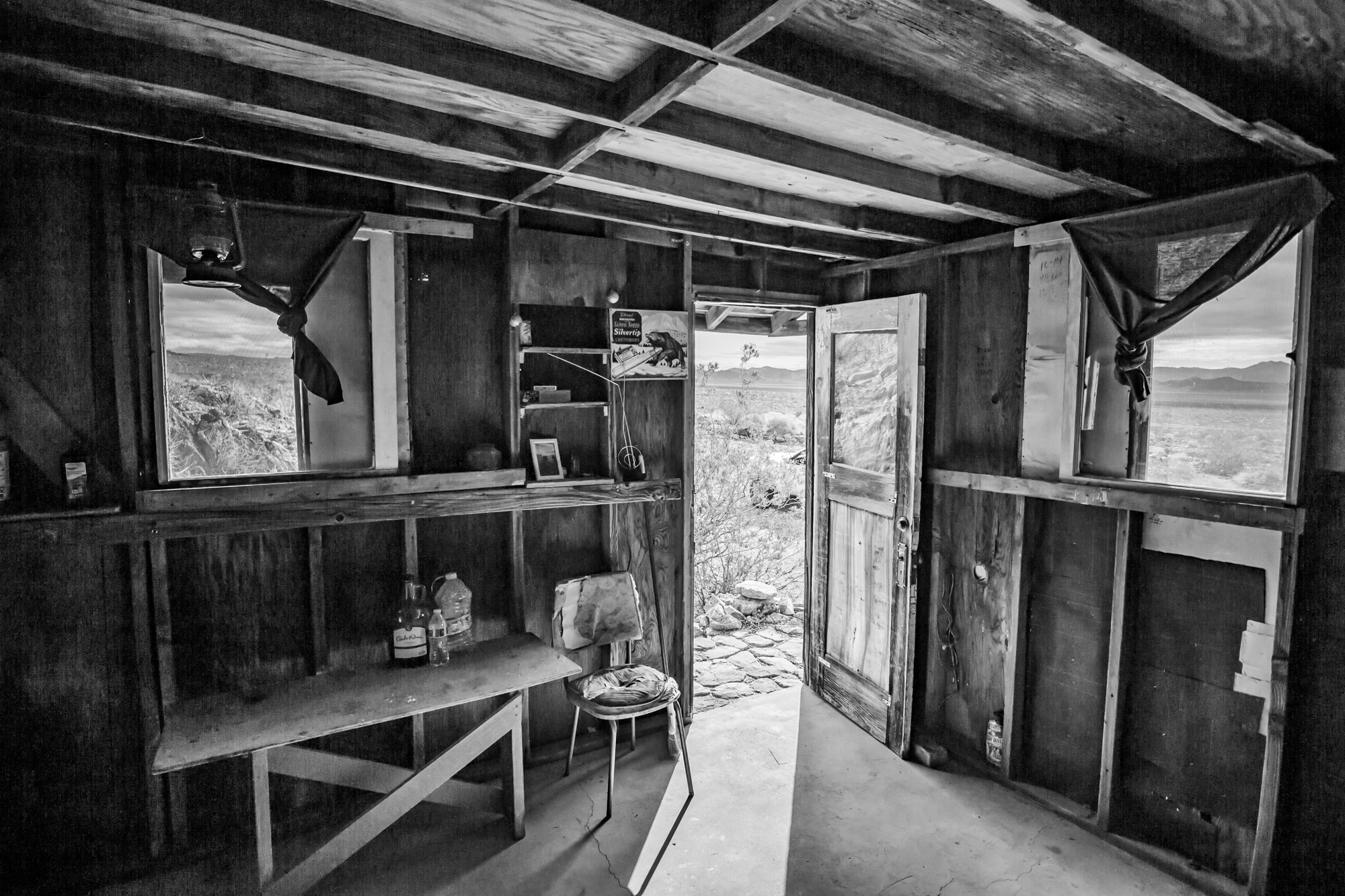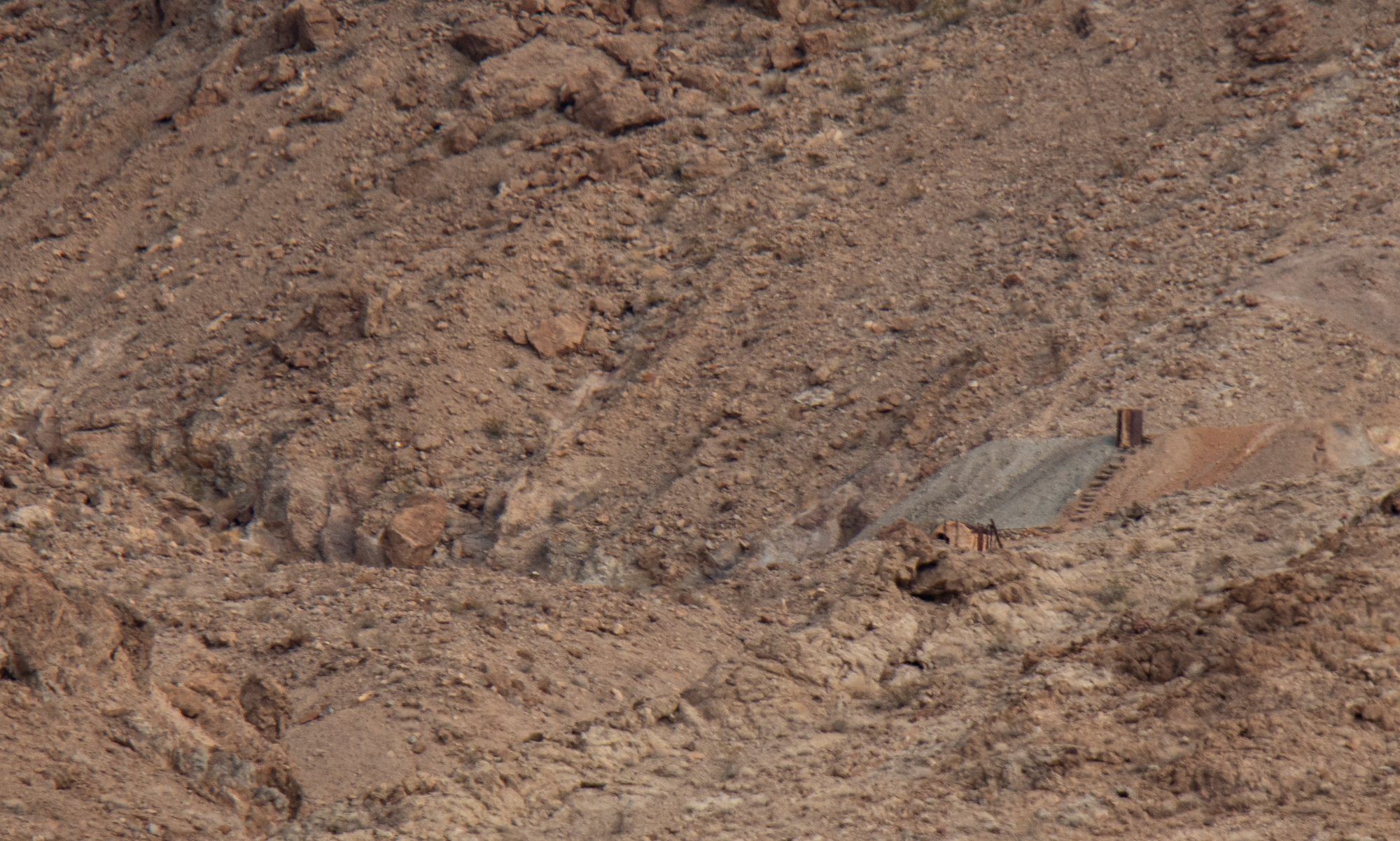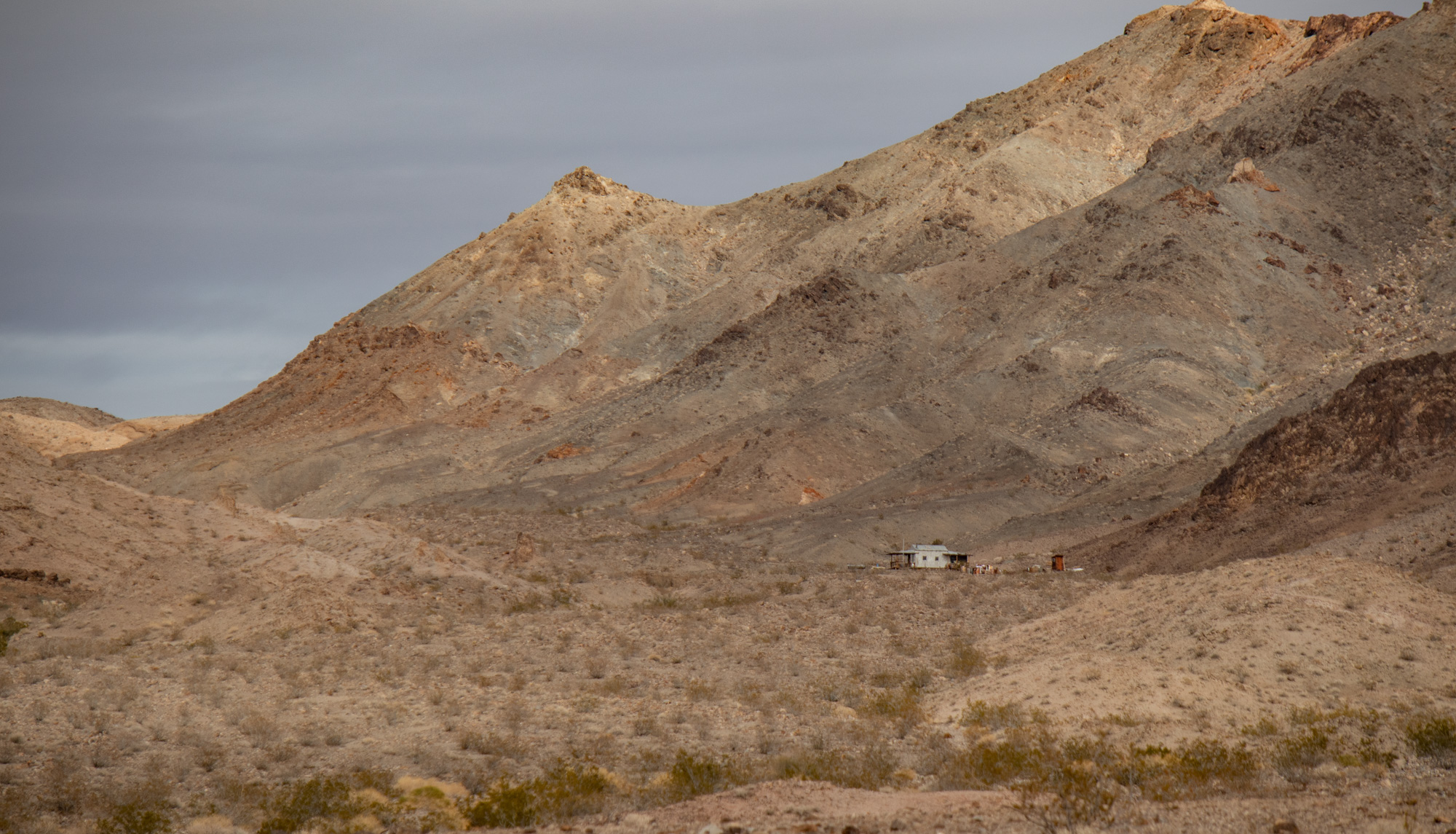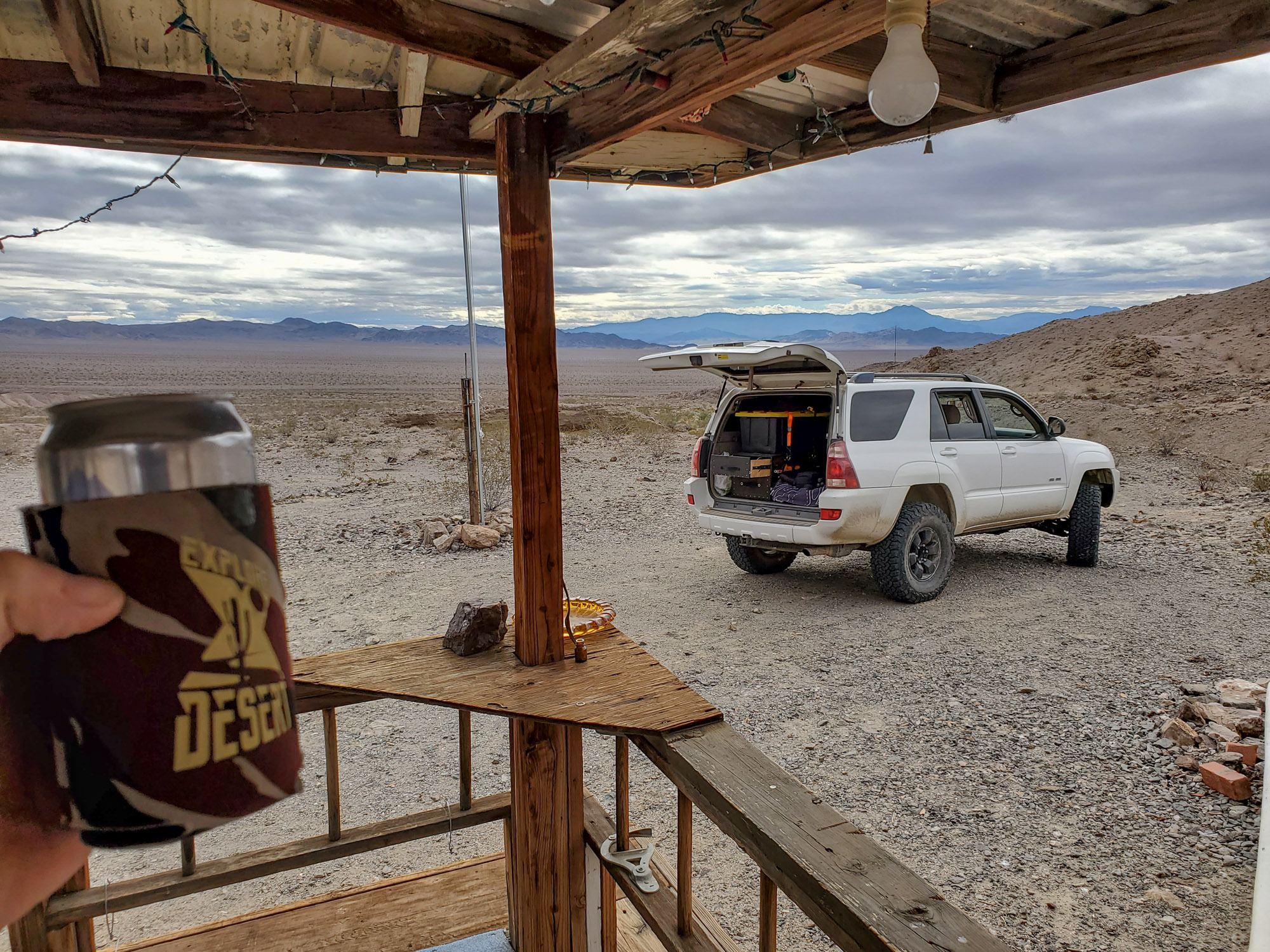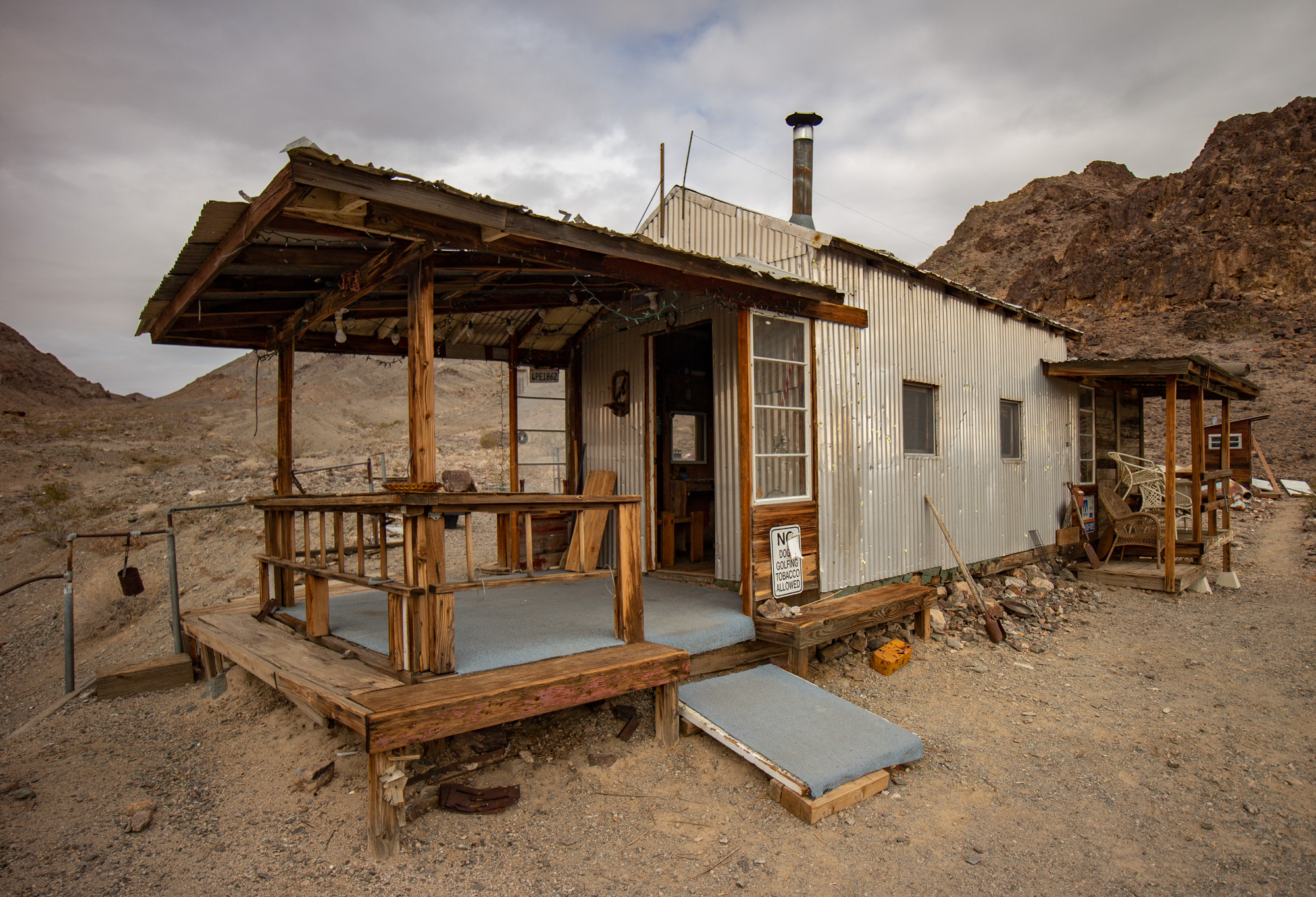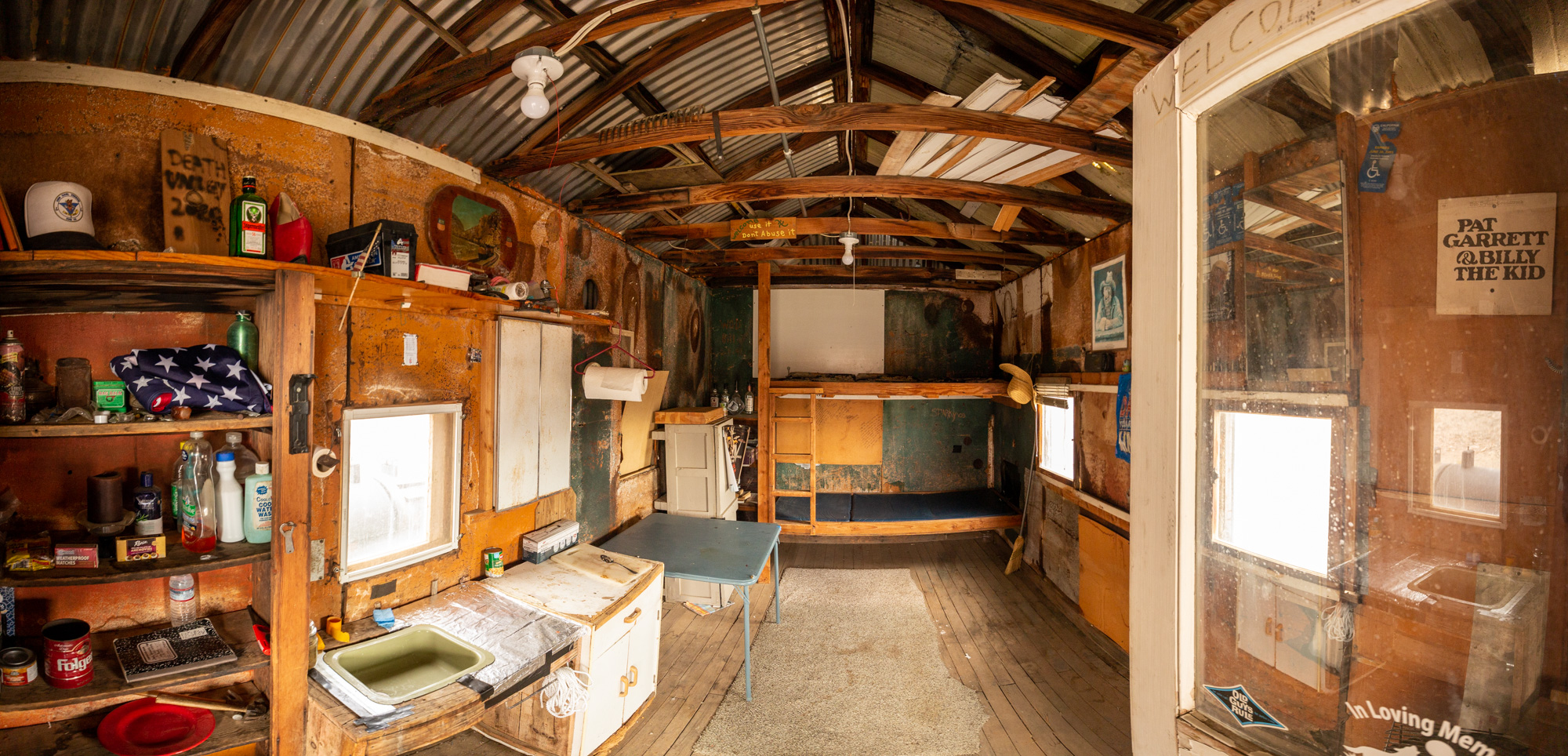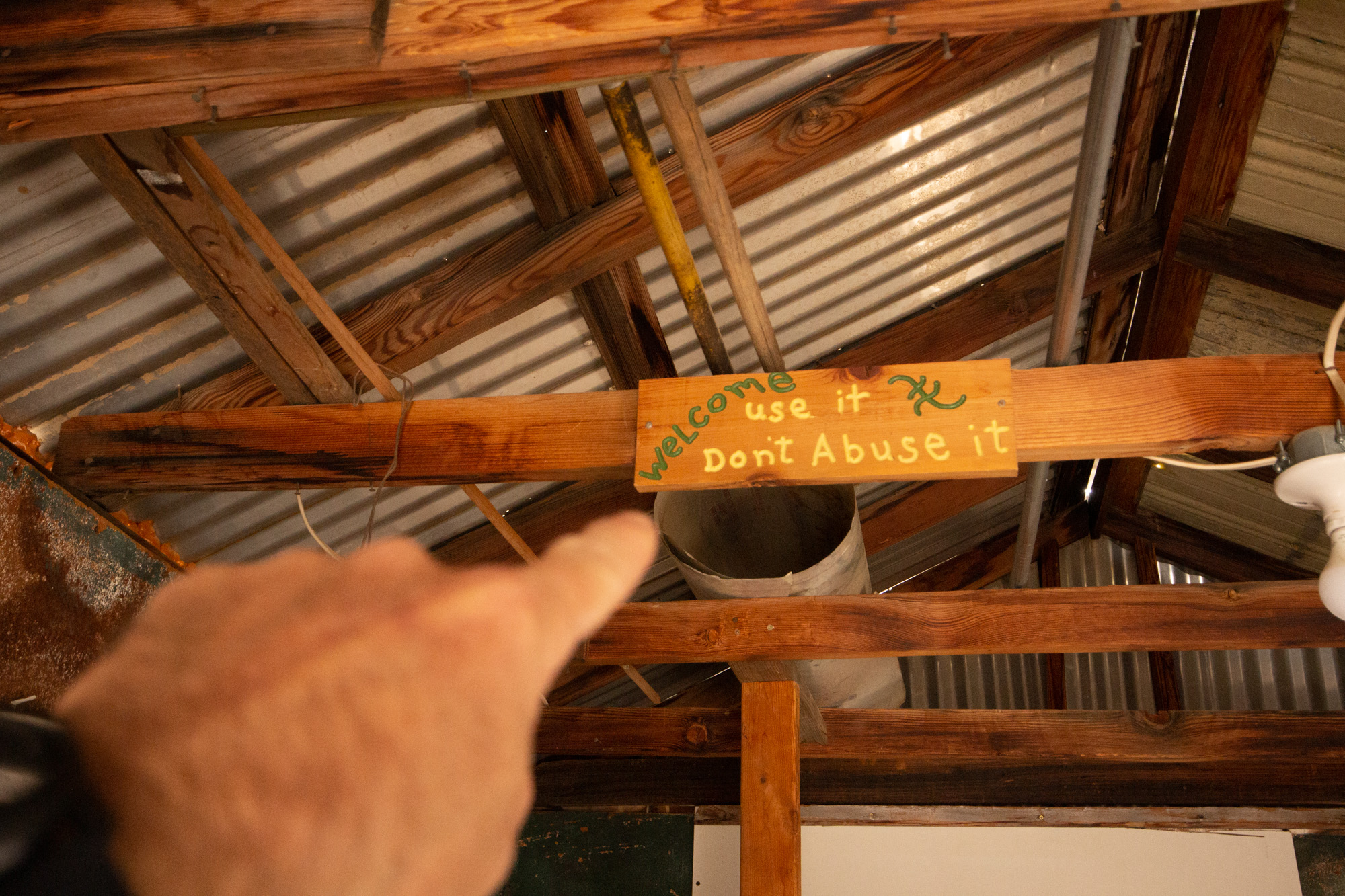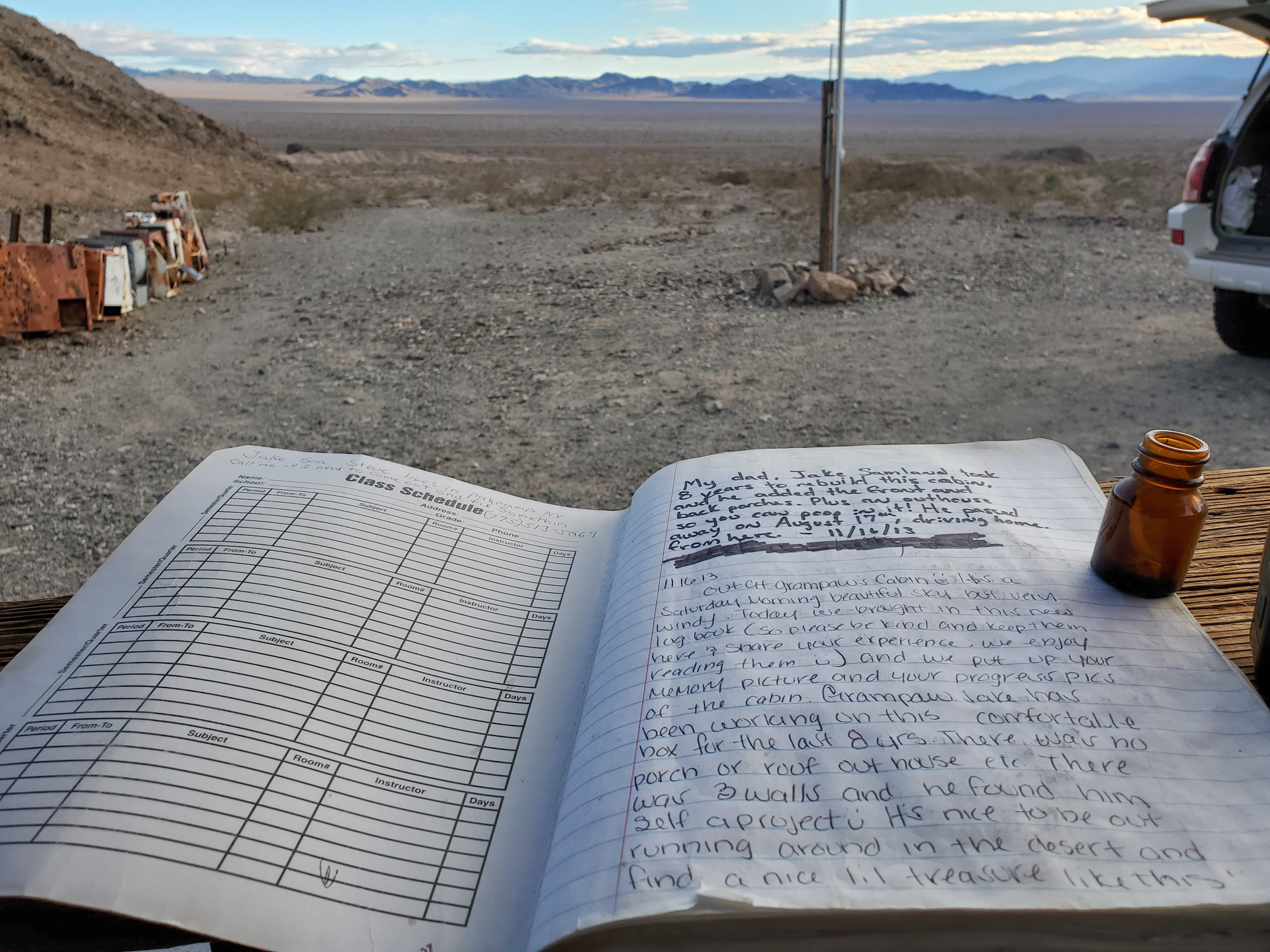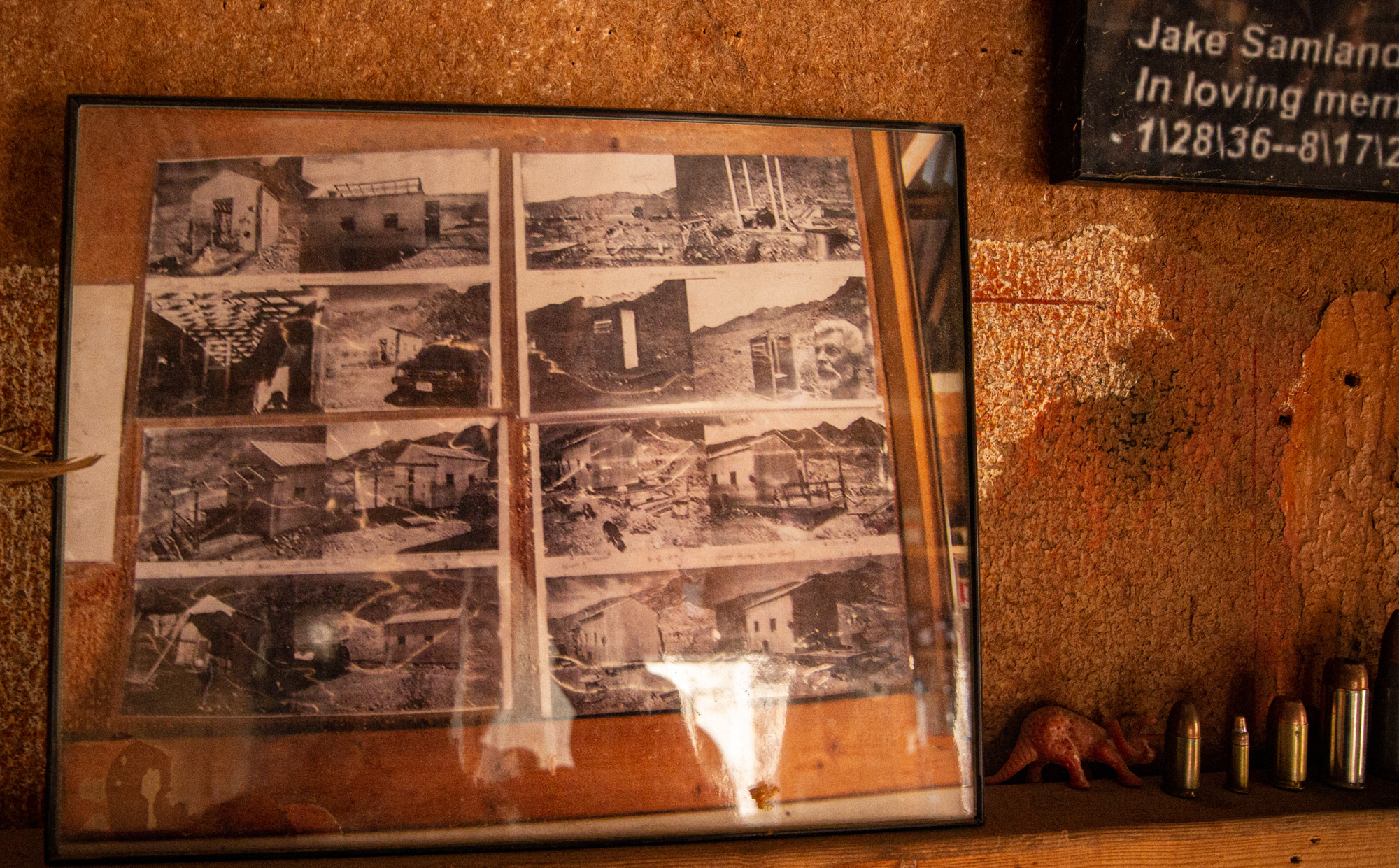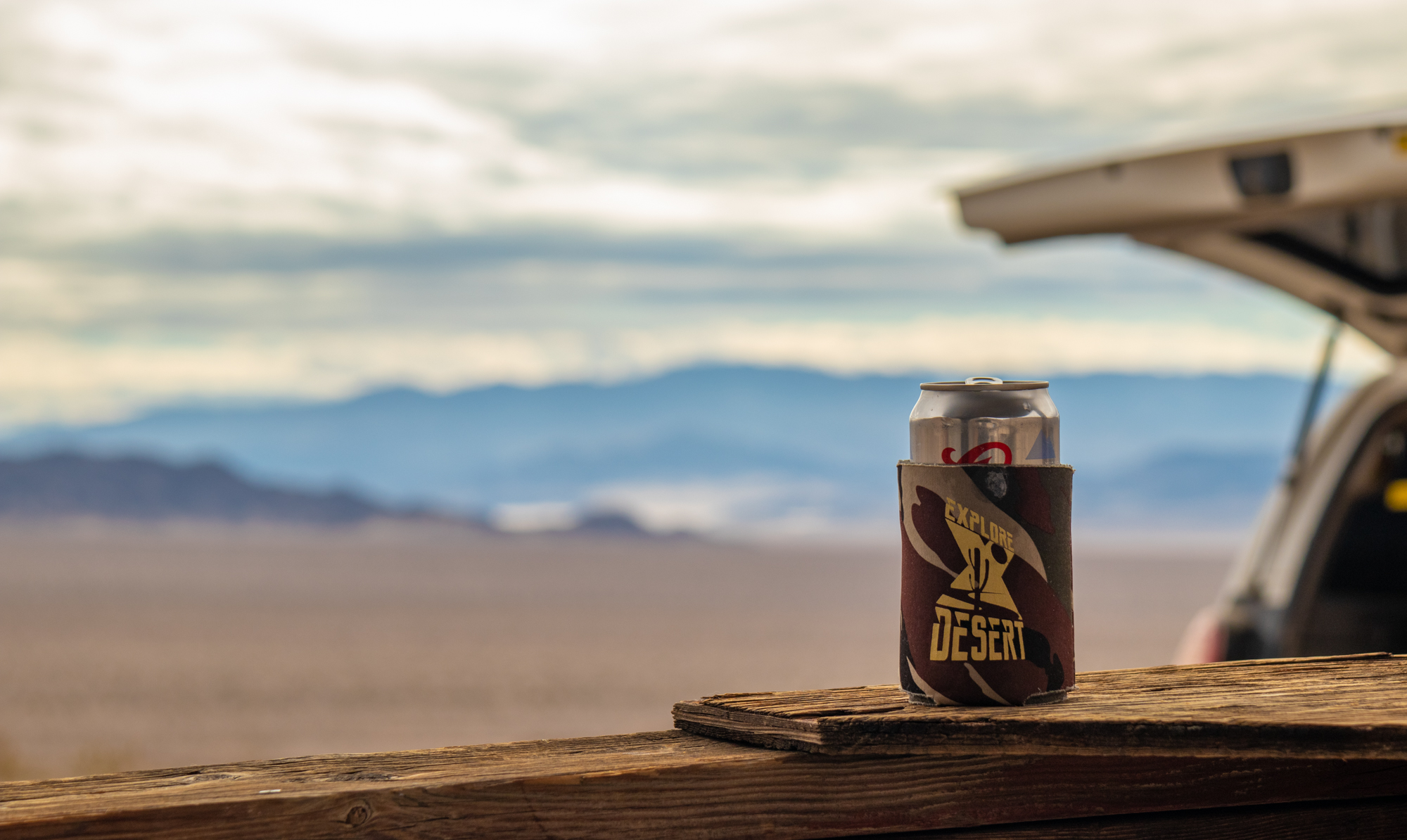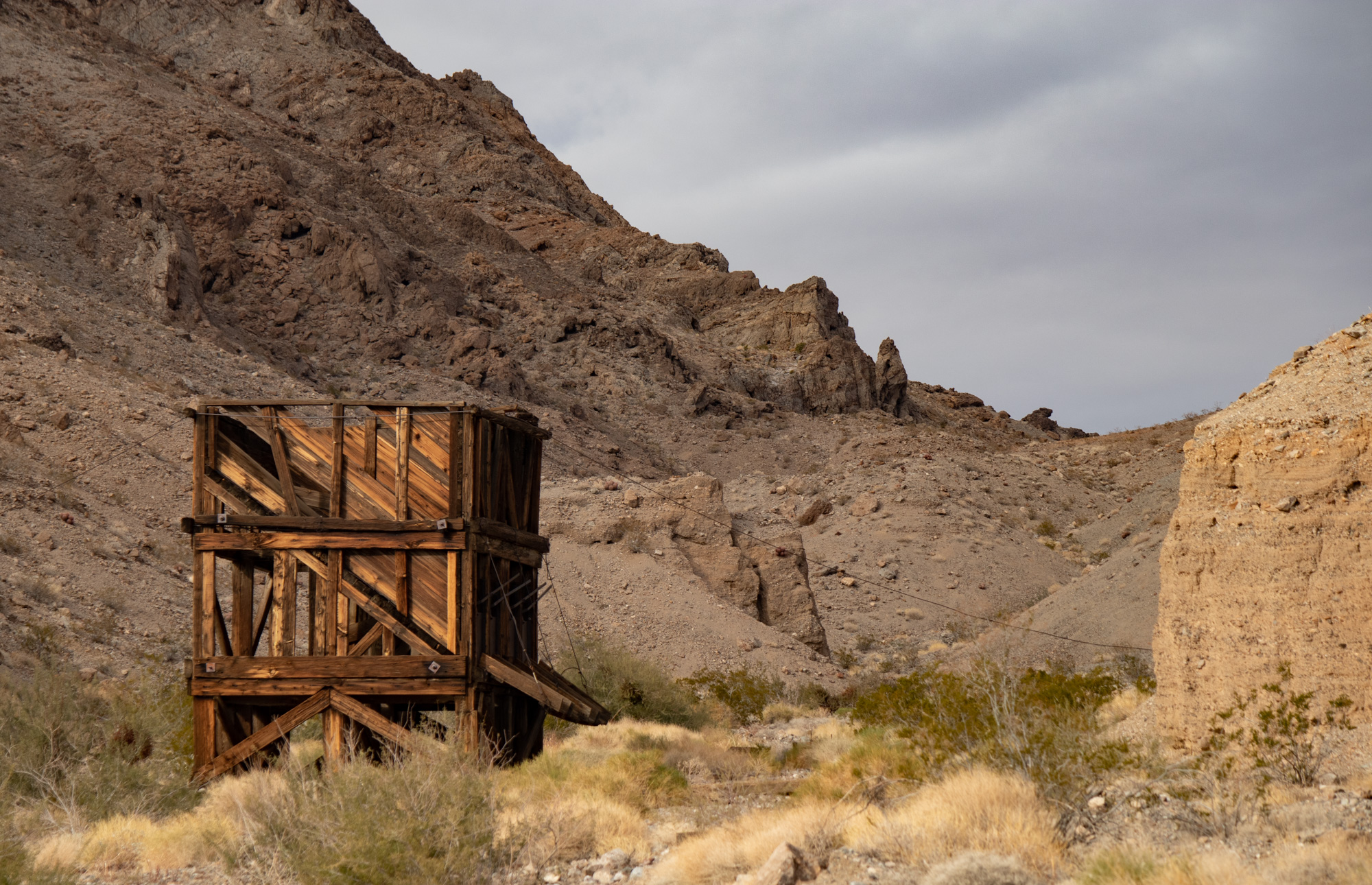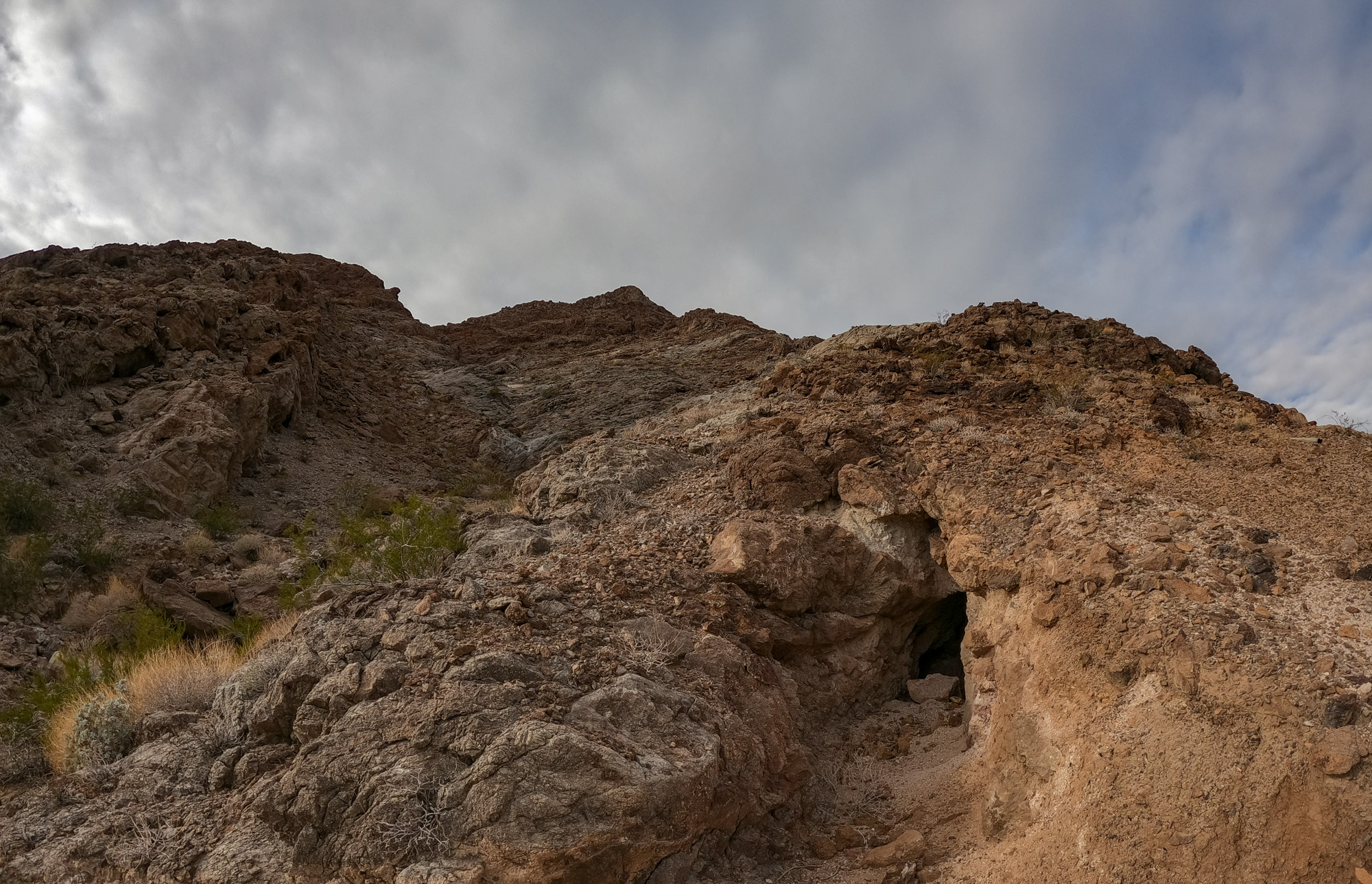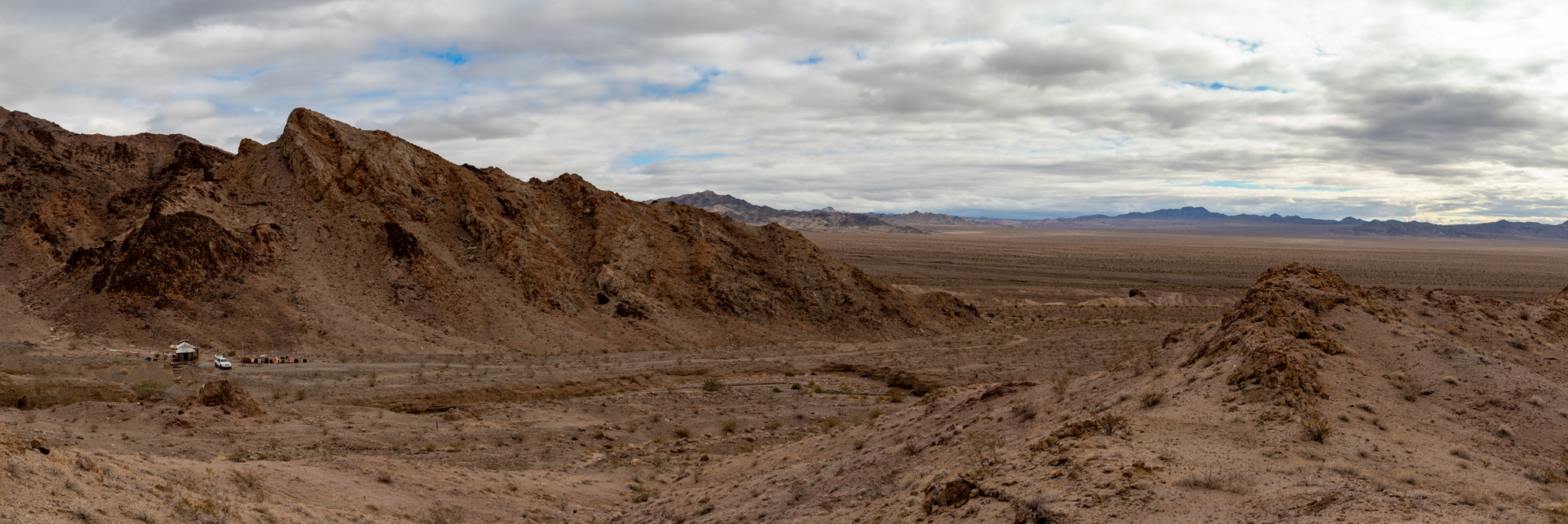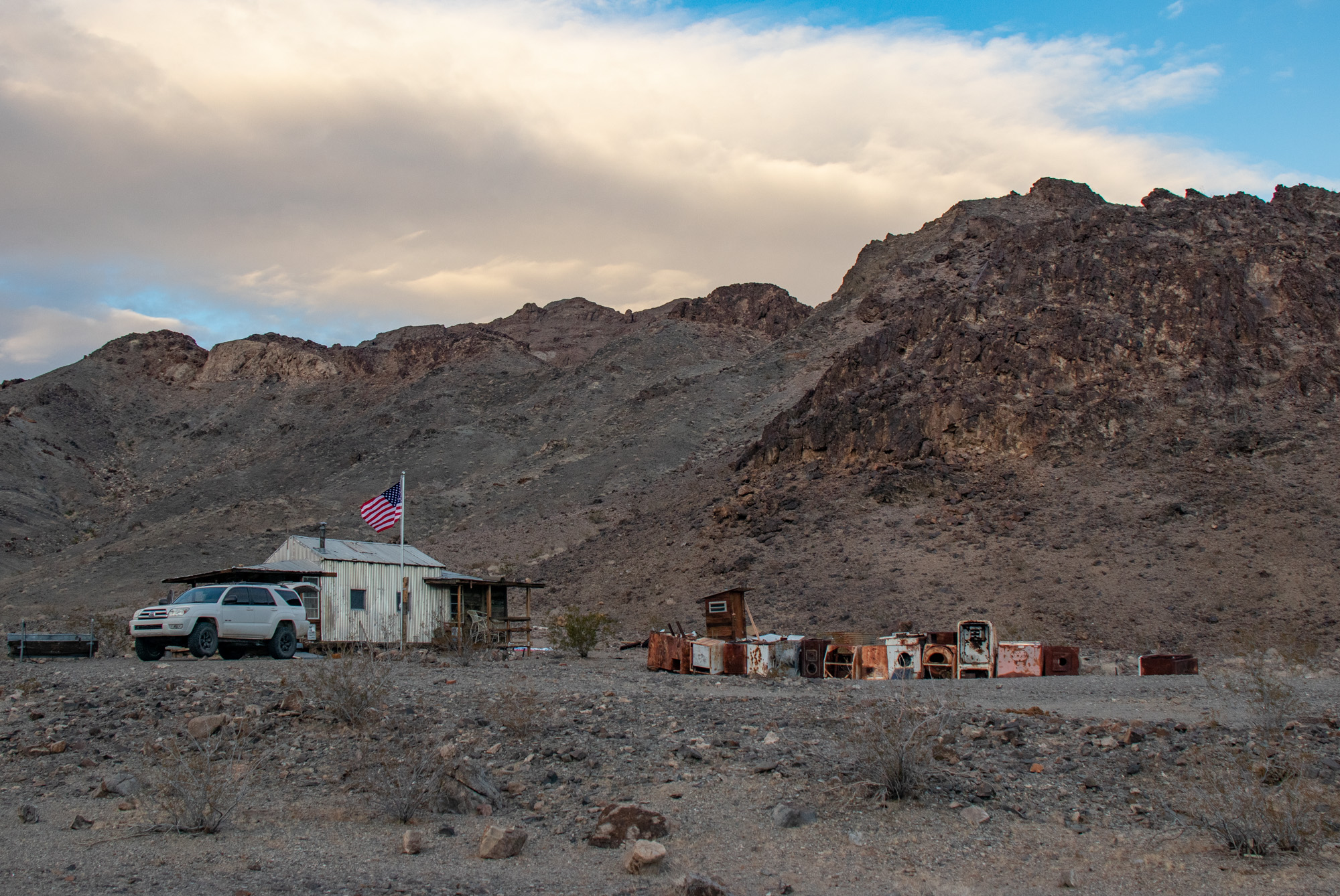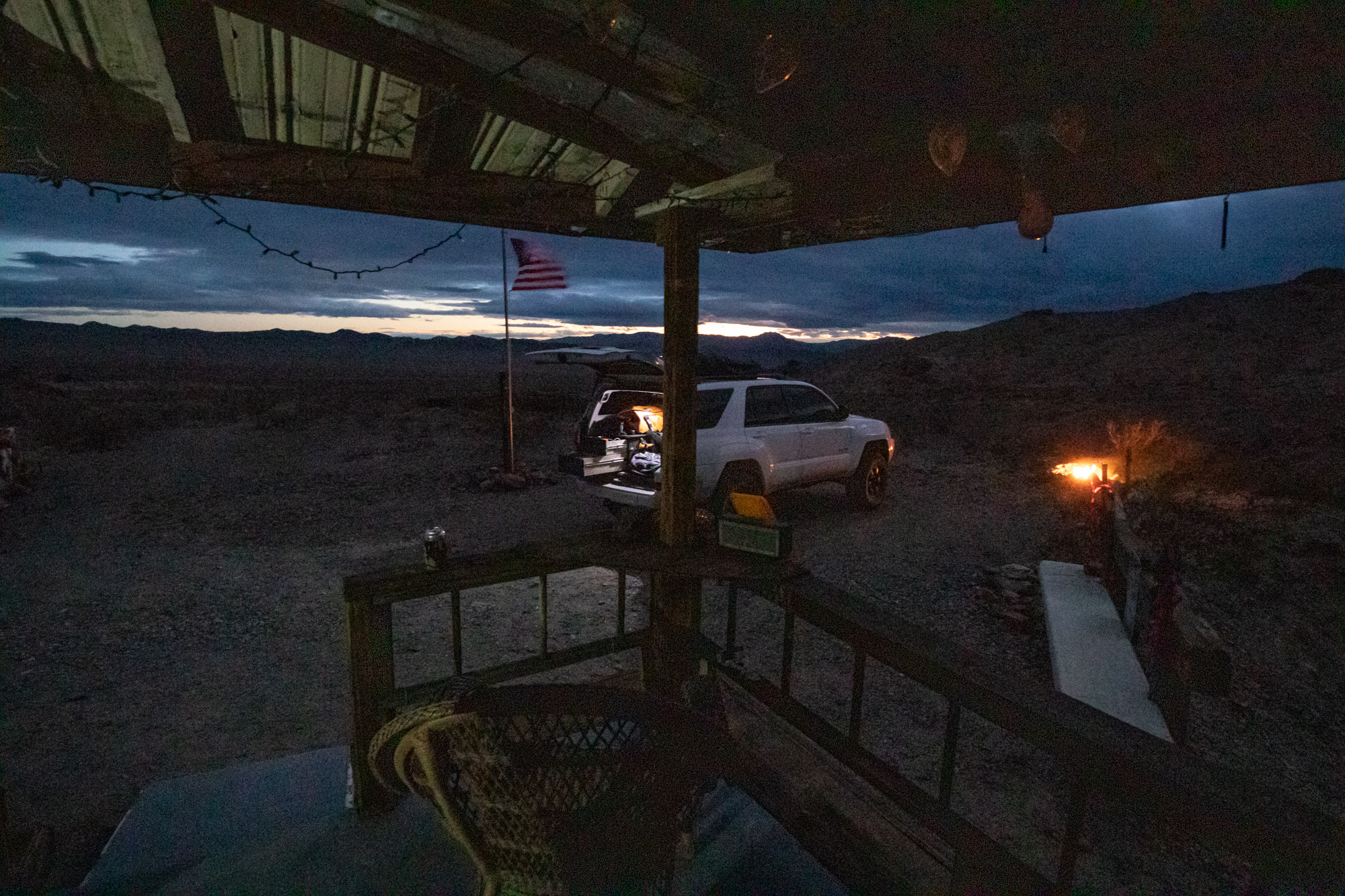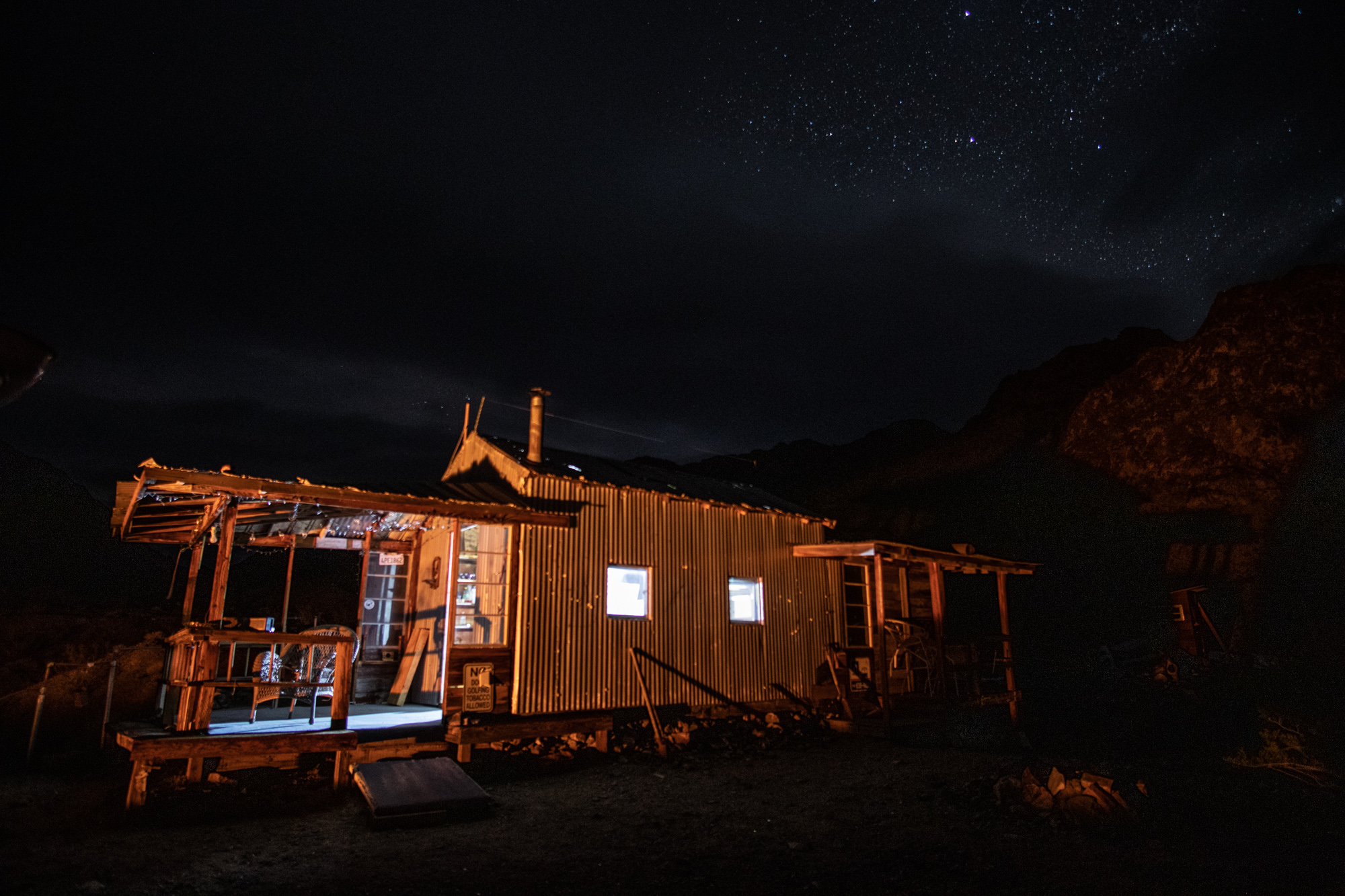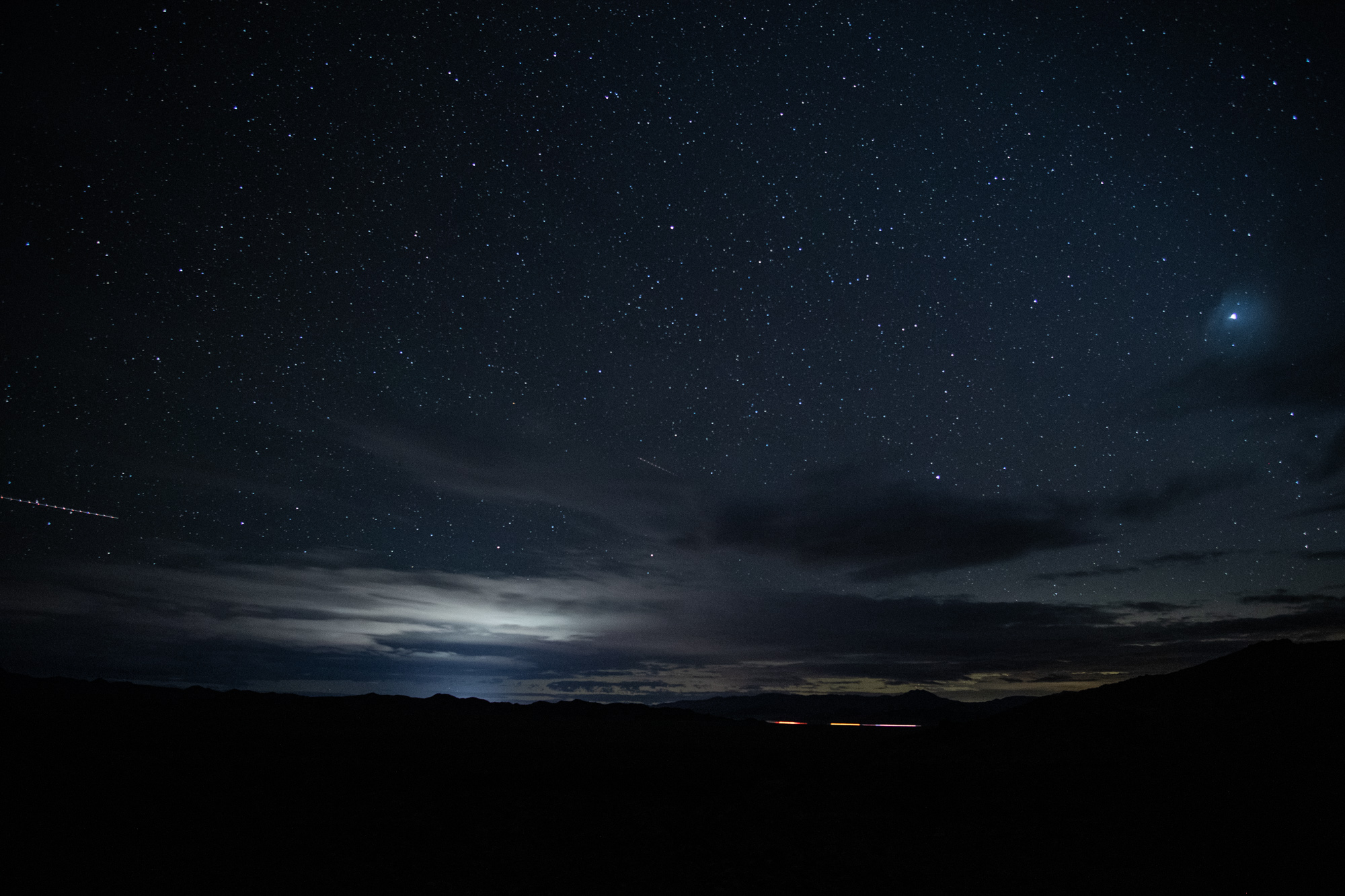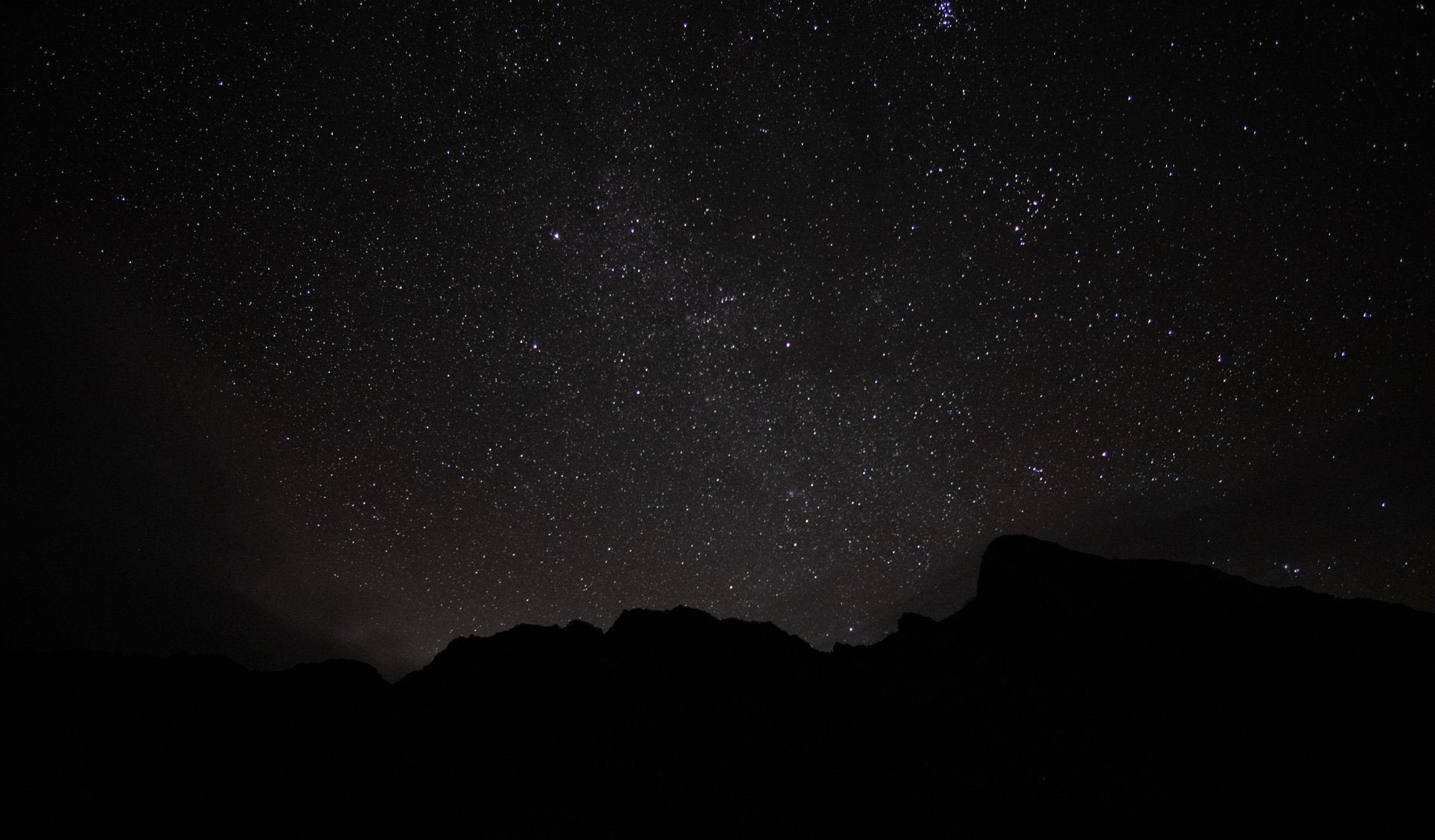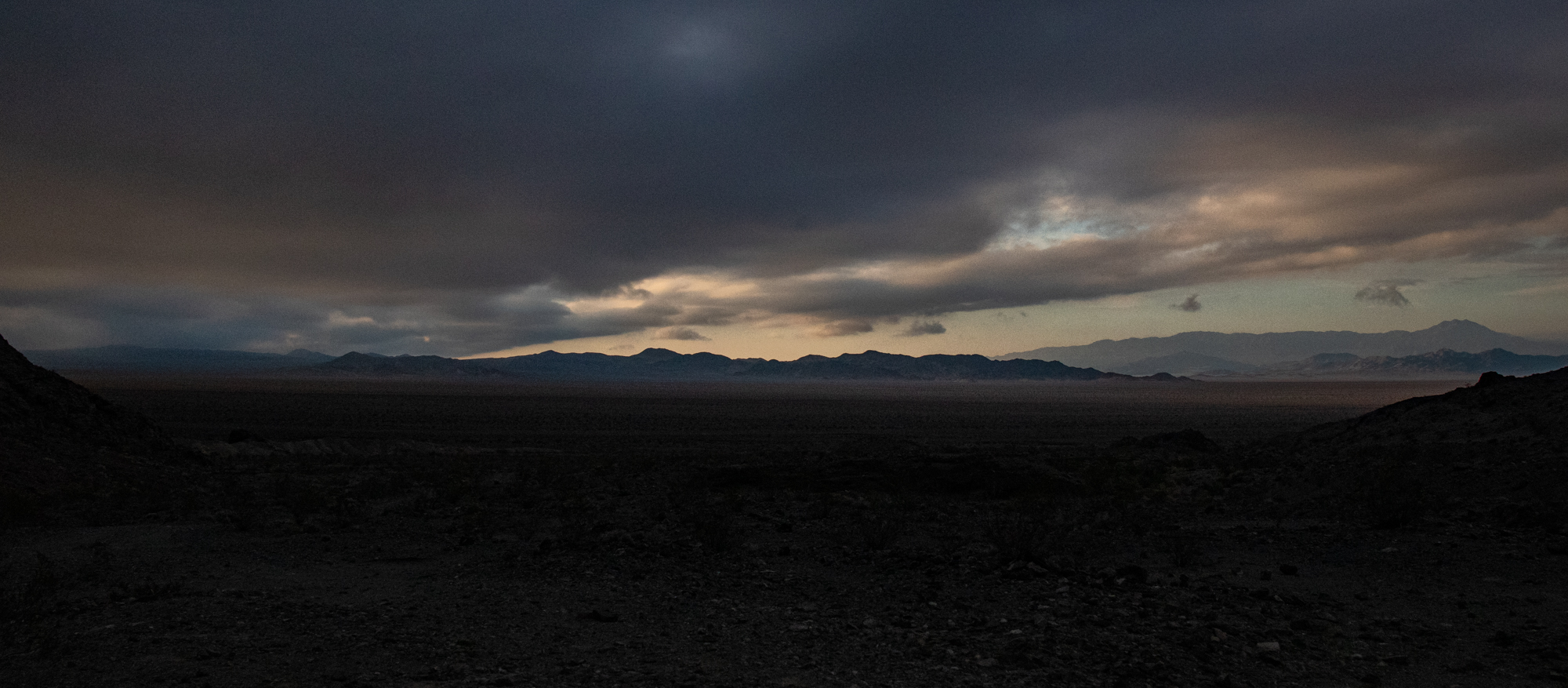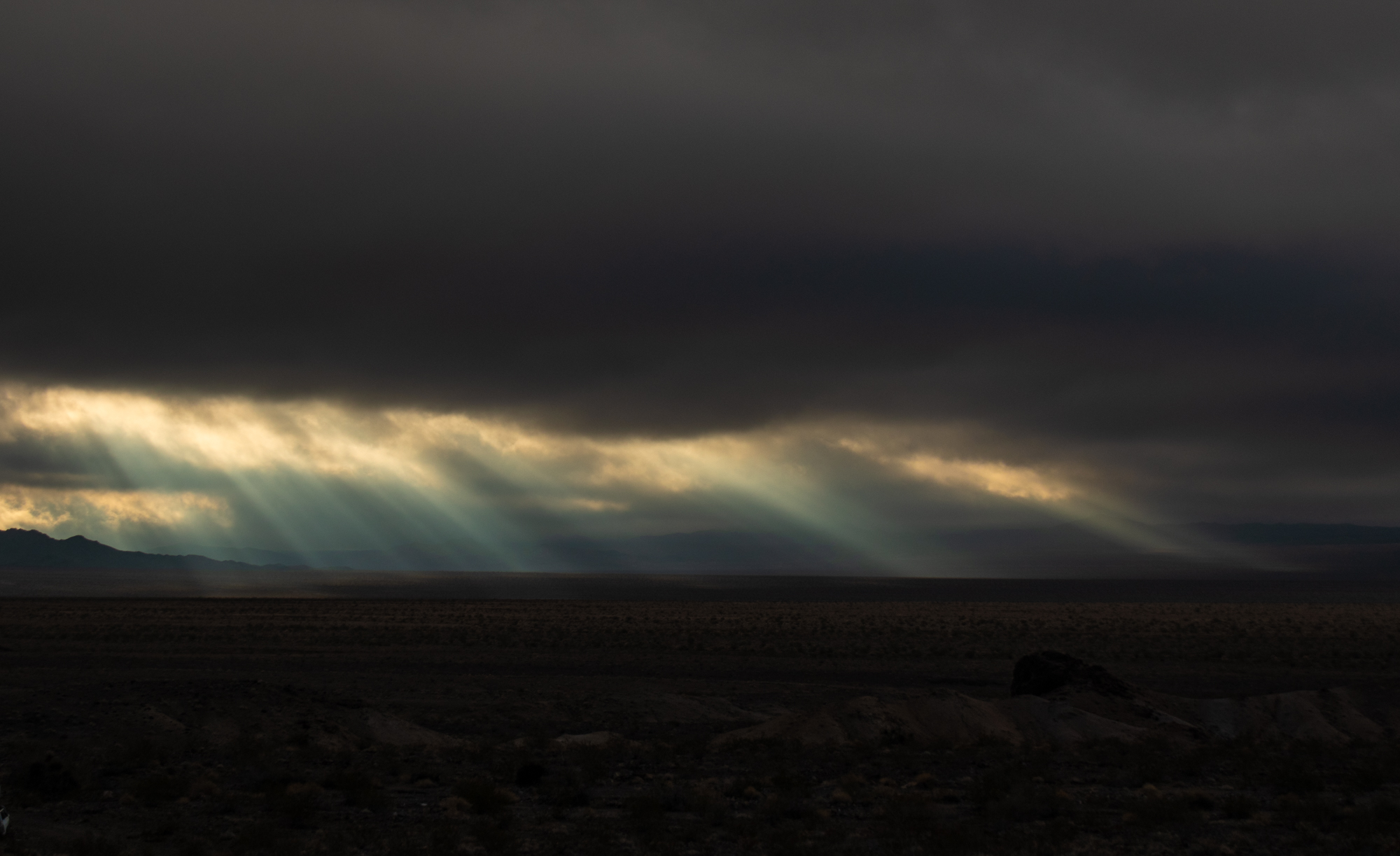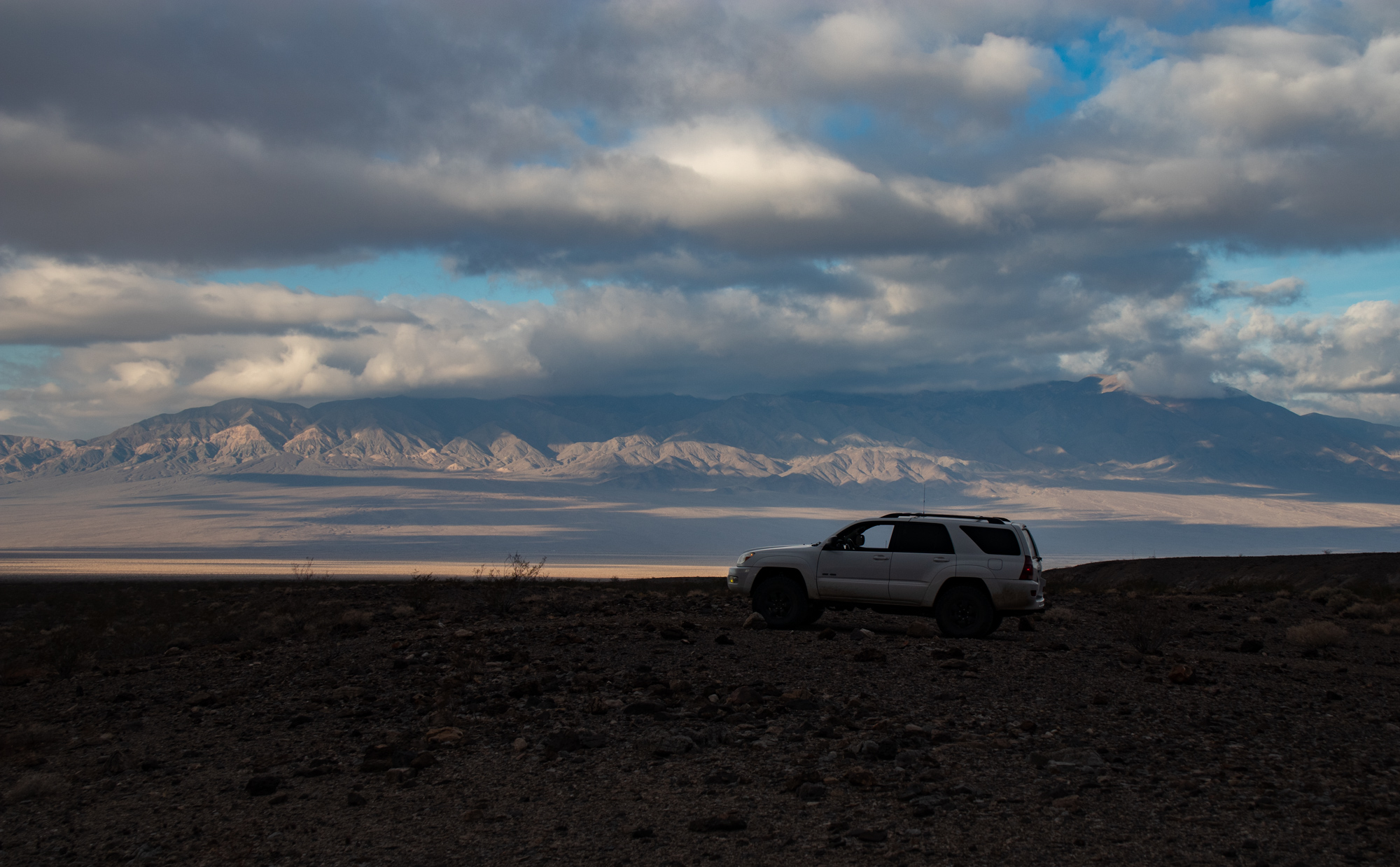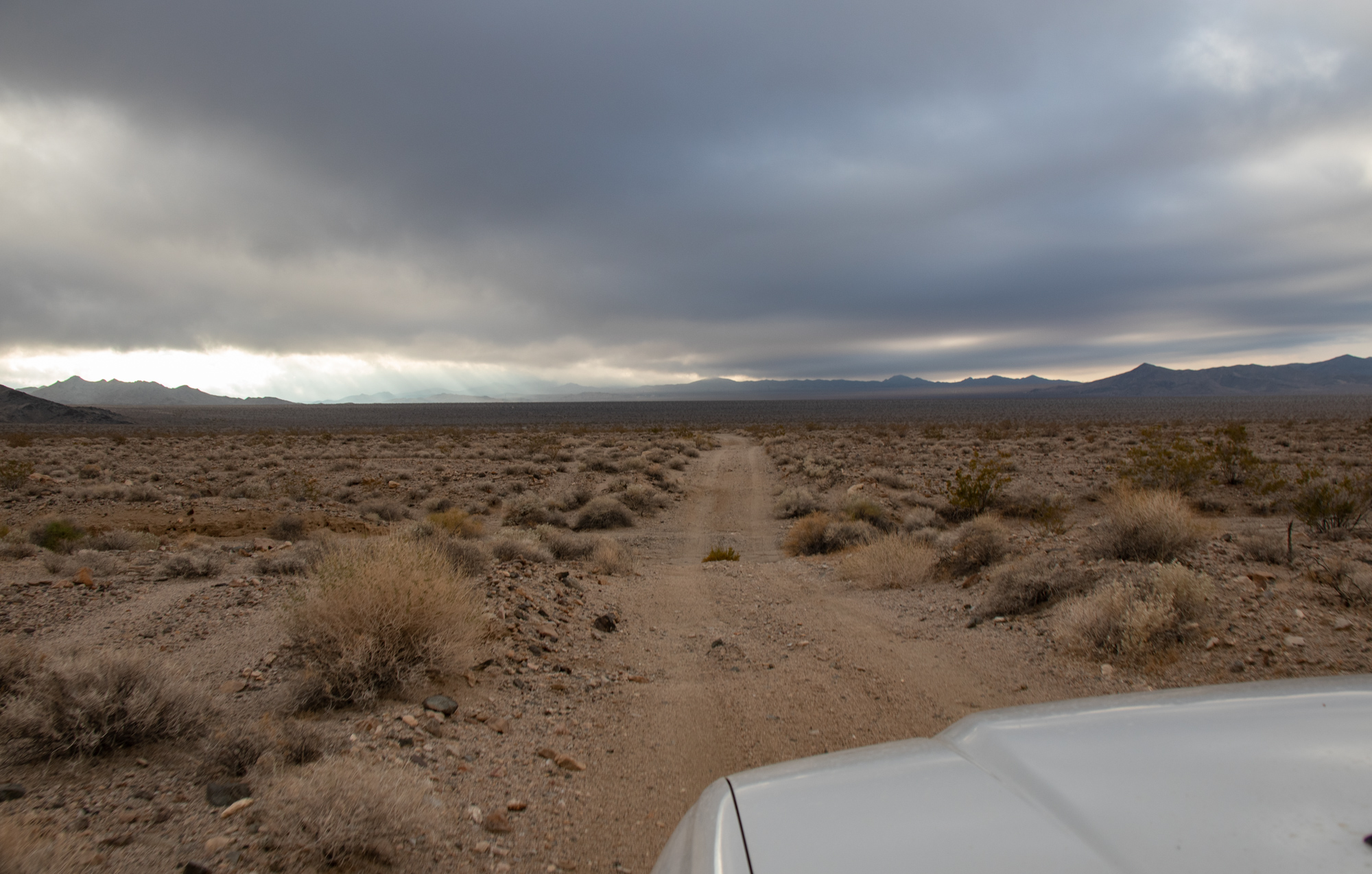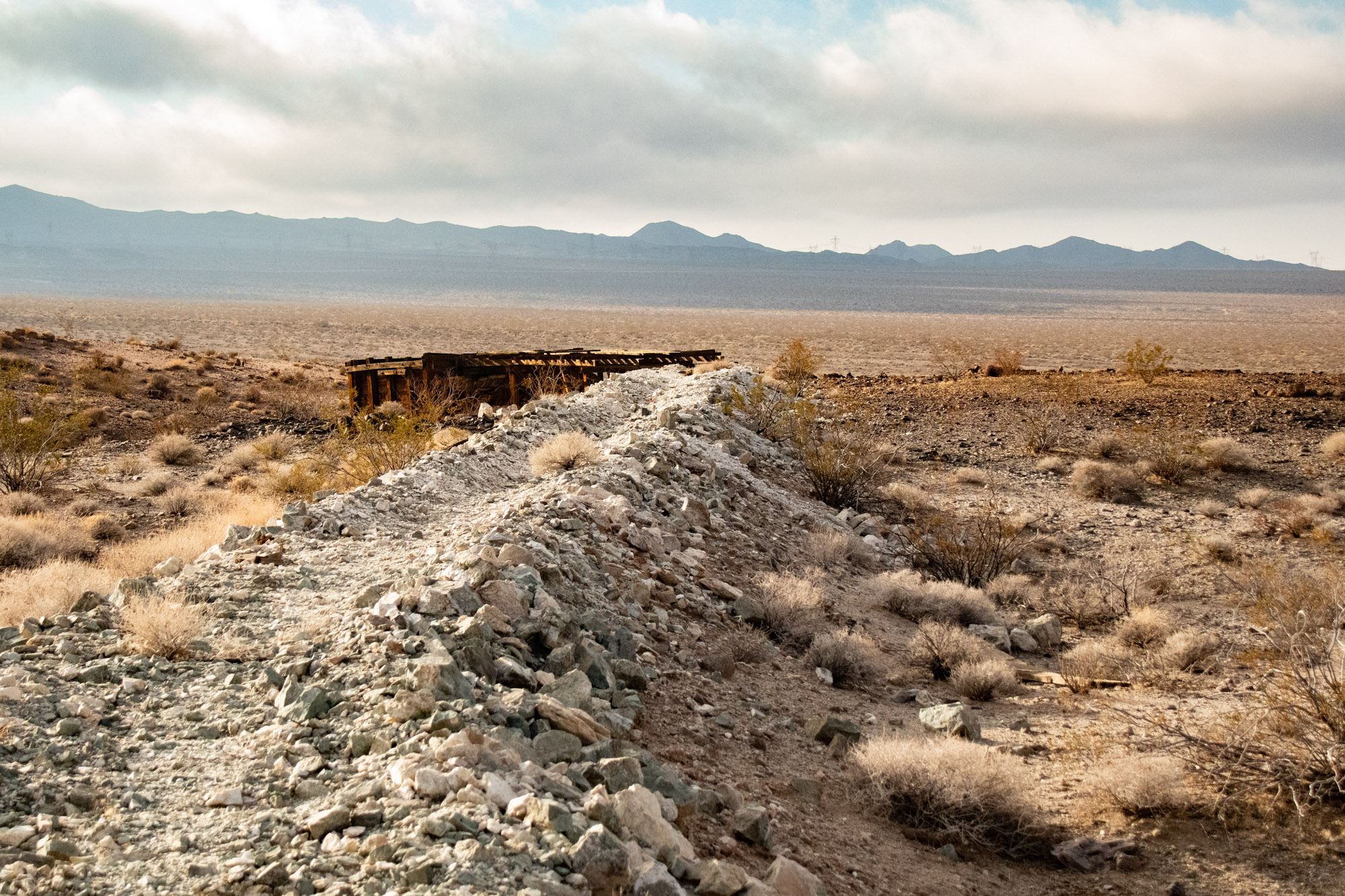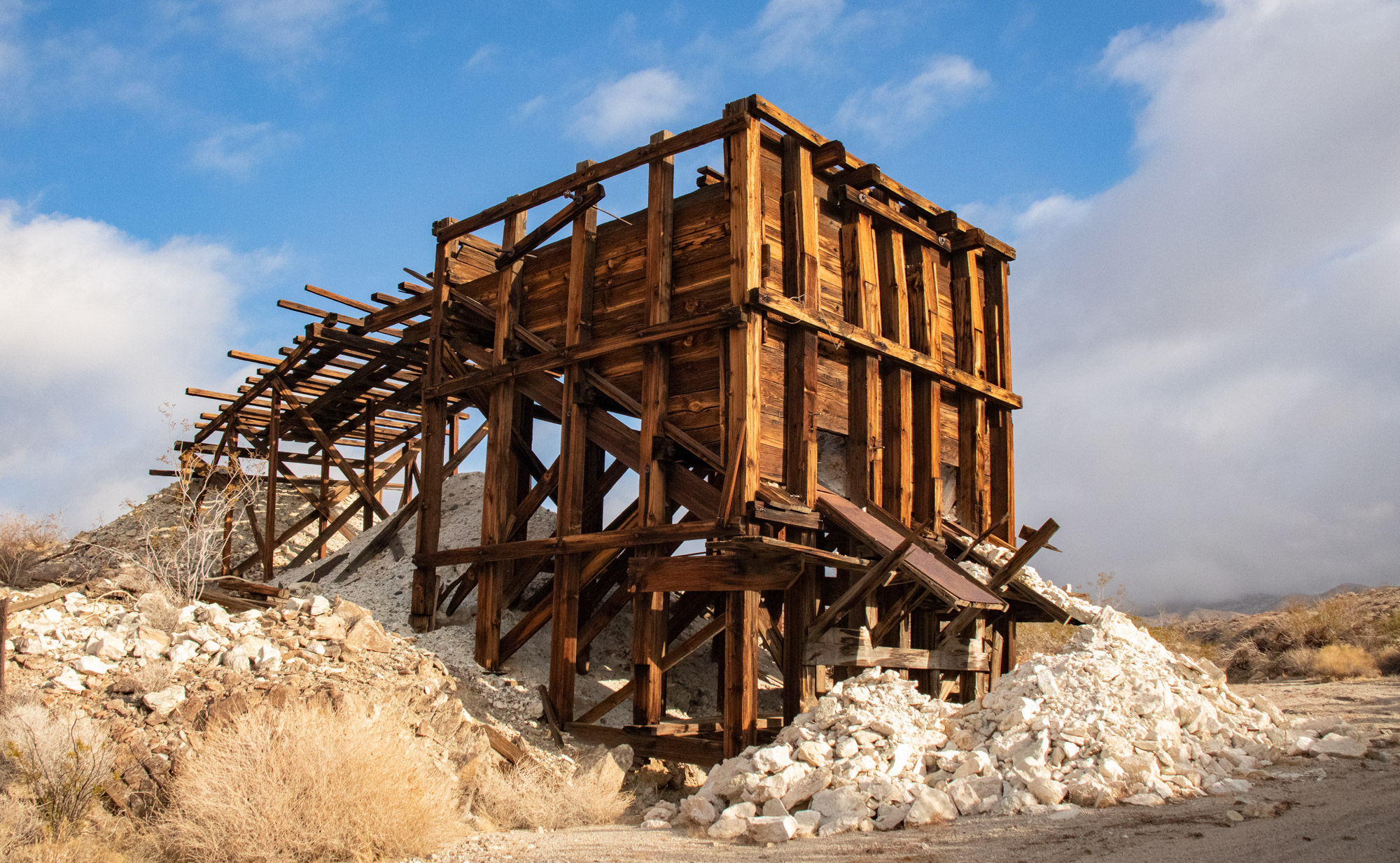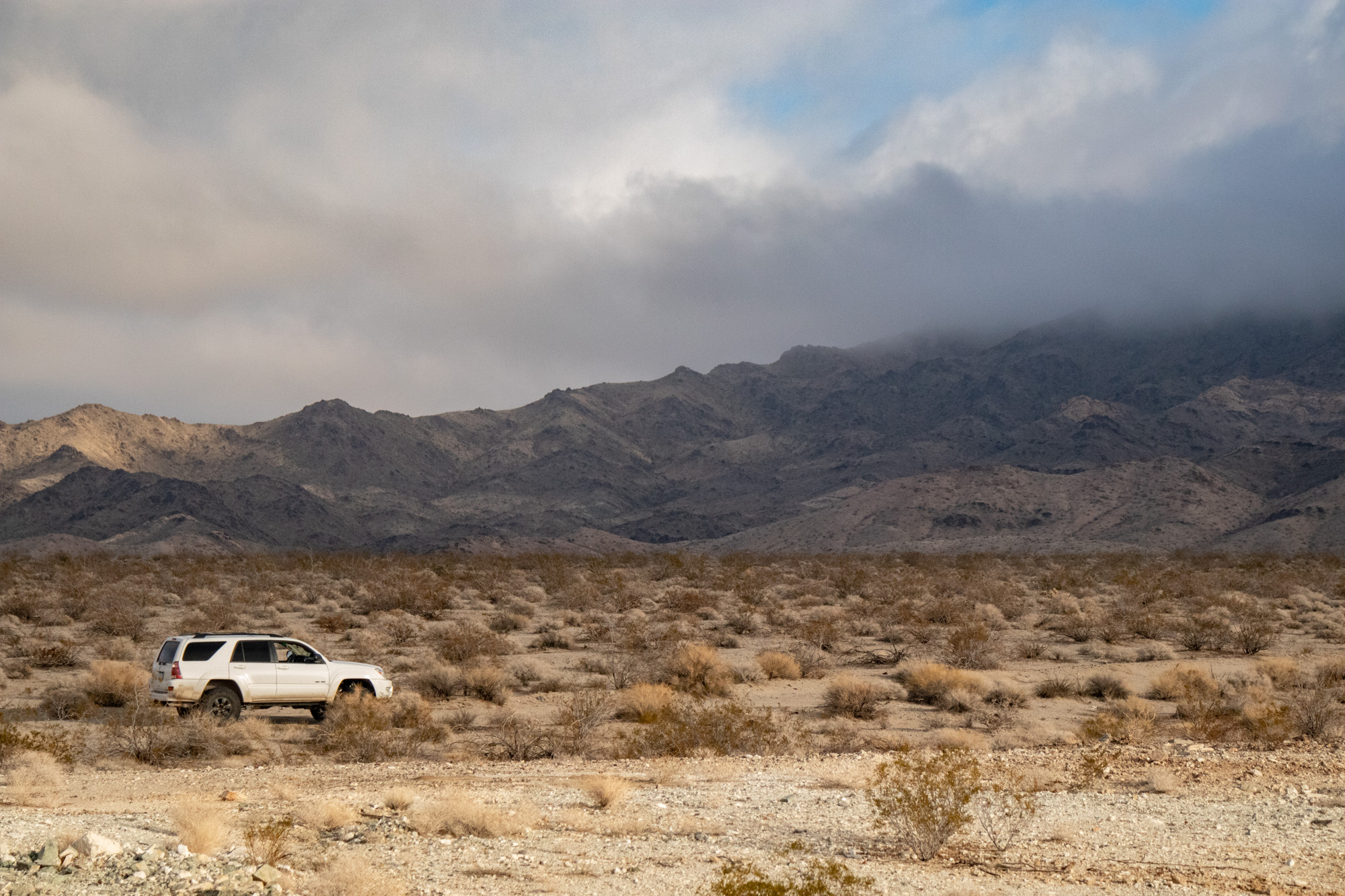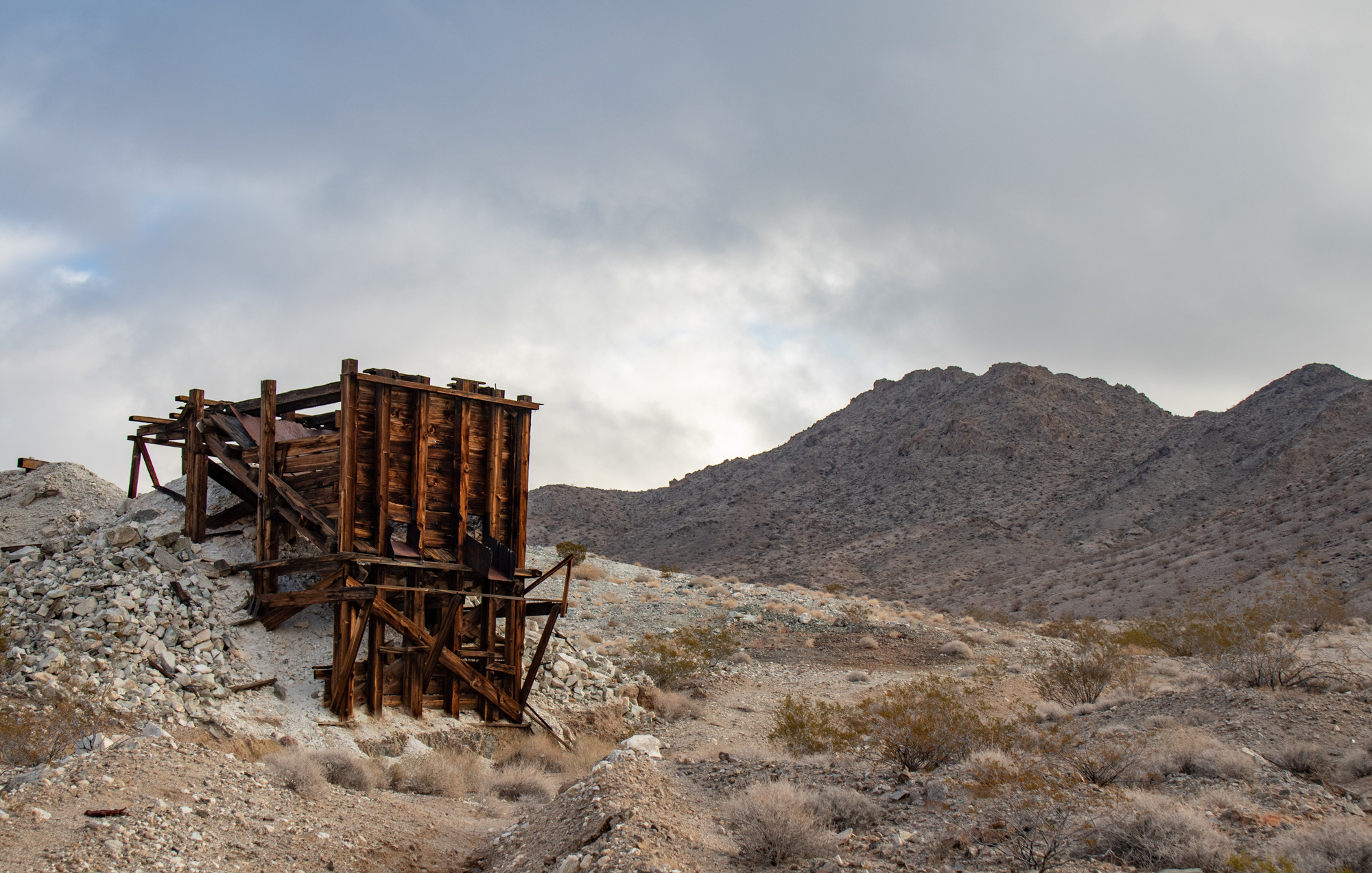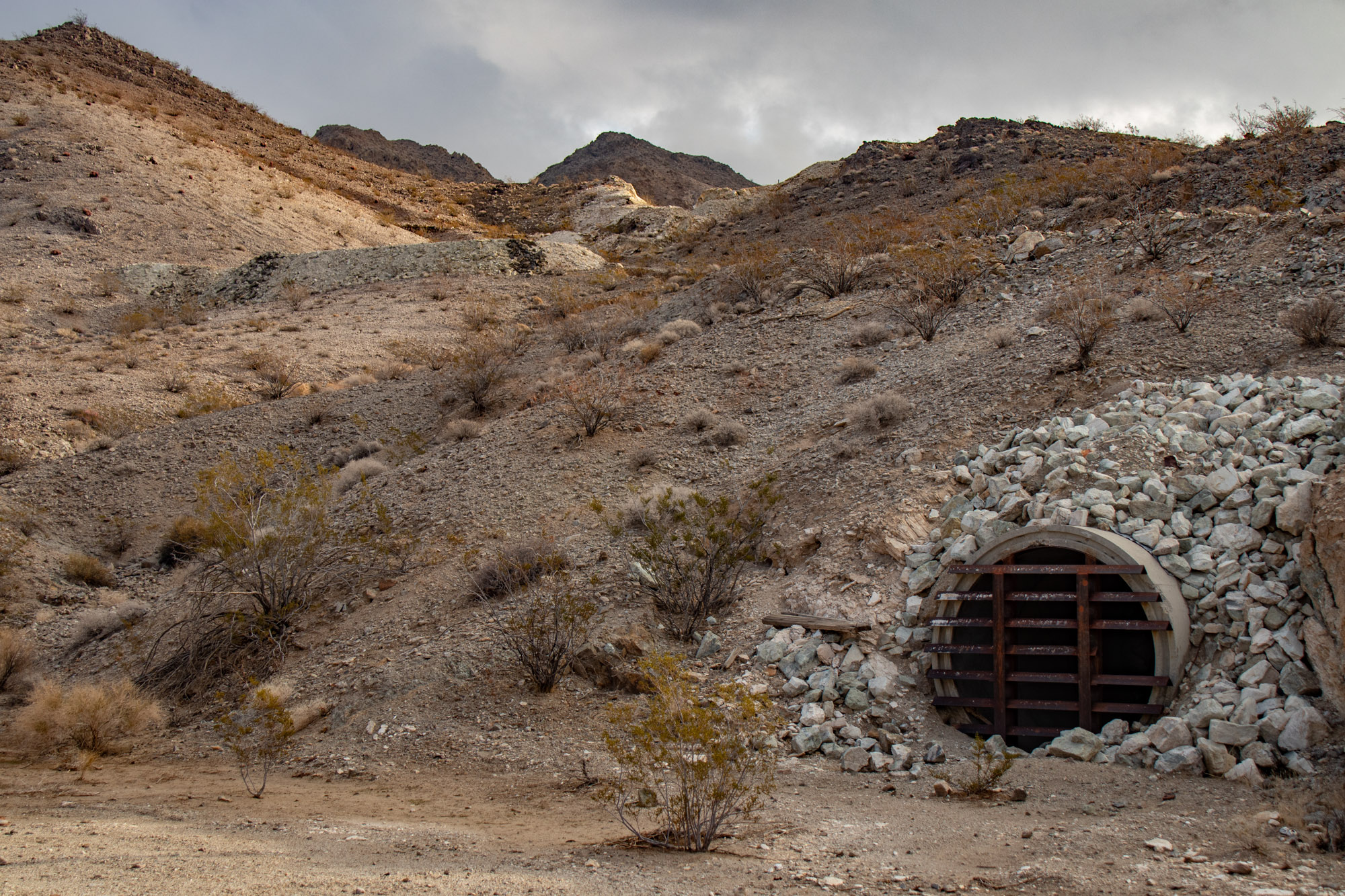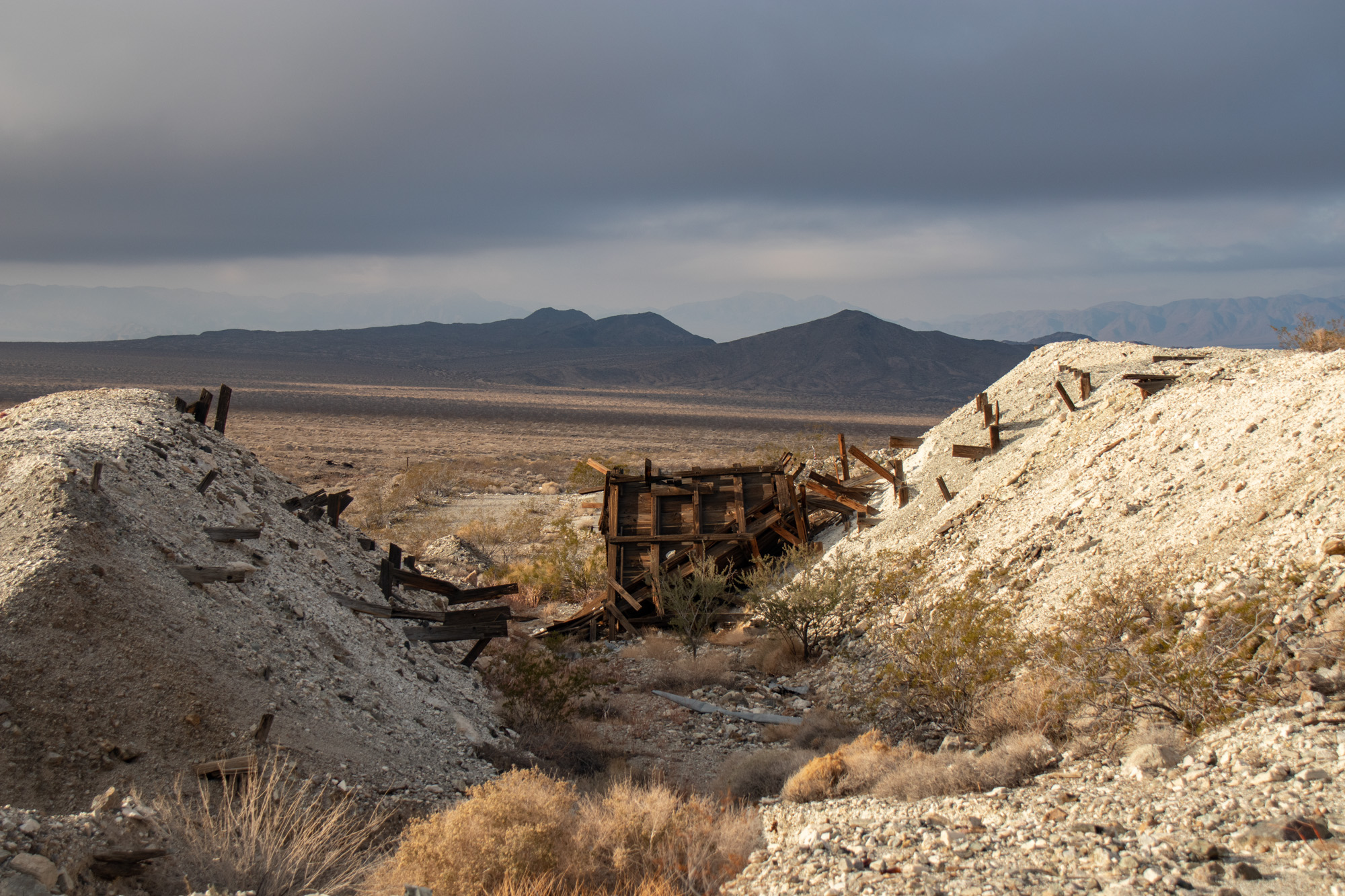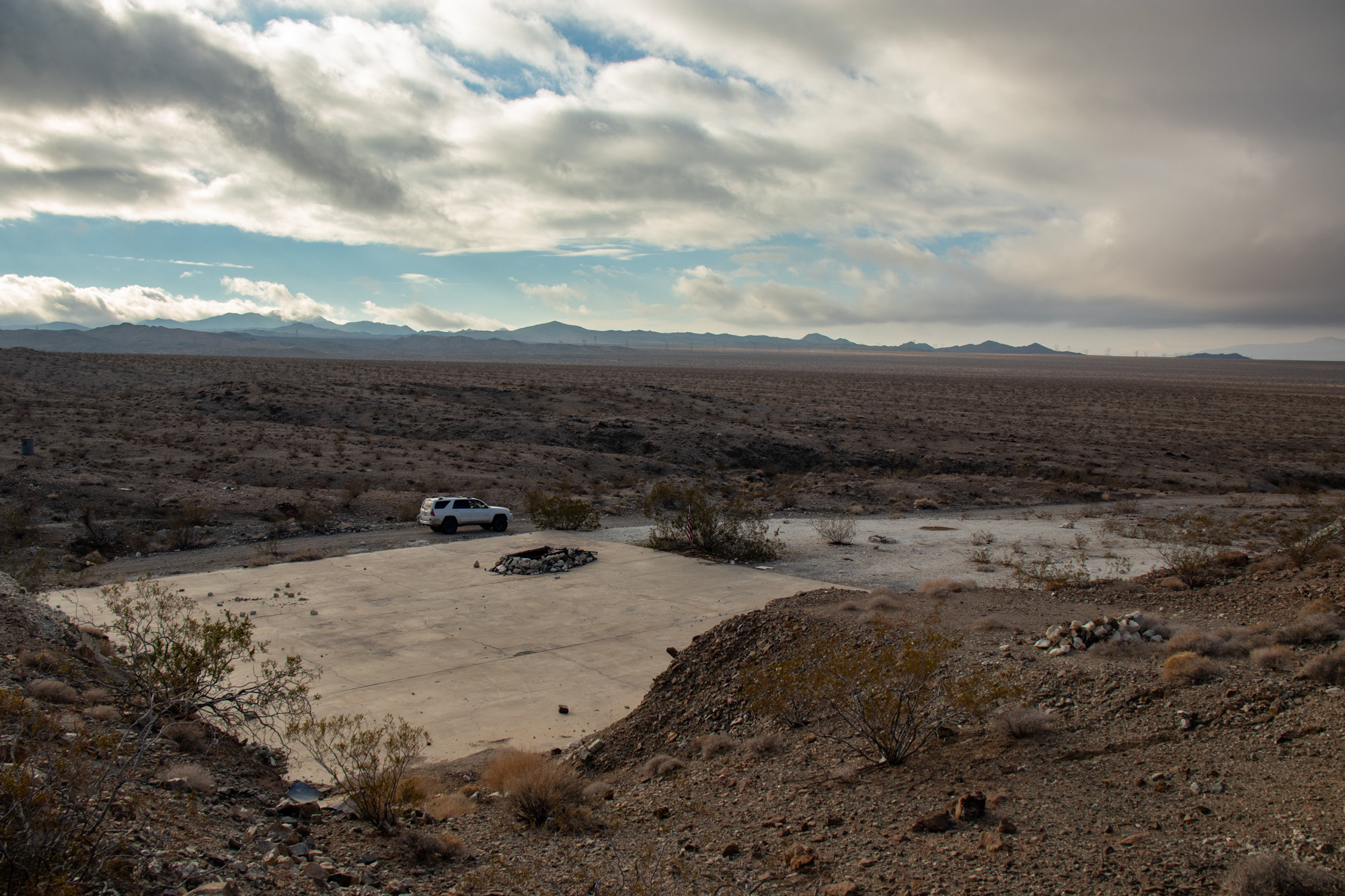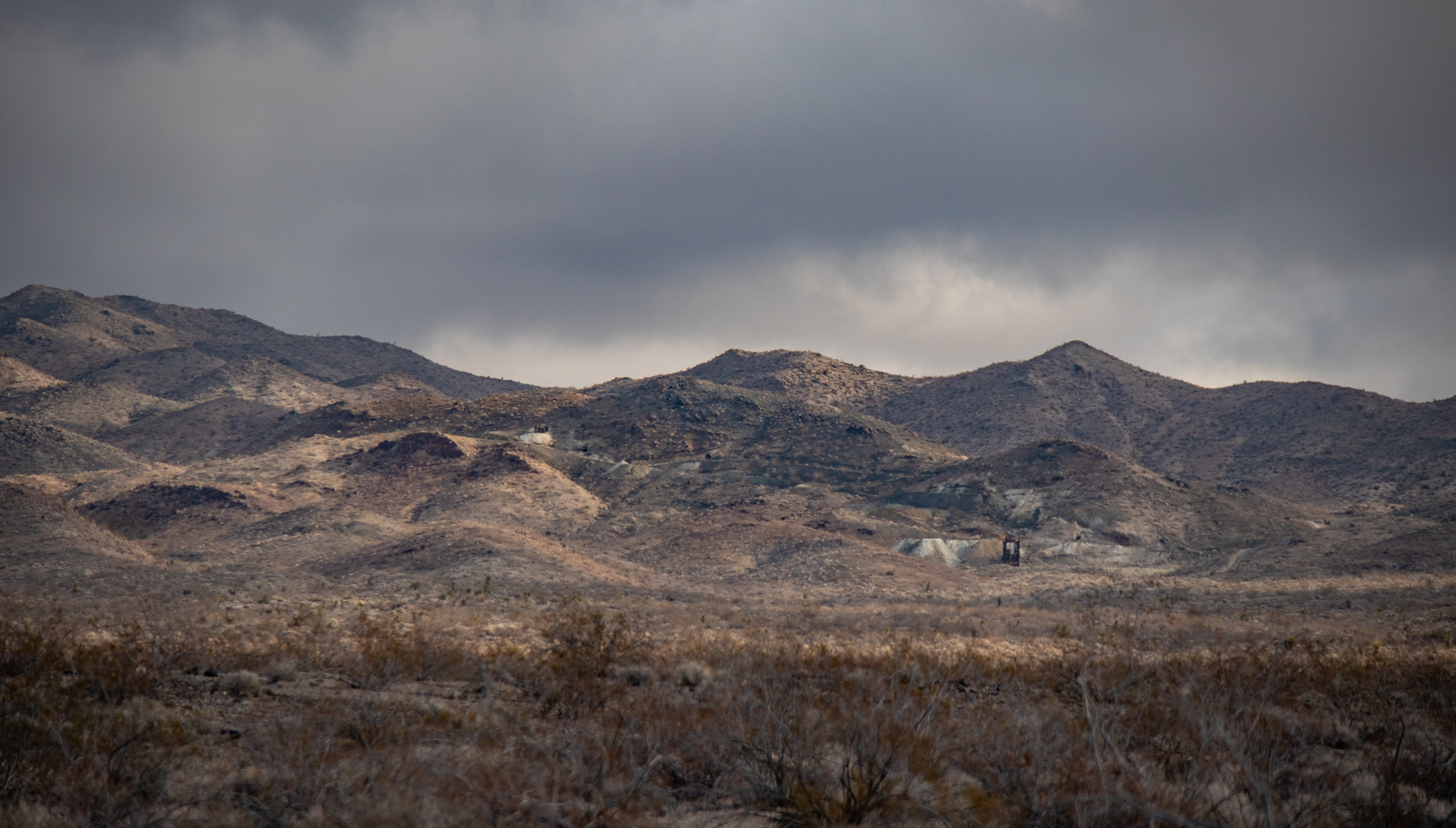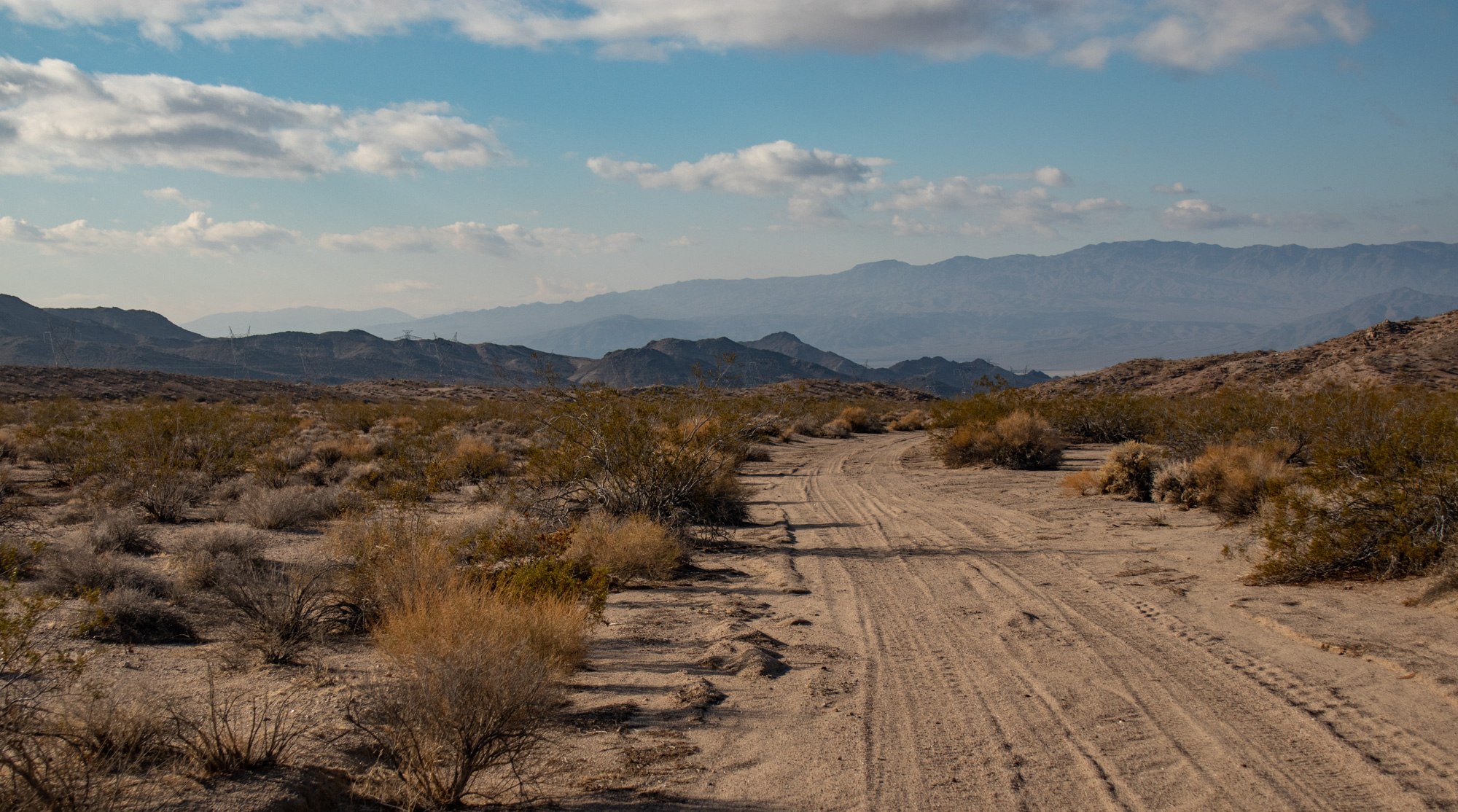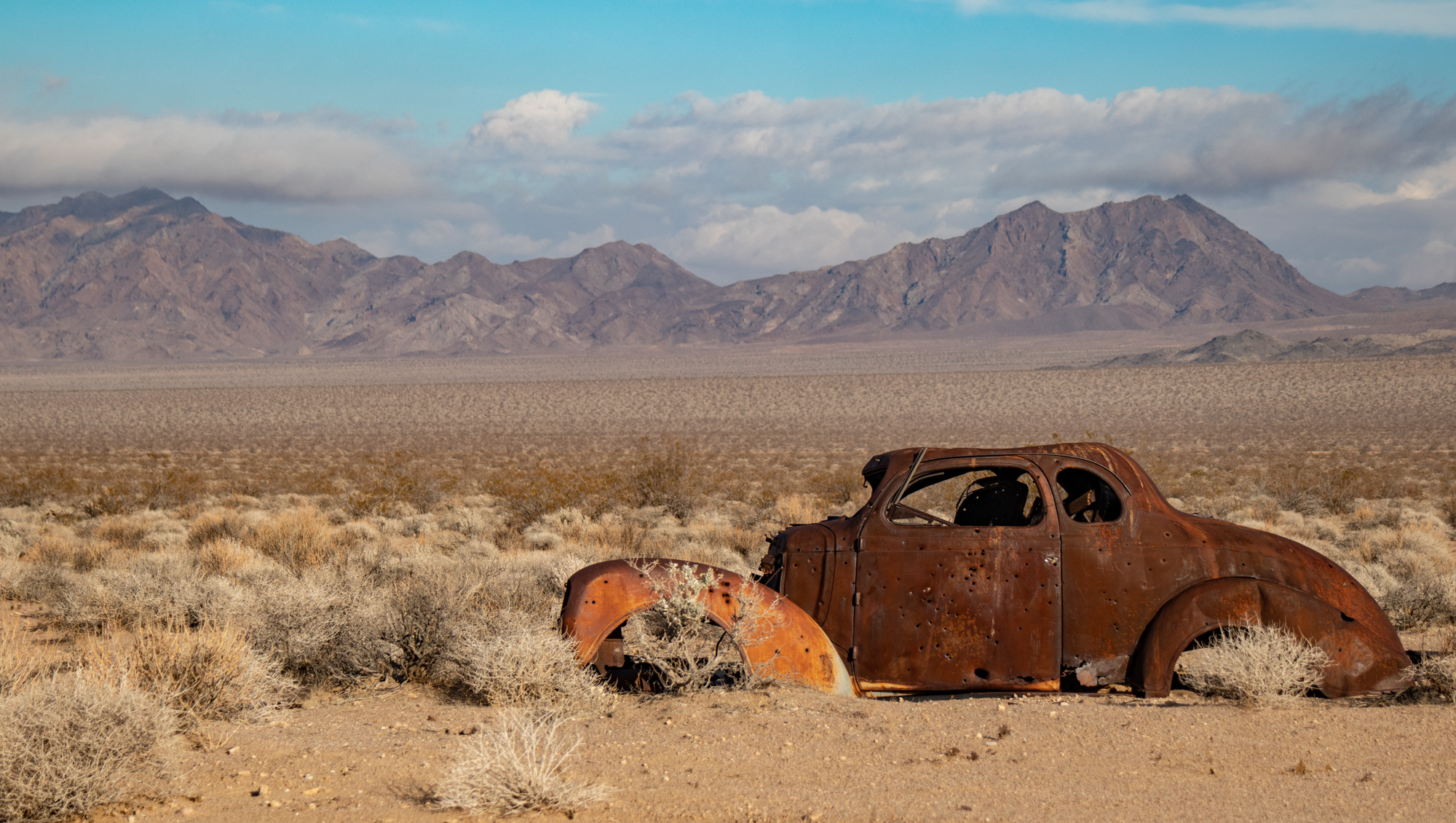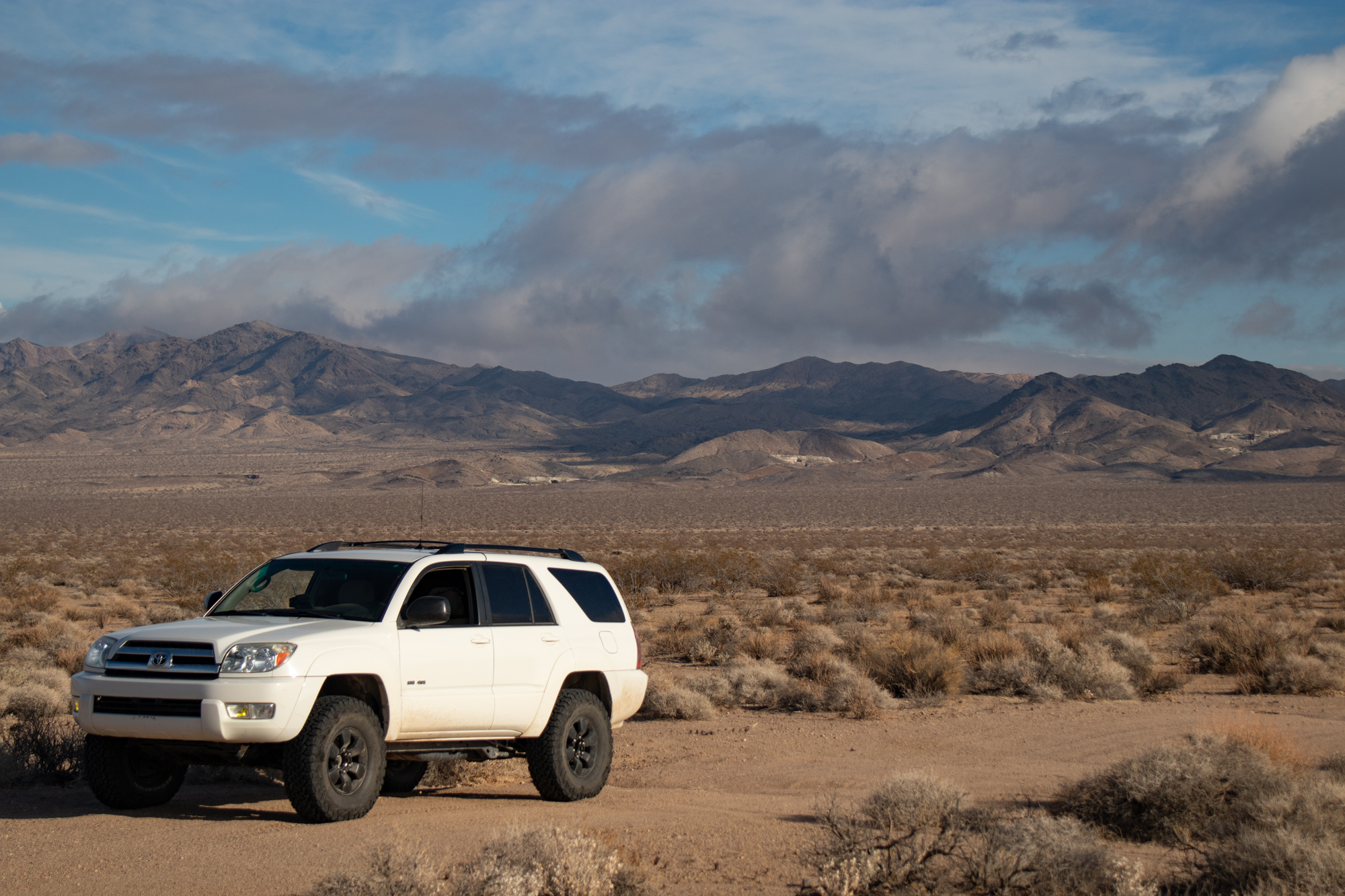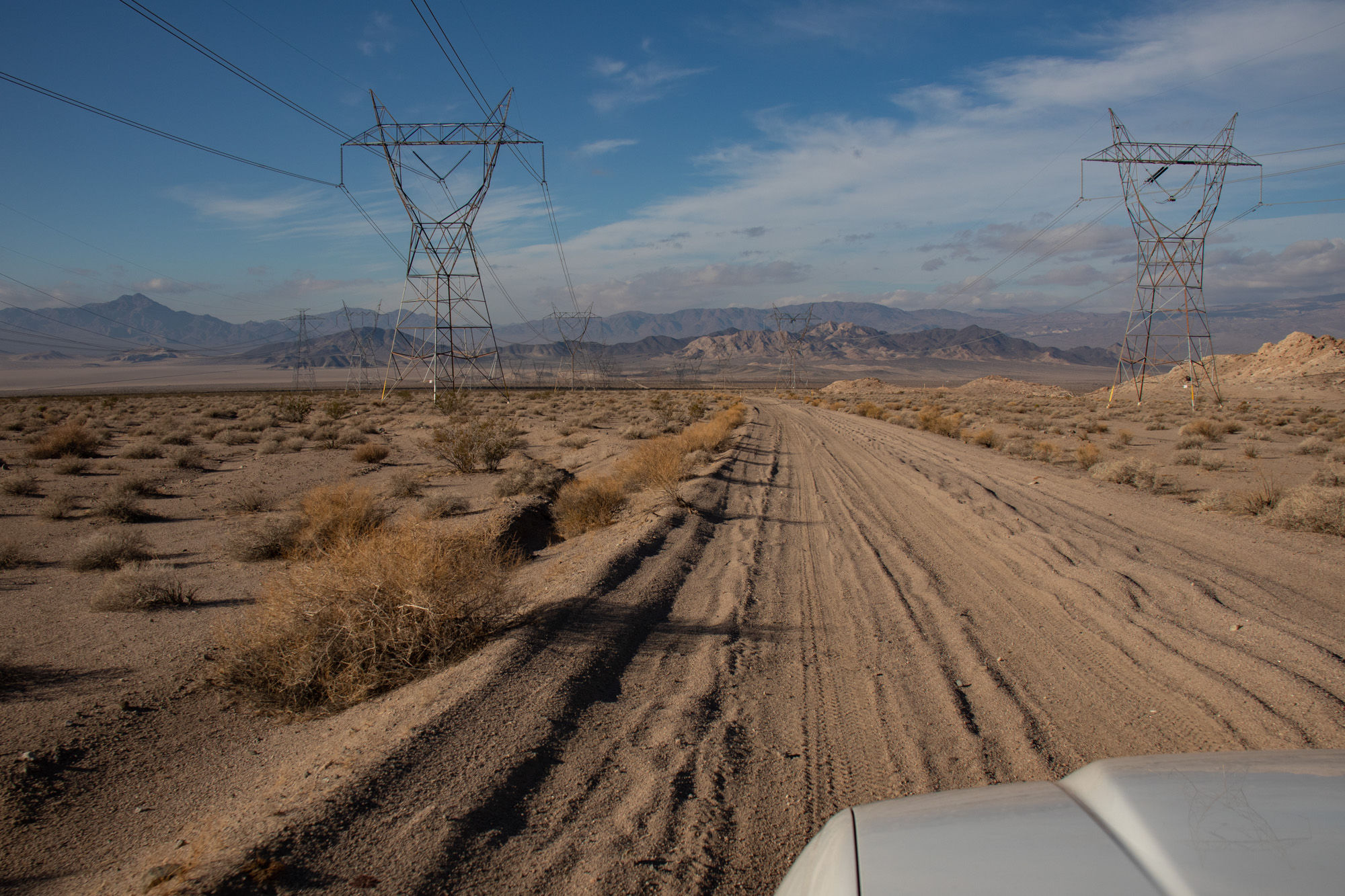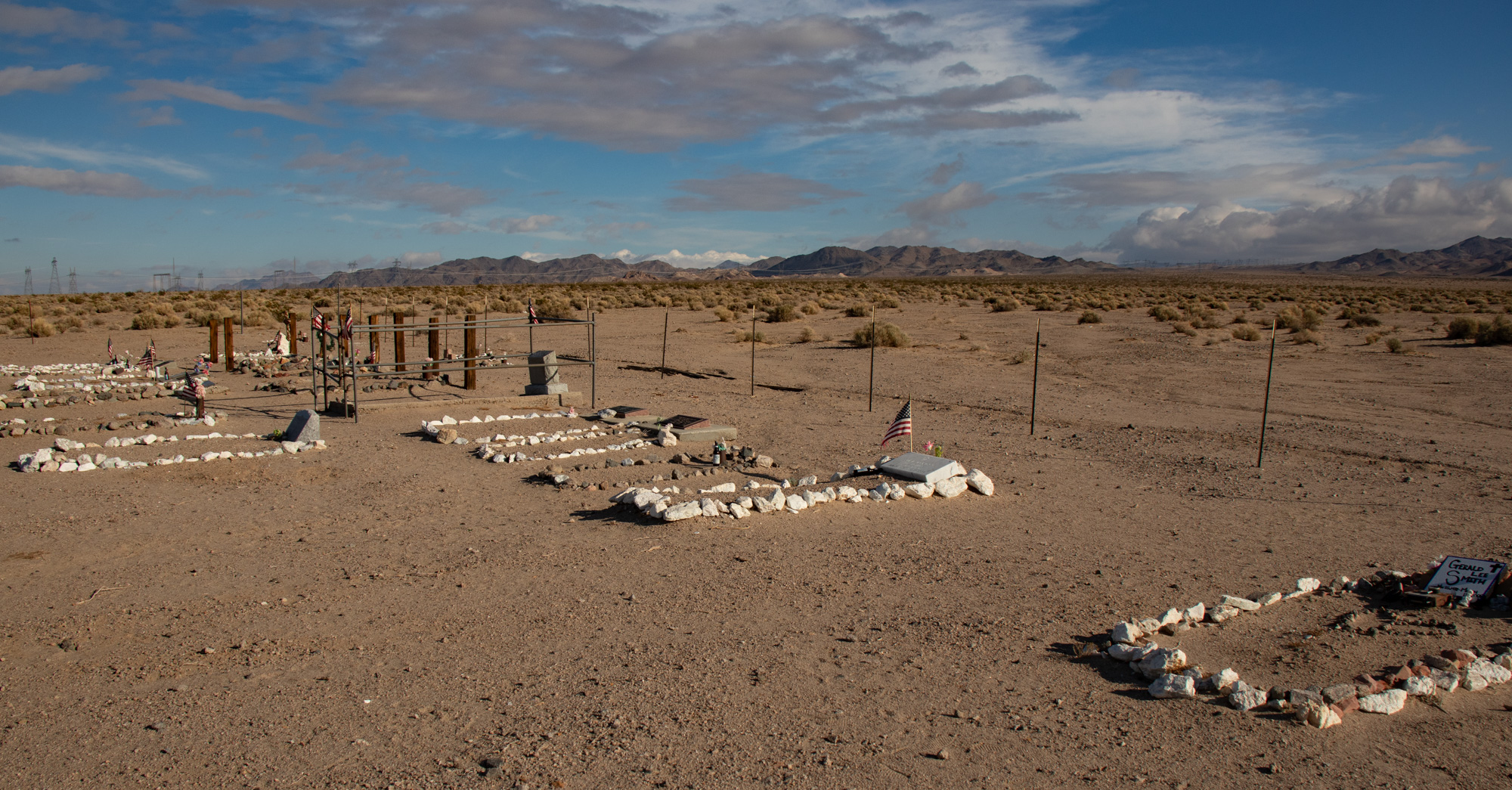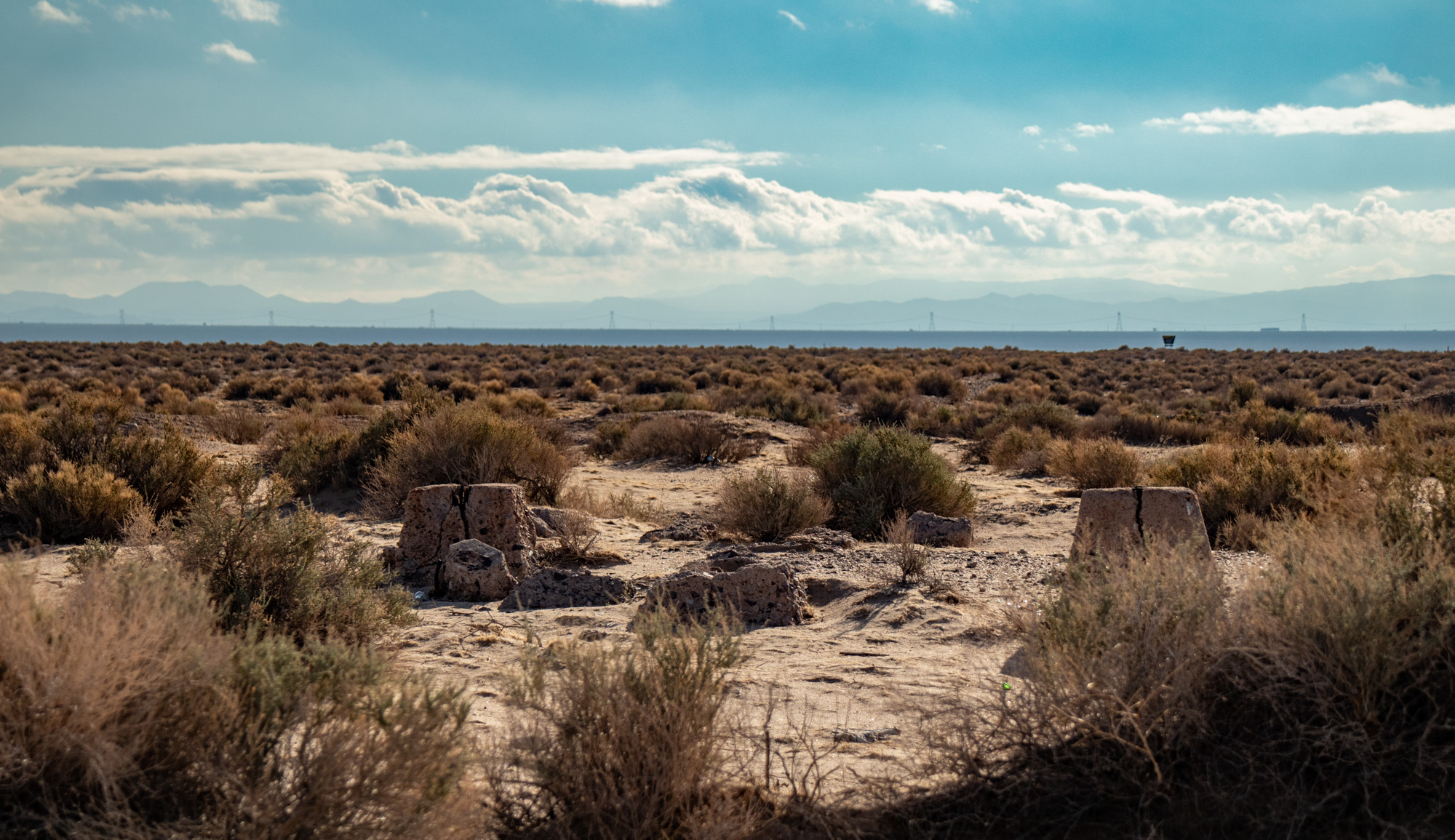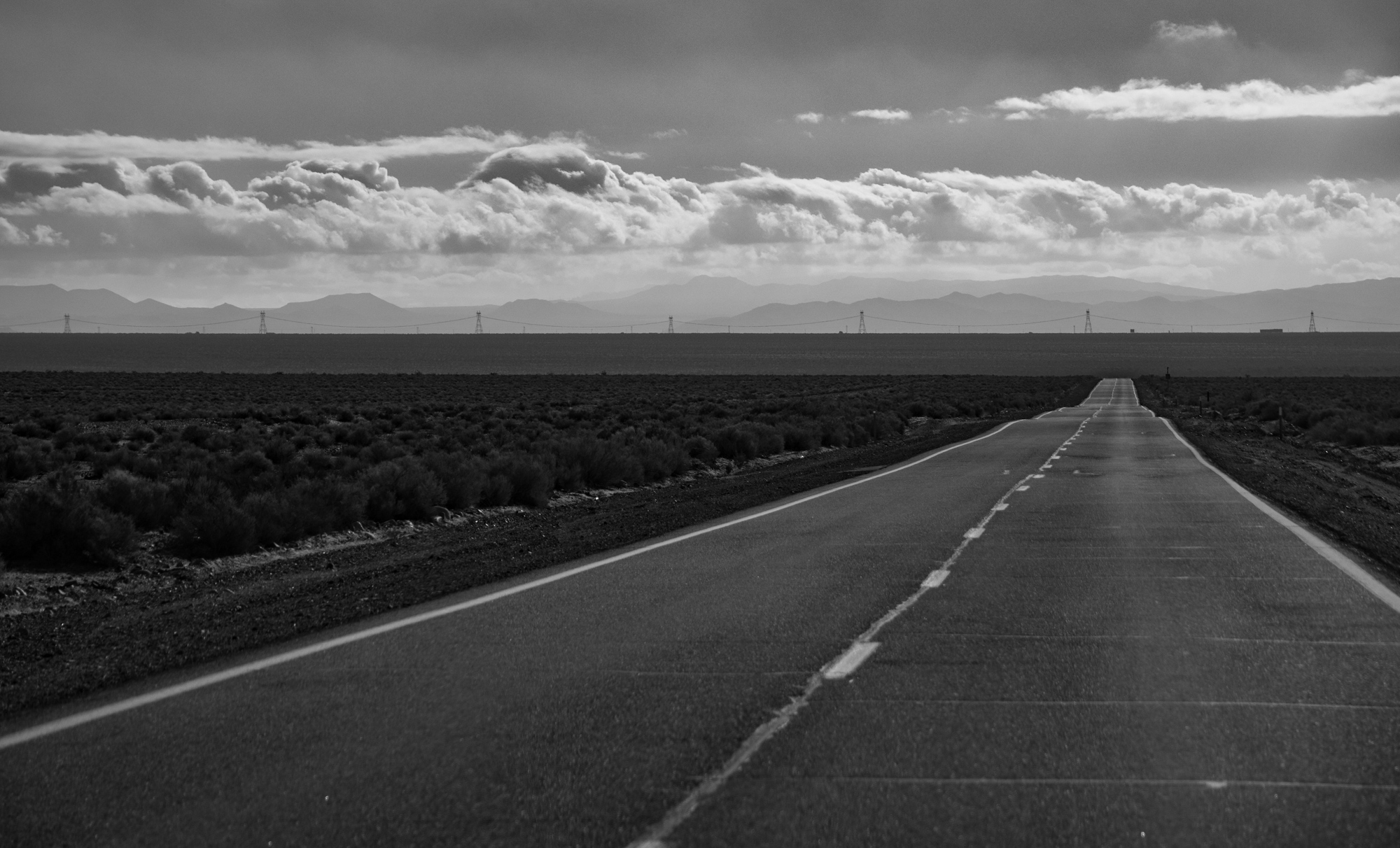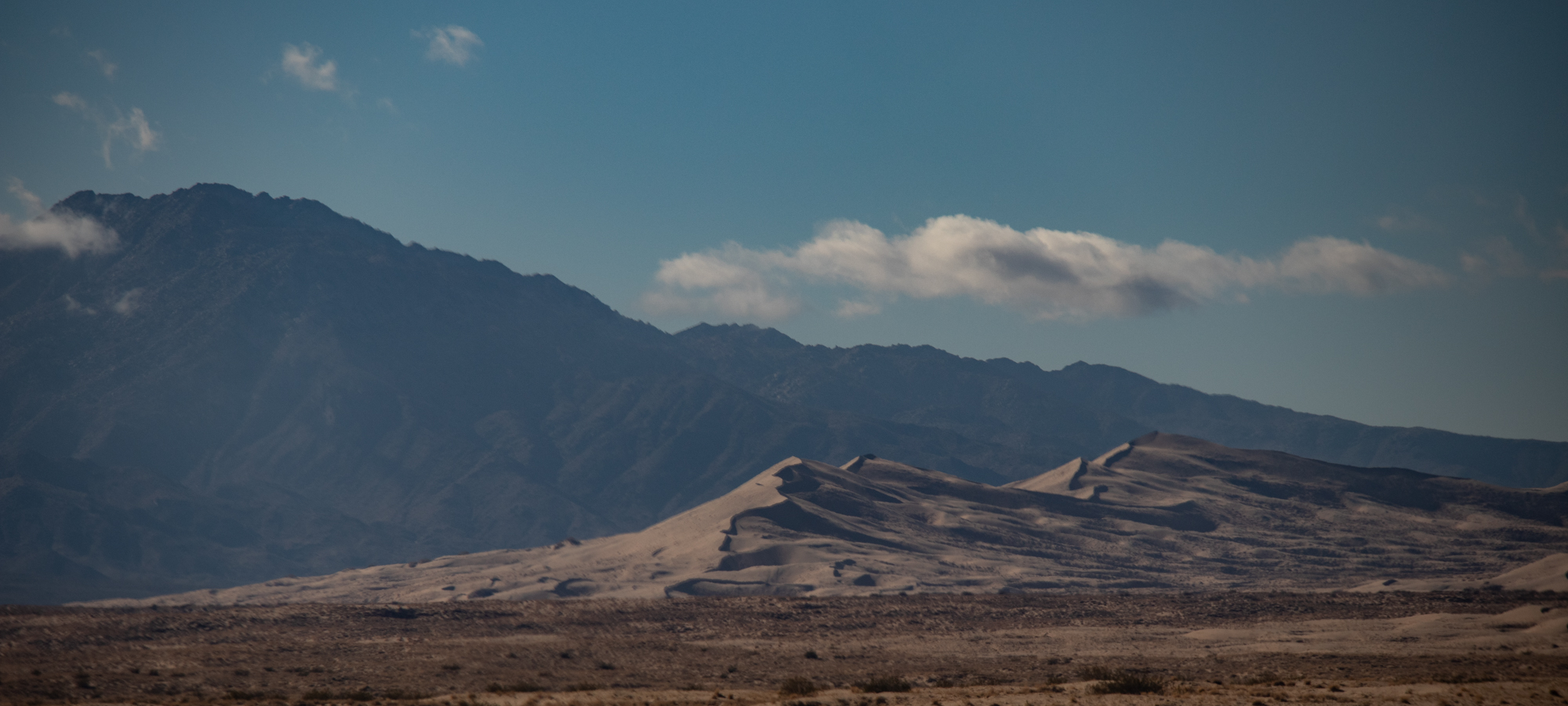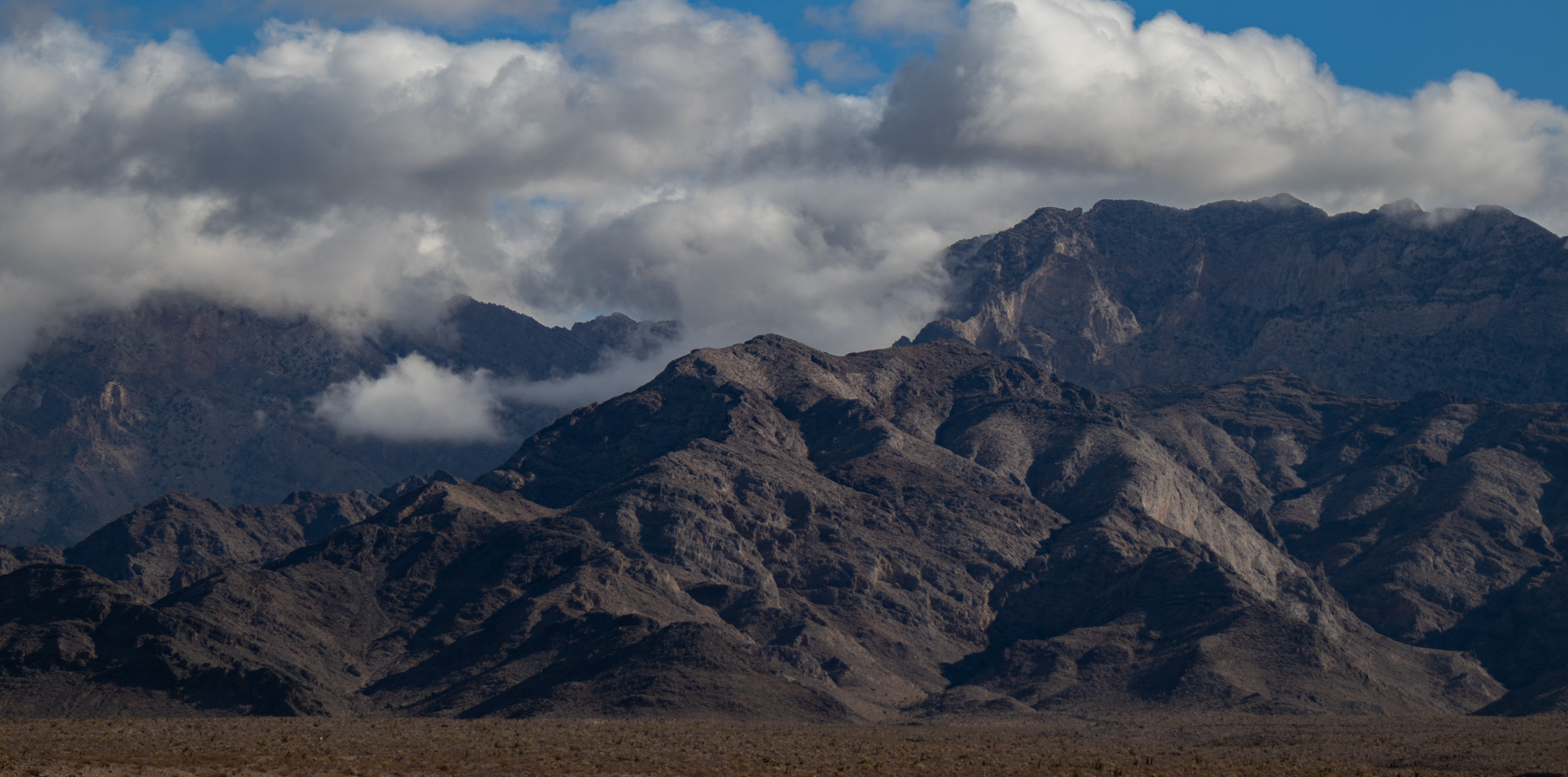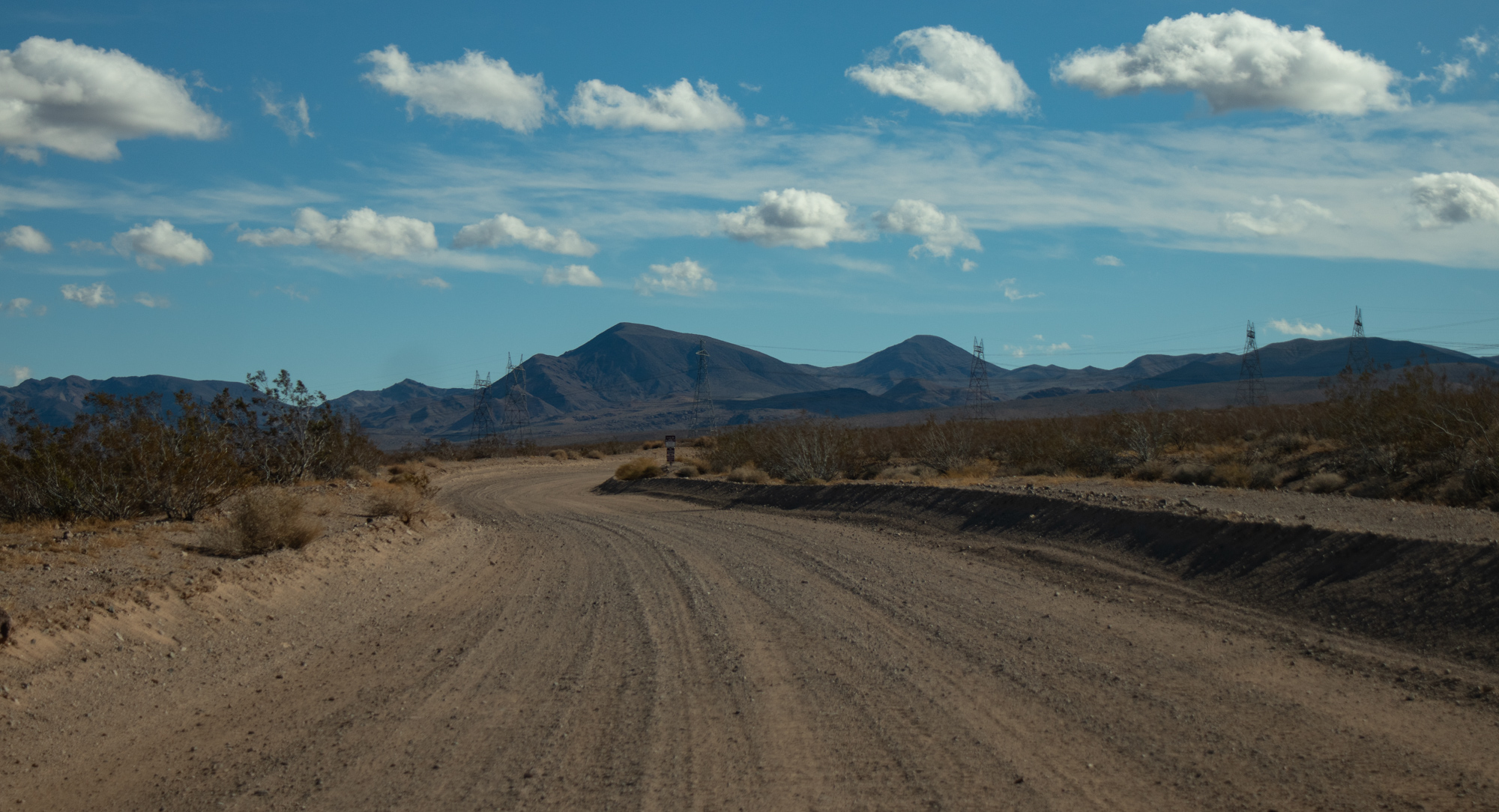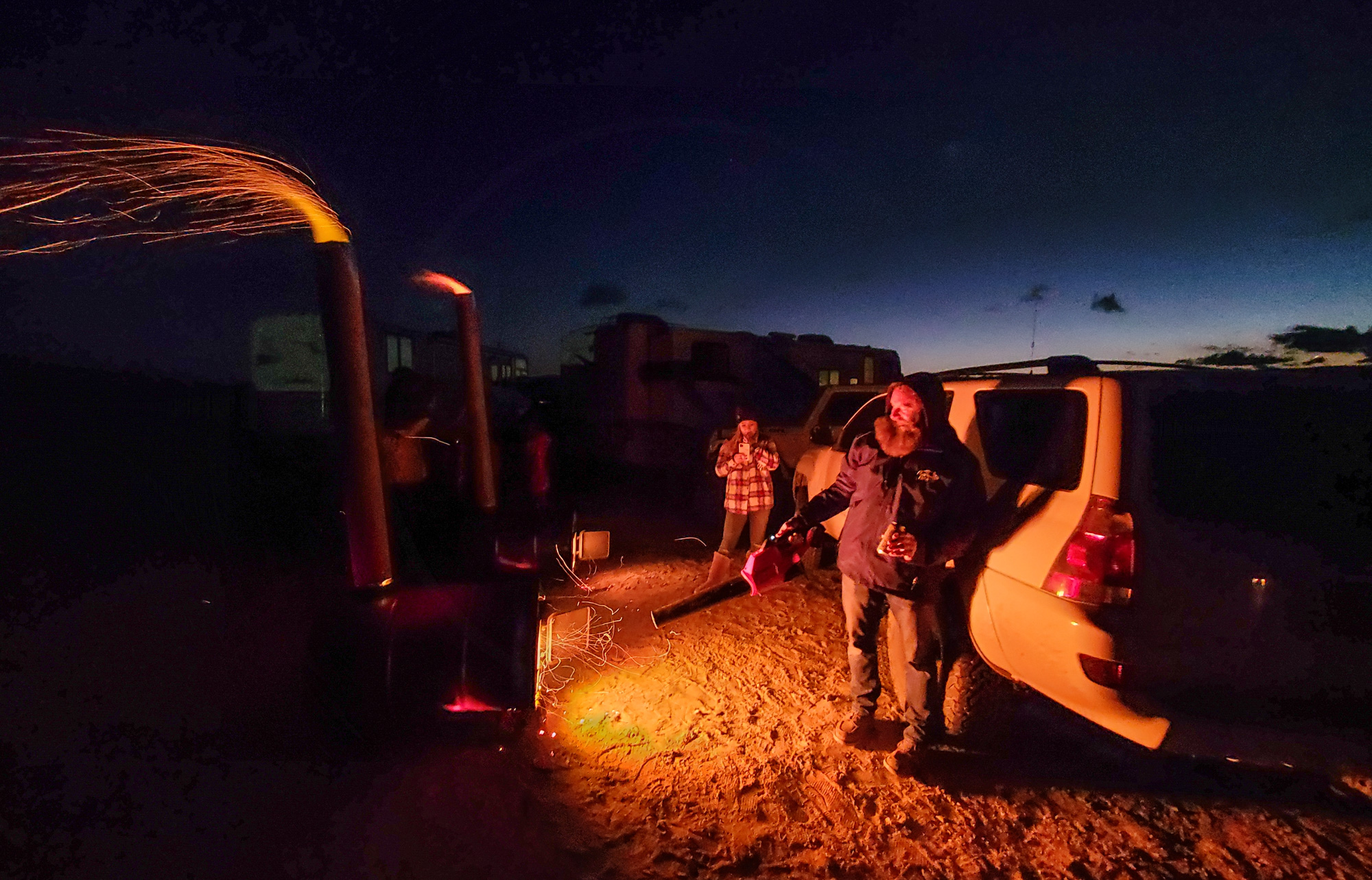The next stop was something I was looking forward to. My inner mining history nerd meter was absolutely pegged. The Amargosa/Salt Spring mine - the oldest Anglo gold mine in Southern California. There's a walking trail and signs explaining the surroundings along the way. I copied what each of the informative boards said, so there's quite a bit of text but well worth the read if you're into history.
Pretty cool standing in and looking around an area where so much had happened so long ago. Wild to think about how ambitious and hardy people were back in the day, looking for a better future. Literally heading into the unknown at the time, relying on others as a guide. Wagons that had a every possession that a family owned being towed by domesticated animals, all while having to be self sufficient in every aspect.
How exciting and terrifying it must have been...
Following the discovery of gold at Sutter's Mill in California, Jefferson Hunt led a wagon trail from Deseret (present day Salt Lake City) in search of a better future. Several members of the wagon train, including the Harry Wade family and the Manley party, decided to try an unproved "short cut" which led them to Death Valley. Seven of the Mormon wagons continued with Hunt along the Old Spanish Trail/Mormon Road. While camping at Salt Creek on December 1, 1849, Hunt's party discover gold. This is the oldest Anglo gold mine in Southern California.
Mining started in 1850 and continued off and on for decades. in 1860 there were three ore crushers (arrastres) operating and the ore yielded $2500.00 per ton.
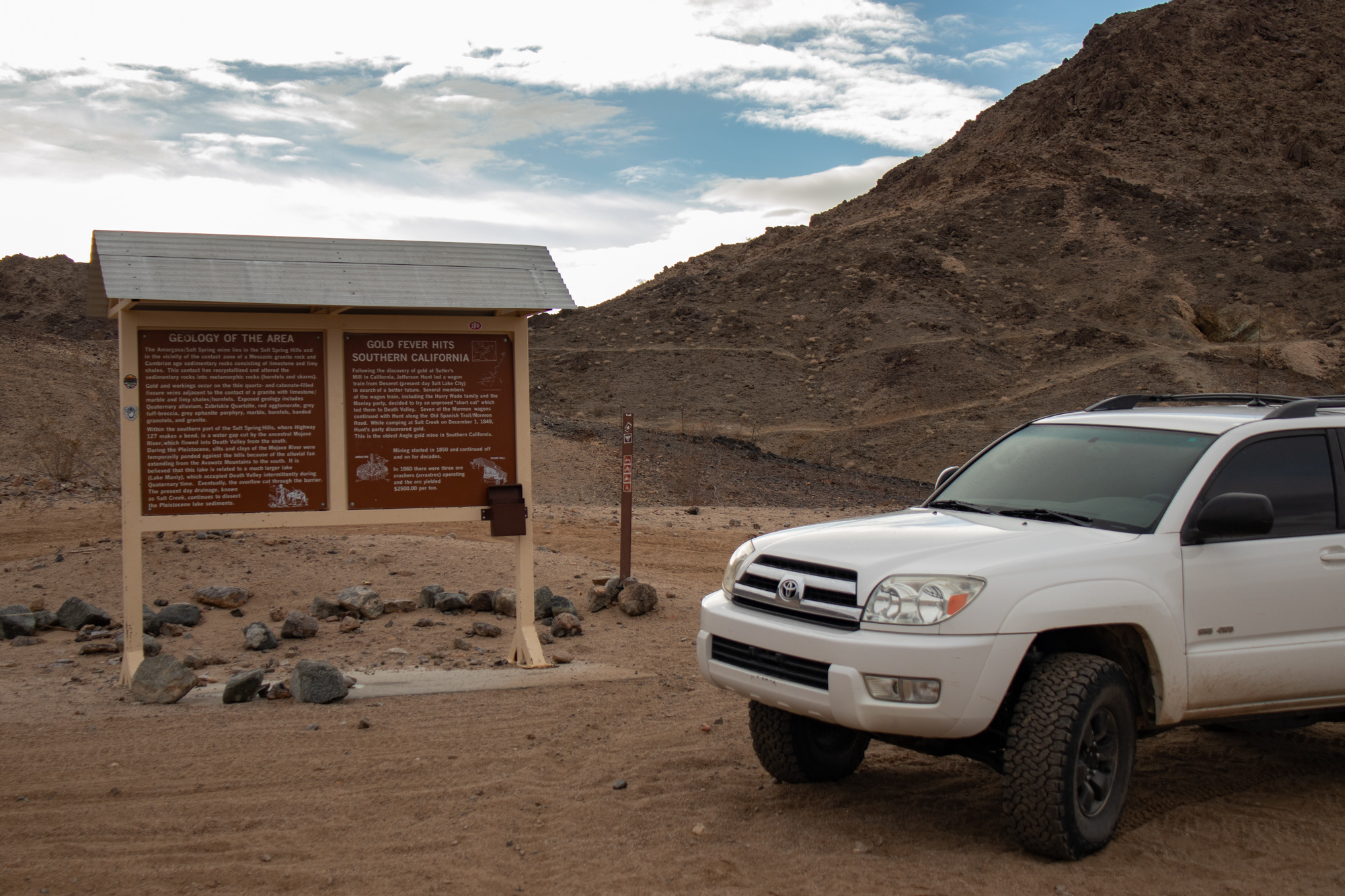
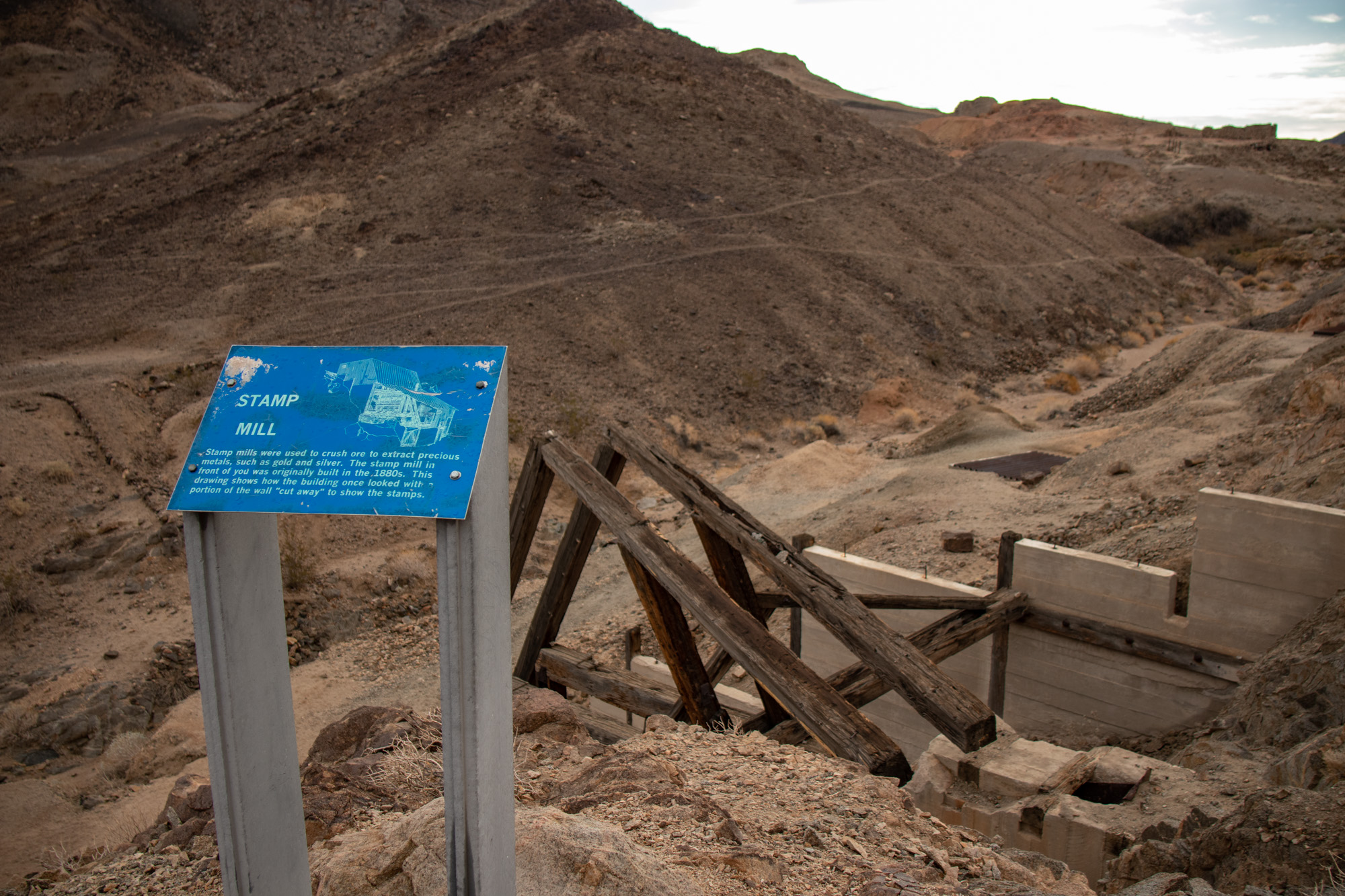 Stamp mills were used to crush ore to extract precious metals, such as gold and silver. The stamp mill in front of you was originally built in the 1880's. This drawing shows how the building once looked with a portion of the wall "cut away" to show the stamps.
Stamp mills were used to crush ore to extract precious metals, such as gold and silver. The stamp mill in front of you was originally built in the 1880's. This drawing shows how the building once looked with a portion of the wall "cut away" to show the stamps.
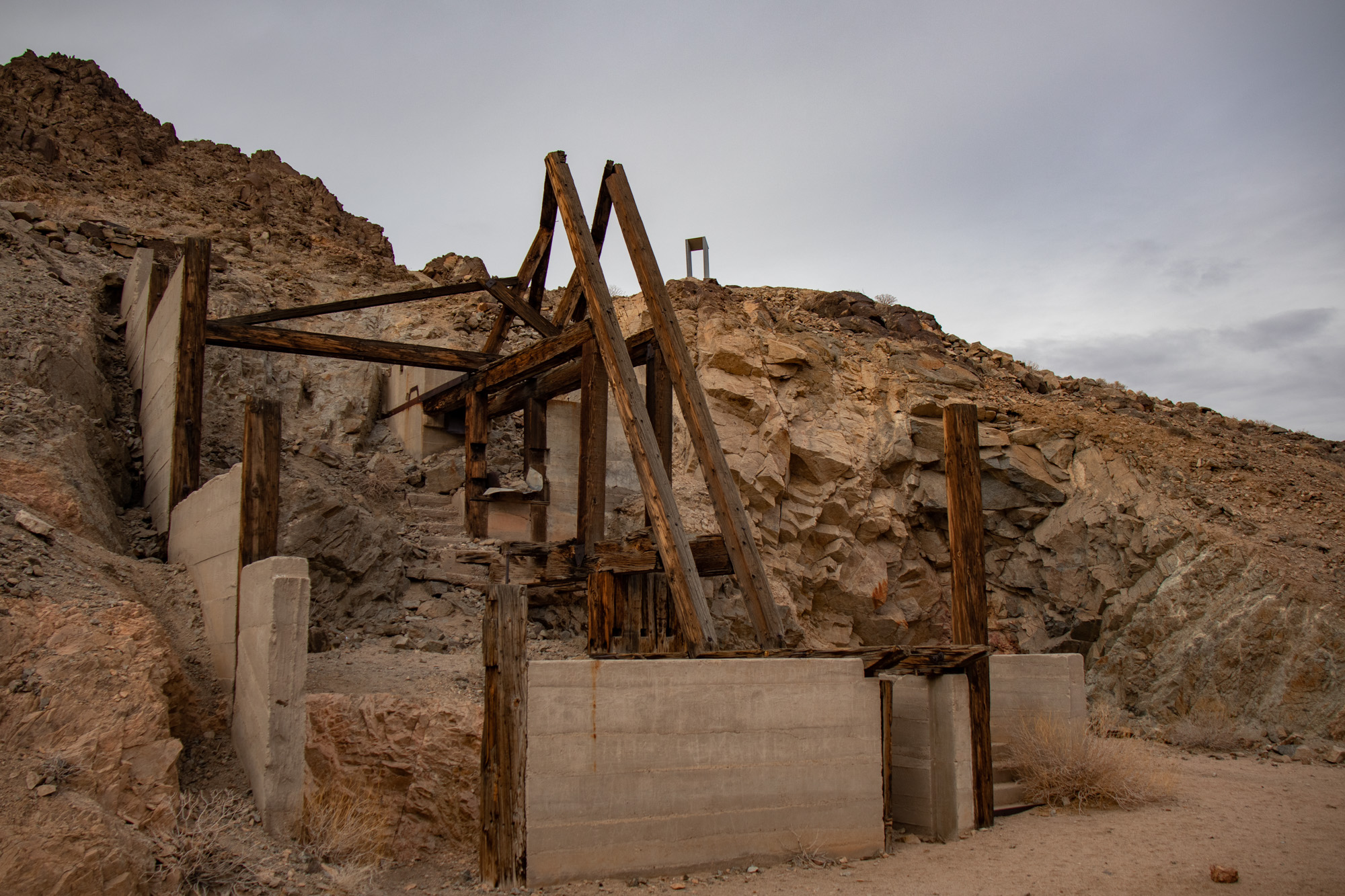
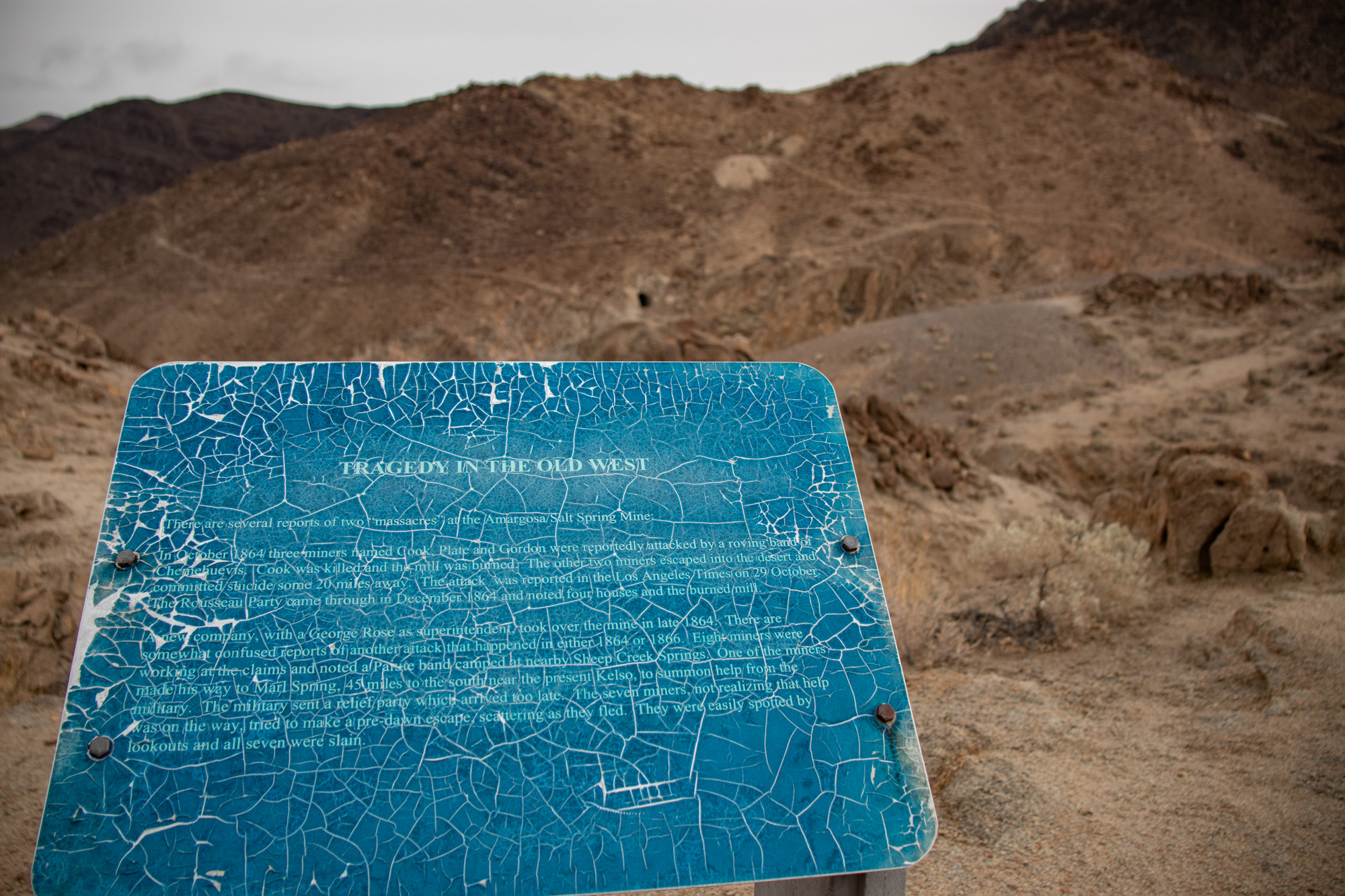 There were several reports of two "massacres" at the Amargosa Salt Spring Mine: In October 1864 three miners named Cook, Plate and Gordon were reportedly attacked by a roving band of Chemehuevis. Cook was killed and the mill was burned. The other two miners escaped into the desert and committed suicide some 20 miles away. The attack was reported in the Los Angeles Times on 29 October. The Rousseau Party came though in December 1864 and noted four houses and the burned mill.
There were several reports of two "massacres" at the Amargosa Salt Spring Mine: In October 1864 three miners named Cook, Plate and Gordon were reportedly attacked by a roving band of Chemehuevis. Cook was killed and the mill was burned. The other two miners escaped into the desert and committed suicide some 20 miles away. The attack was reported in the Los Angeles Times on 29 October. The Rousseau Party came though in December 1864 and noted four houses and the burned mill.
A new company, with a George Rose as superintendent took over the mine in late 1864. There are somewhat confused reports of another attack that happened in either 1864 or 1866. Eight miners were working at the claims and noted a Paiute band camped at nearby Sheep Creep Springs. One of the miners made his way to Marl Springs, 45 miles to the south near the present Kelso, to summon help from the Military. The military sent a relief party which arrived too late. The seven miners, not realizing that help was on the way, tried to make a pre-dawn escape, scattering as they fled. They were easily spotted by lookouts and all seven were slain.
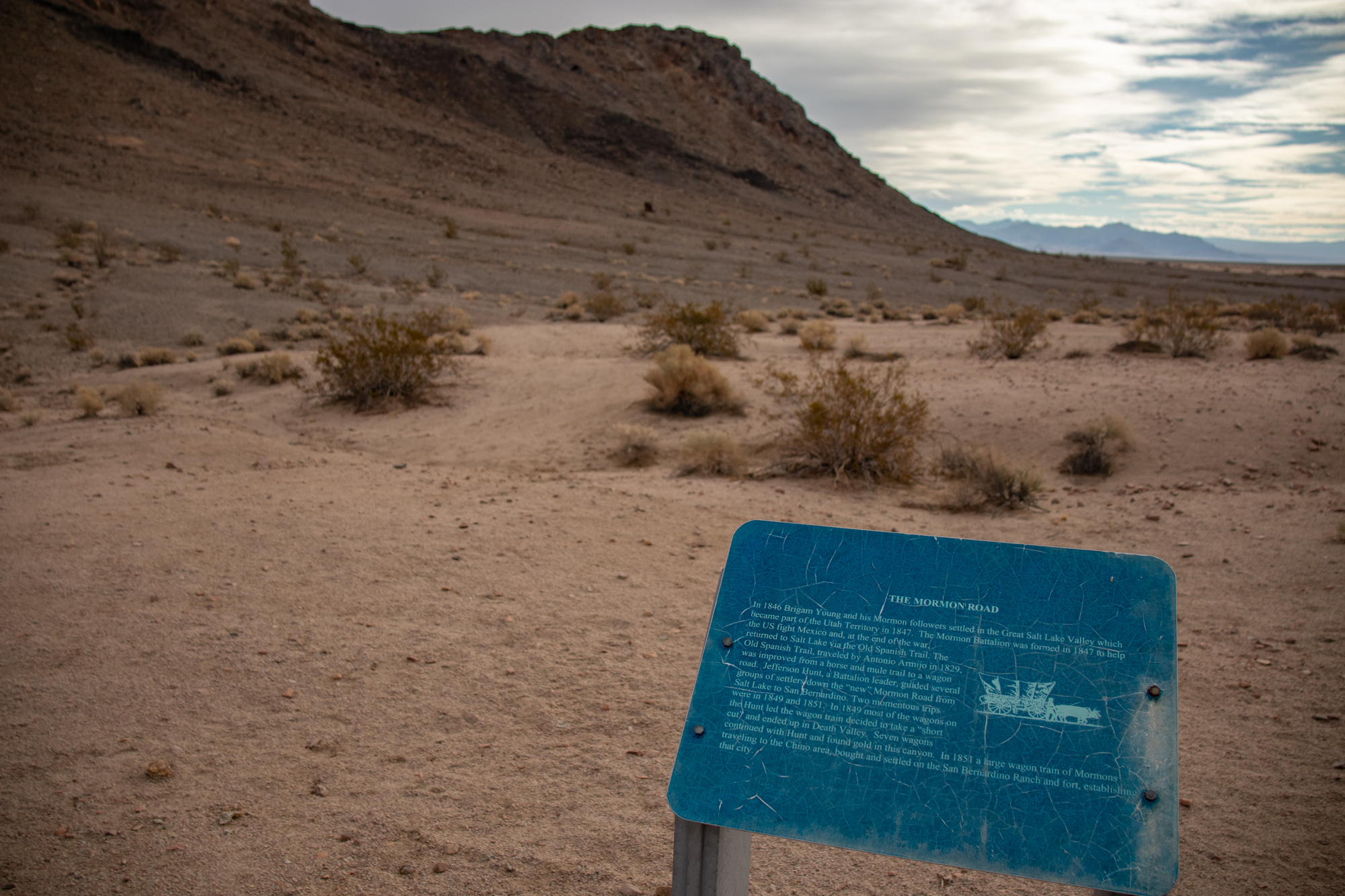 In 1846 Brigam Young and his Mormon followers settled in the Great Sale Lake Valley which became part of the Utah Territory in 1847. The Mormon Battalion was formed in 1847 to help the US fight Mexico and, at the end of the war, returned to Salt Lake via the Old Spanish Trail. The Old Spanish Trail, traveled by Antonio Armijo in 1829, was improved from a horse and mule trail to a wagon road.
In 1846 Brigam Young and his Mormon followers settled in the Great Sale Lake Valley which became part of the Utah Territory in 1847. The Mormon Battalion was formed in 1847 to help the US fight Mexico and, at the end of the war, returned to Salt Lake via the Old Spanish Trail. The Old Spanish Trail, traveled by Antonio Armijo in 1829, was improved from a horse and mule trail to a wagon road.
Jefferson Hunt, a Battalion leader, guided several groups of settlers down the "new" Mormon Road from Salt Lake to San Bernardino. Two momentous trips were in 1849 and 1851. In 1849 most of the wagons on the Hunt led wagon train decided to take a "short cut" and ended up in Death Valley. Seven wagons continued with Hunt and found gold in this canyon.
In 1851 a large wagon train of Mormons traveling to the Chino area, bought and settled on the San Bernardino Ranch and fort, establishing that city.
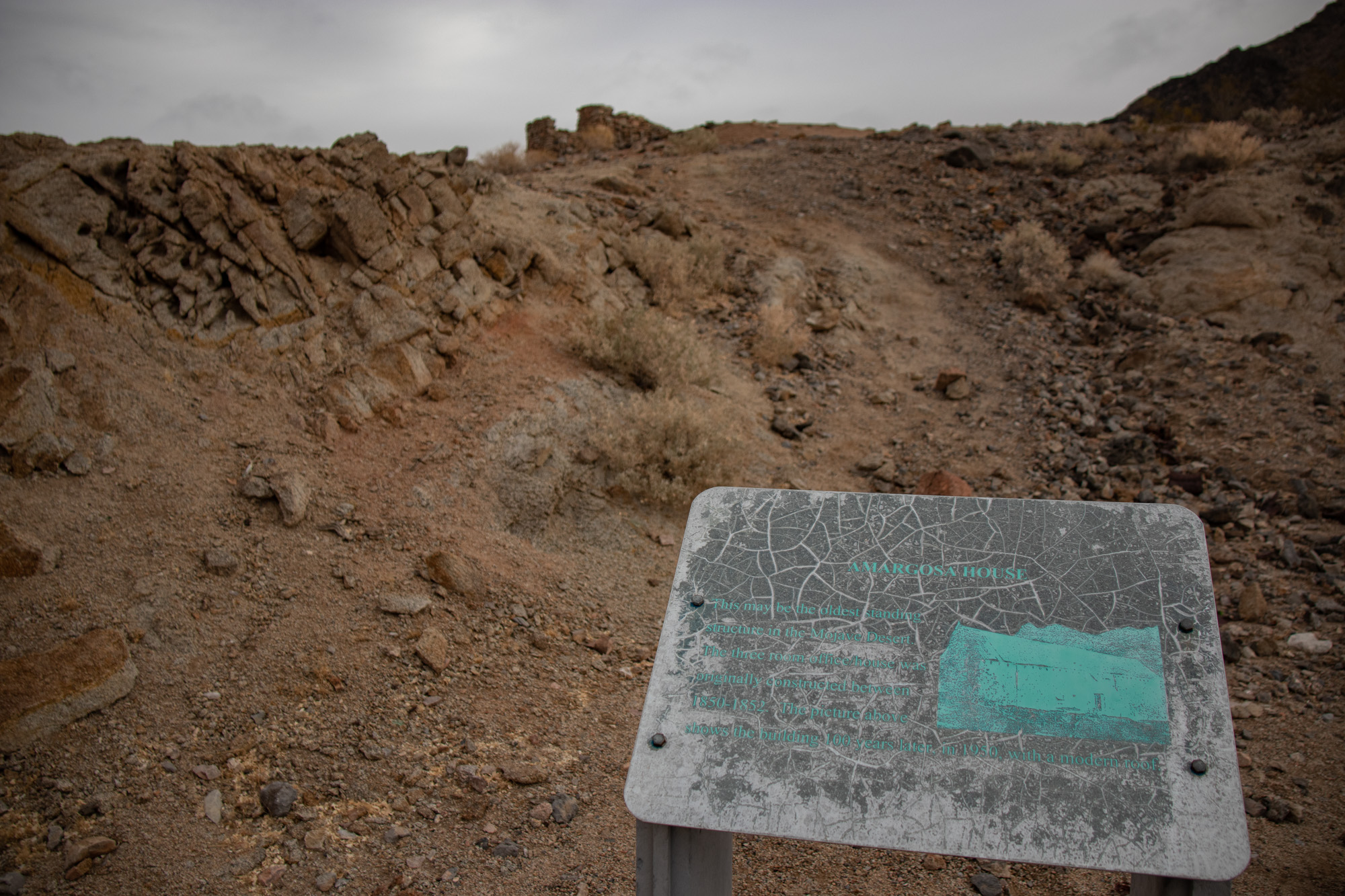 This may be the oldest standing structure in the Mojave Desert. The three room office/house was originally constructed between 1850-1852.
This may be the oldest standing structure in the Mojave Desert. The three room office/house was originally constructed between 1850-1852.
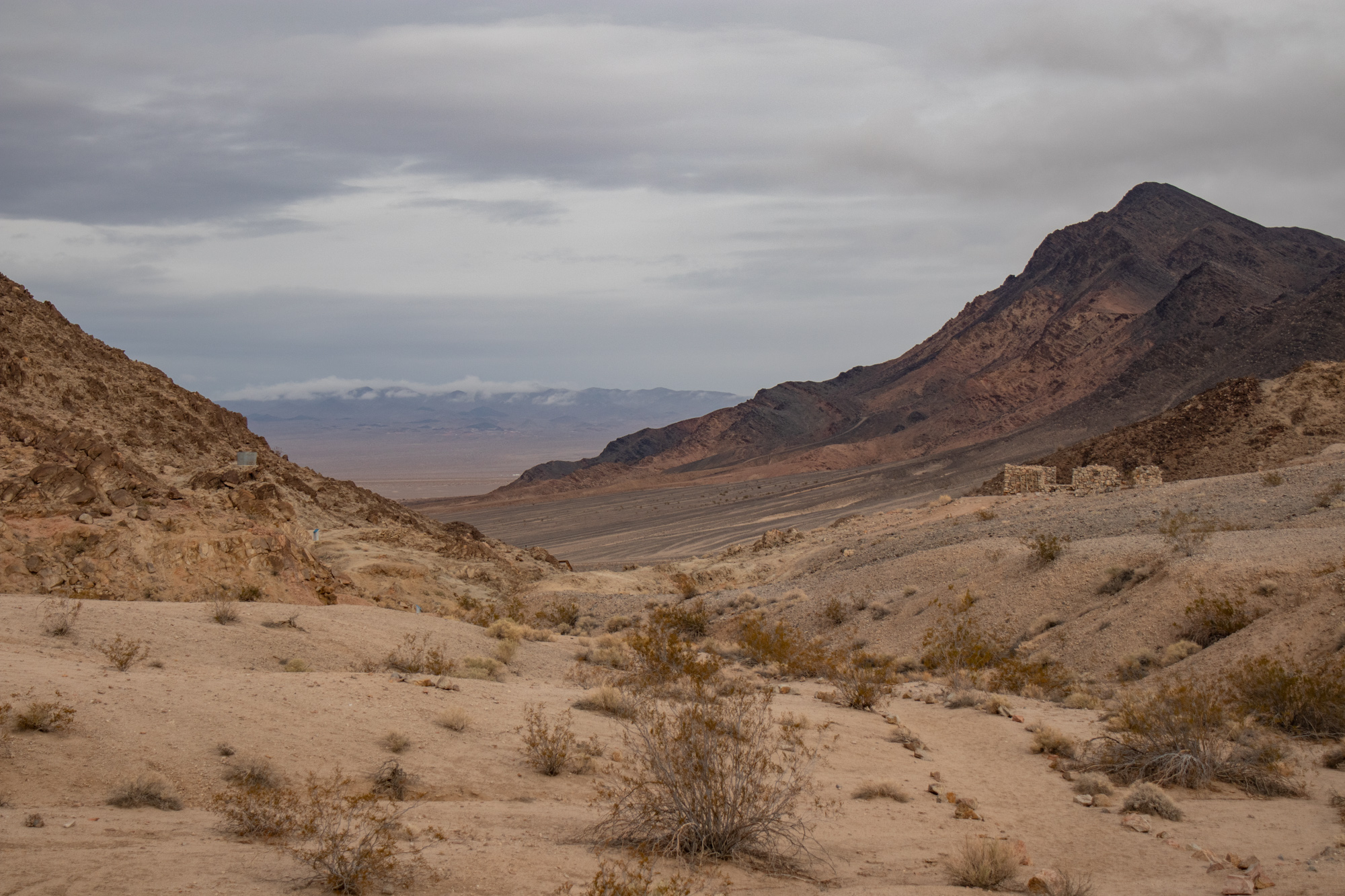
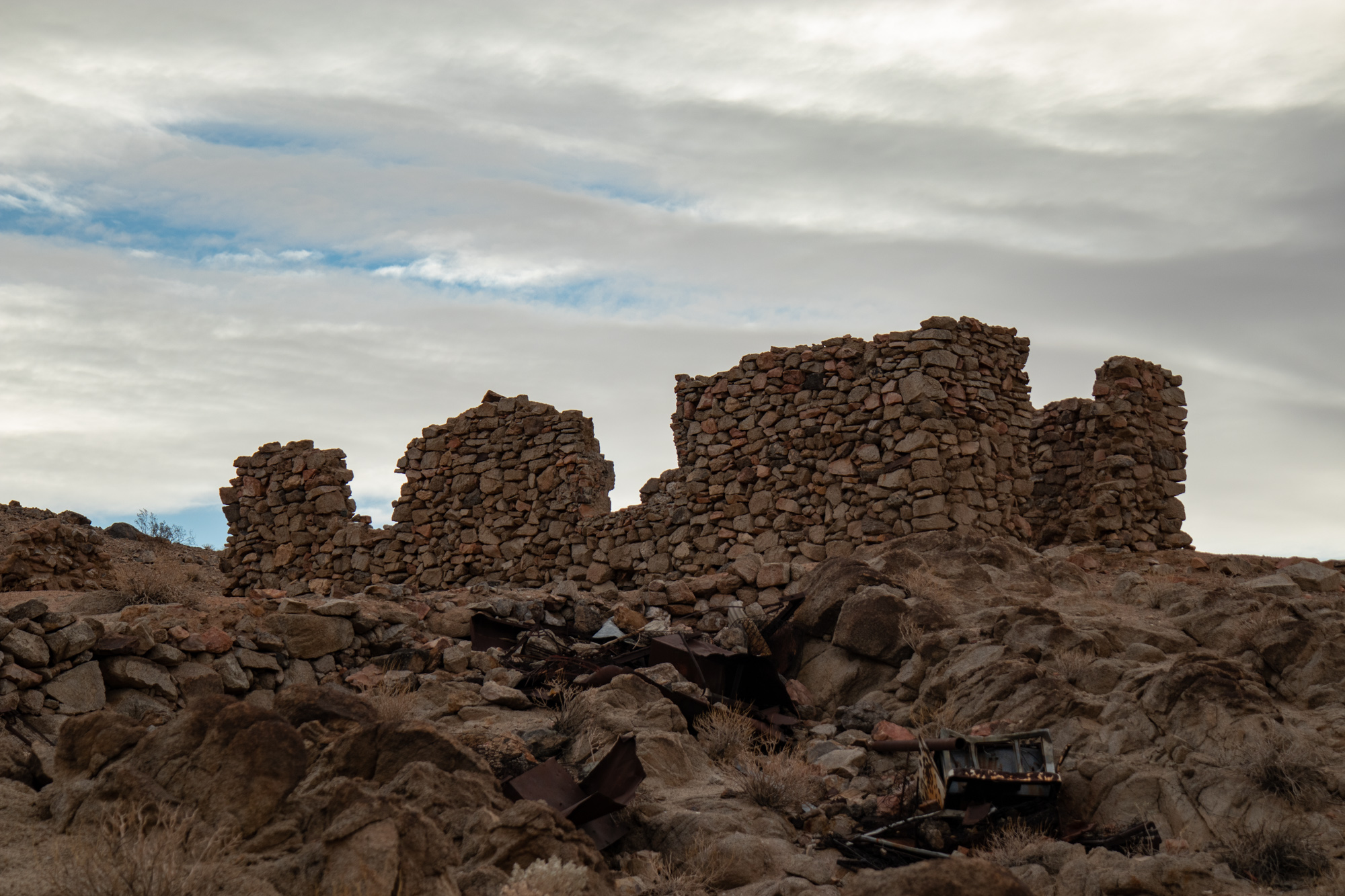
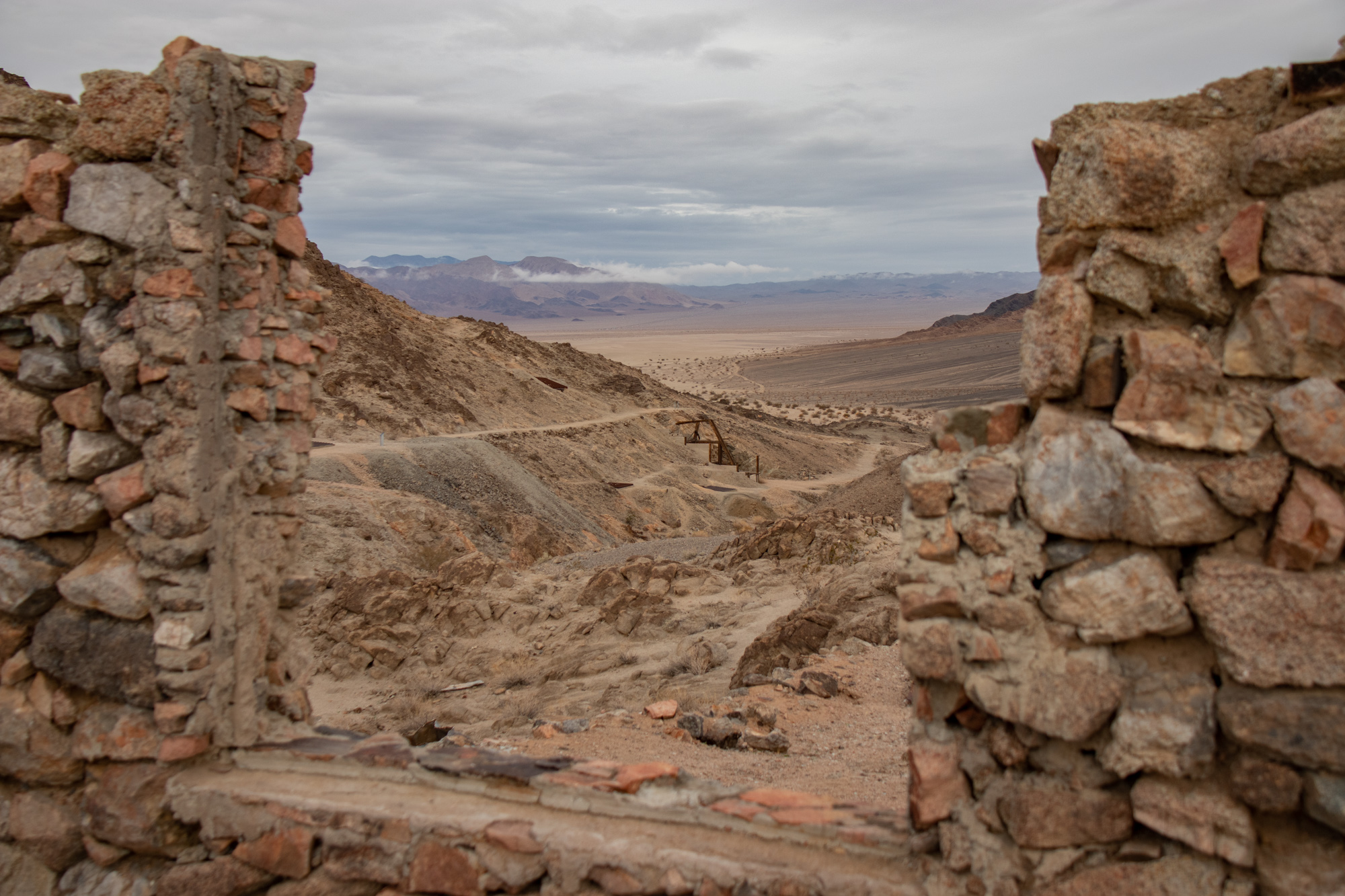
Super cool checking that out. Glad it's accessible and information is all there for those that want to explore and learn. Neat stuff.
Joined back up with the 127 then exited at the dry Silurian Lake. At least I was hoping it was dry. Given the recent weather and past experiences getting stuck (real bad I might add) in the muck on a playa, I was a tad apprehensive. I stopped, got out, walked on it, jumped on it, poked at it with a stick then decided to hit it with speed.
All was good. Solid and dry ground.
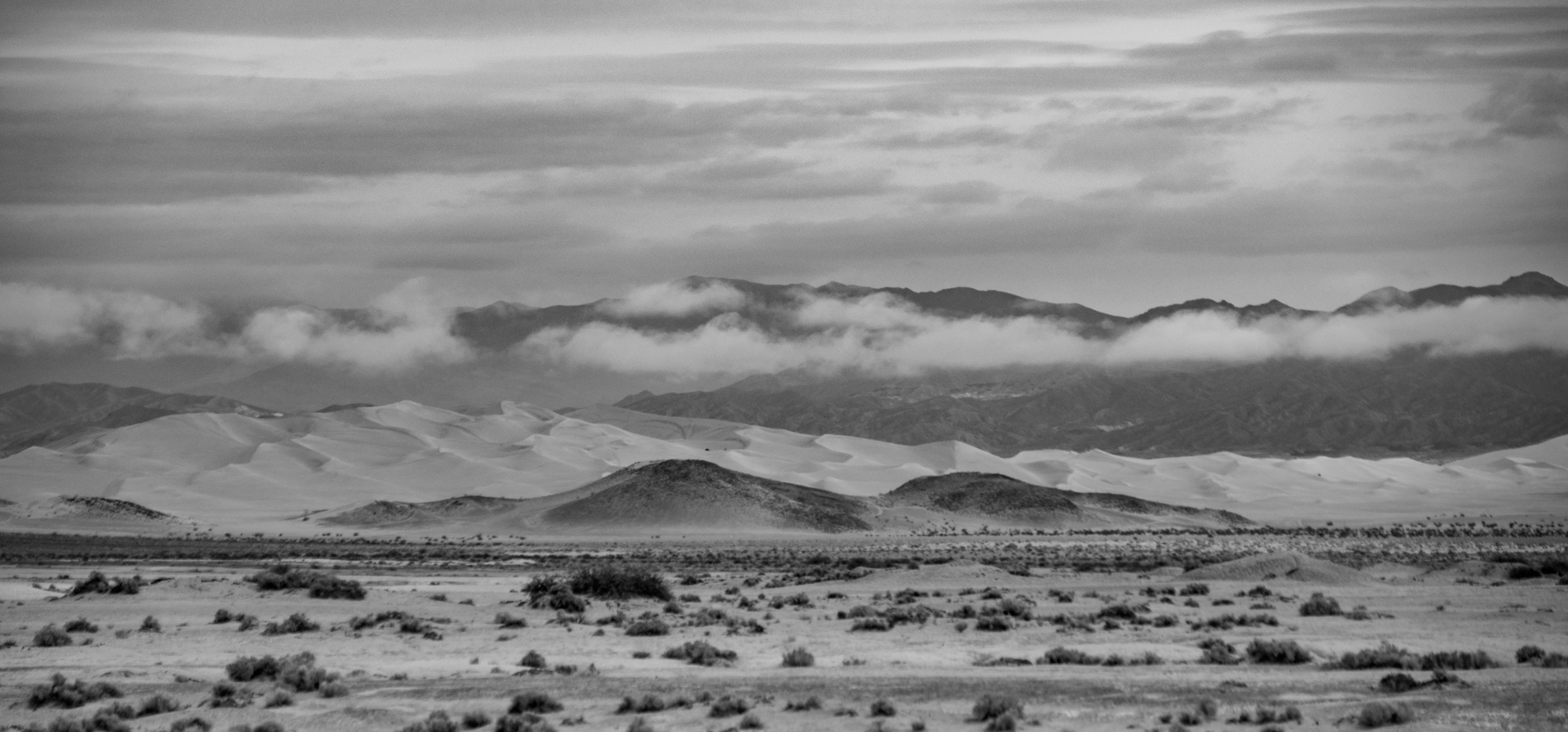
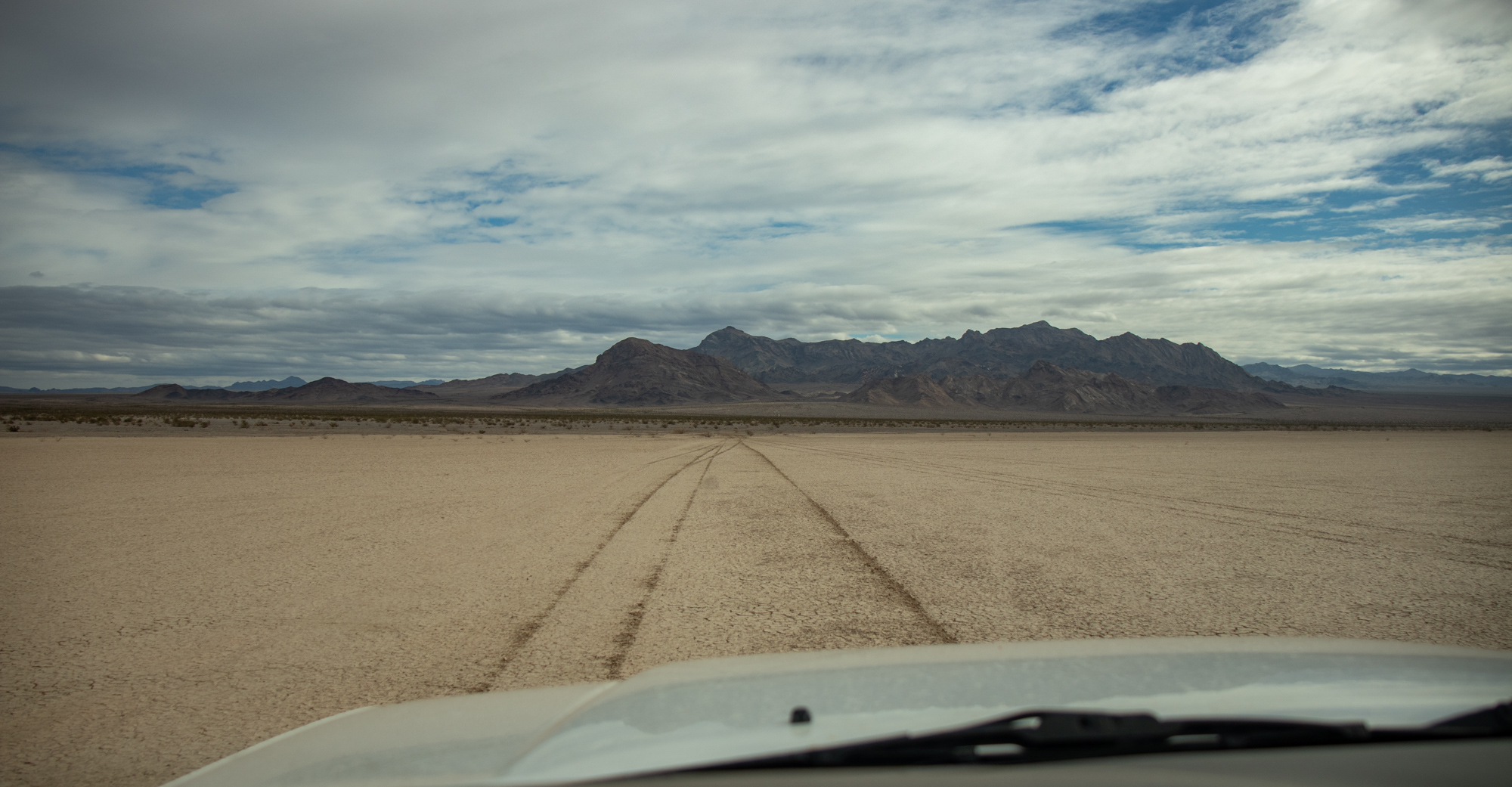
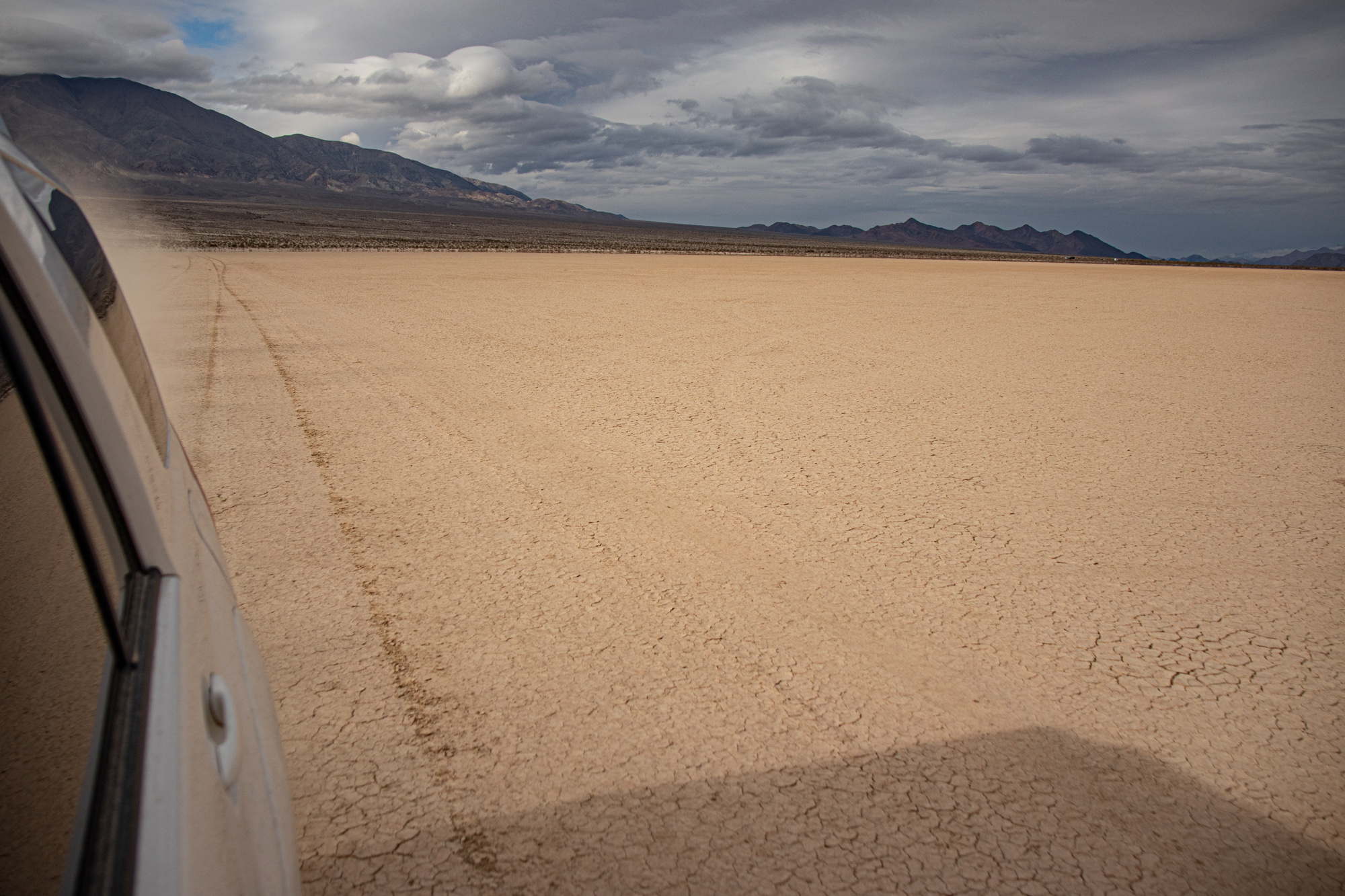
Worked myself into the Silurian Hills and the old railroad bed of the Tonopah and Tidewater.
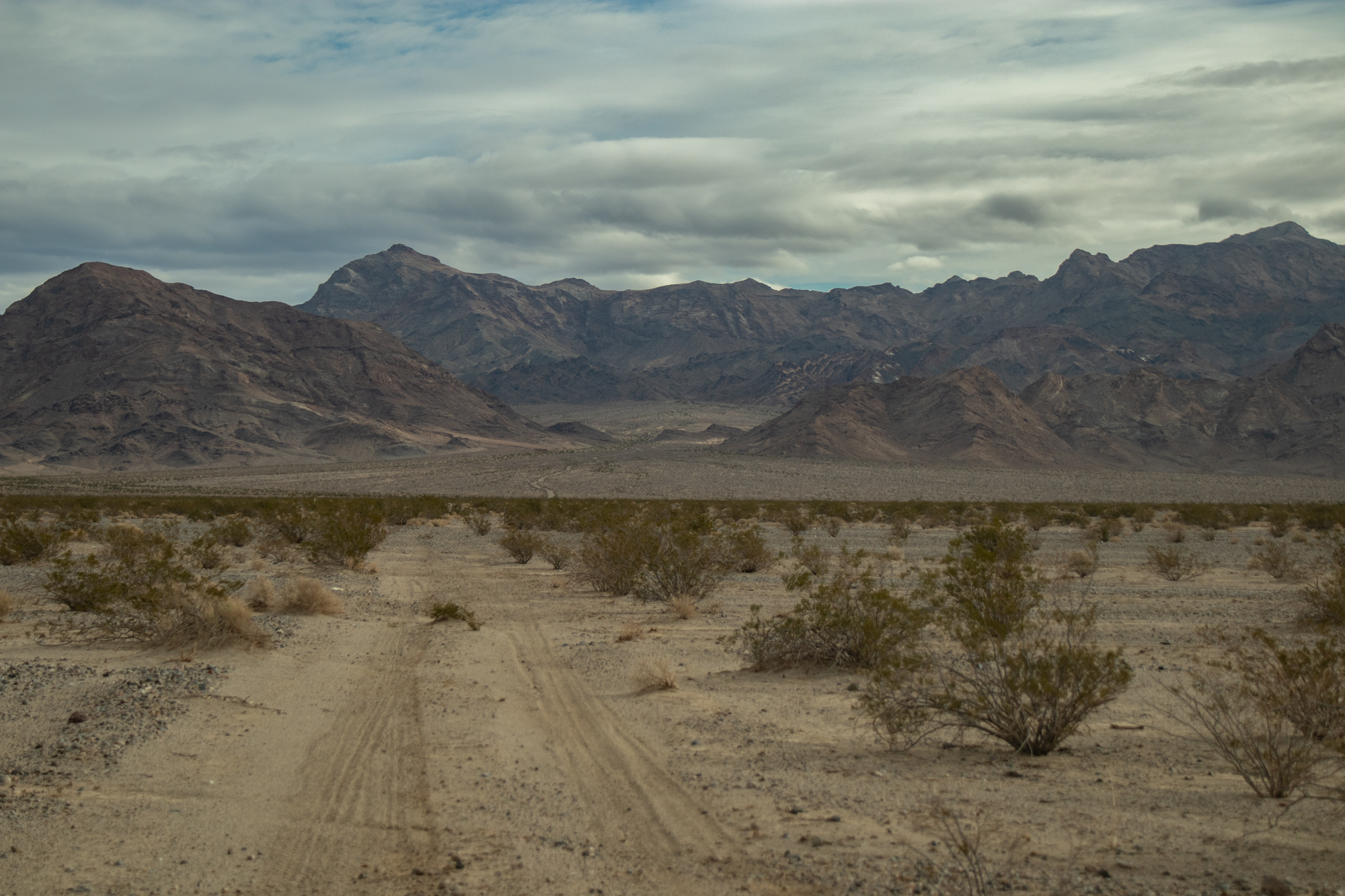
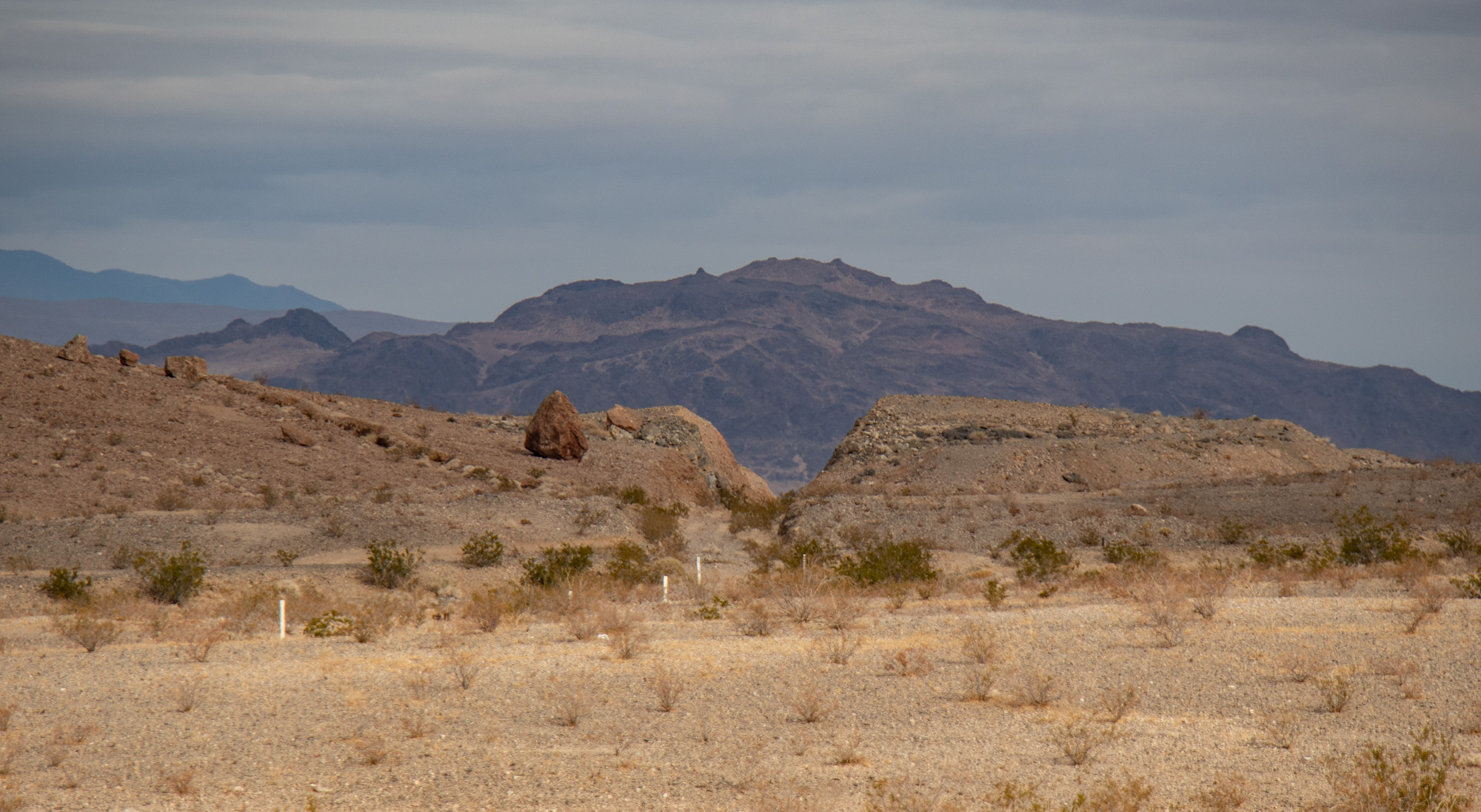
A bit further up is the Annex Mine. A small cabin rests at the foothills.
